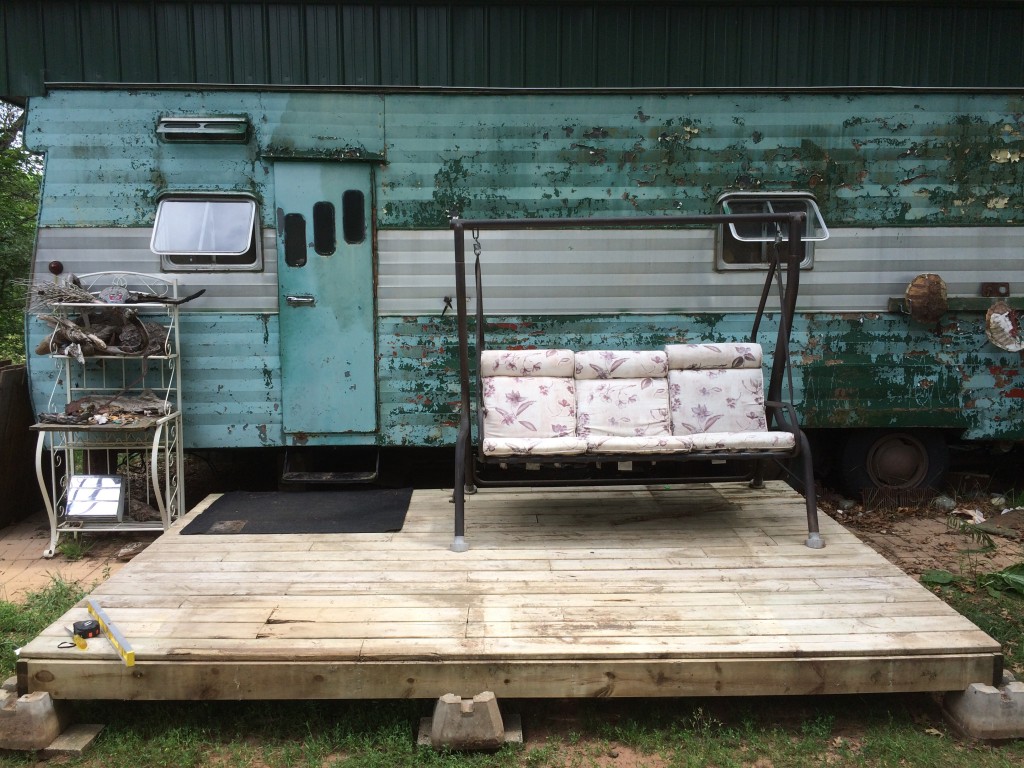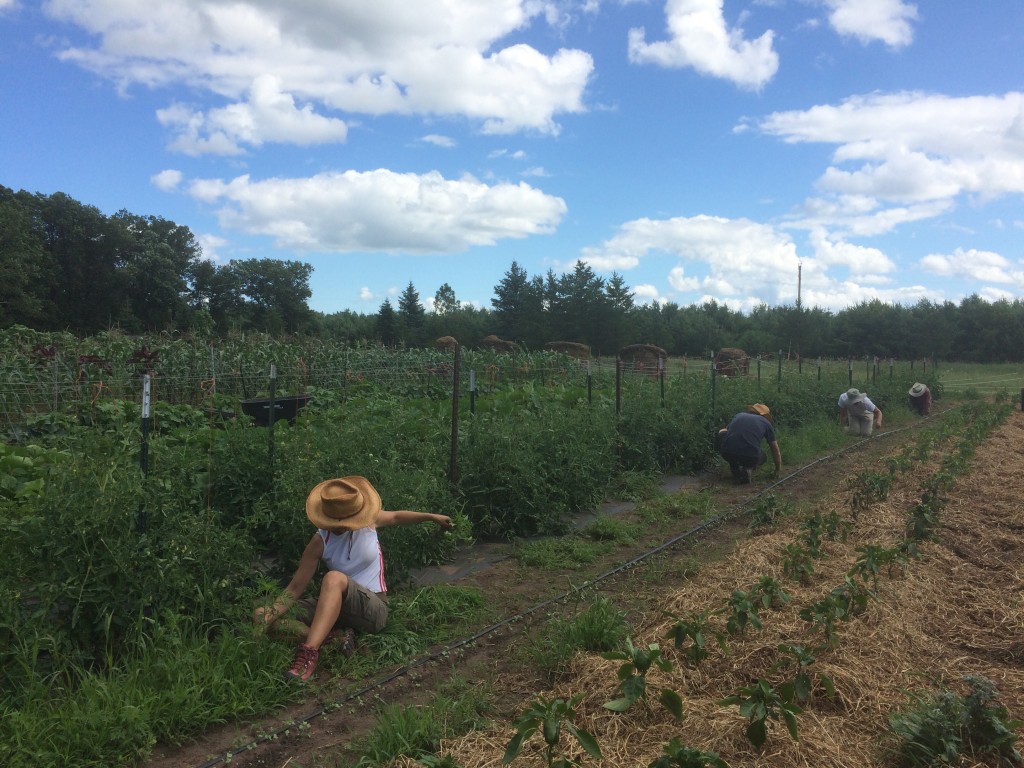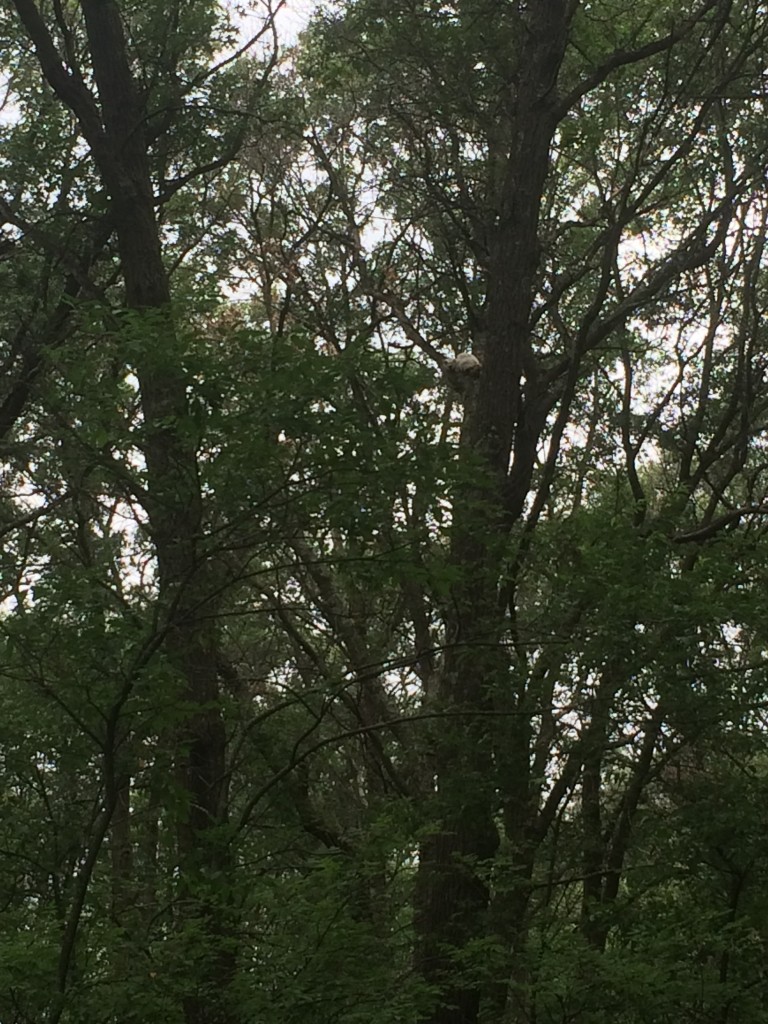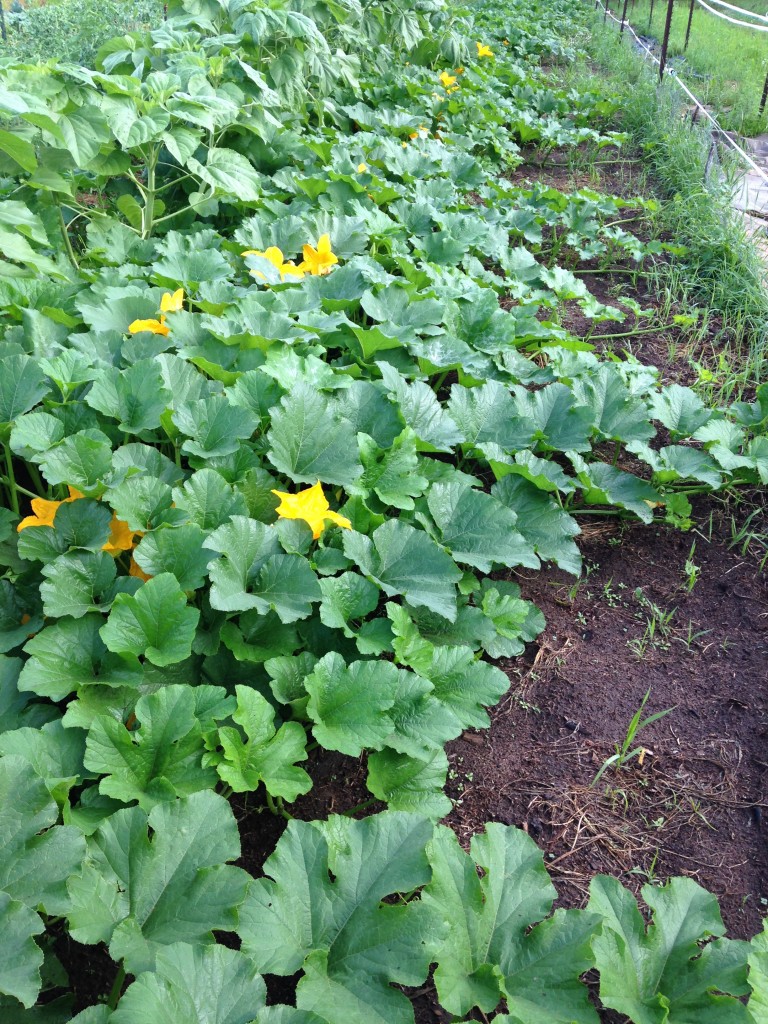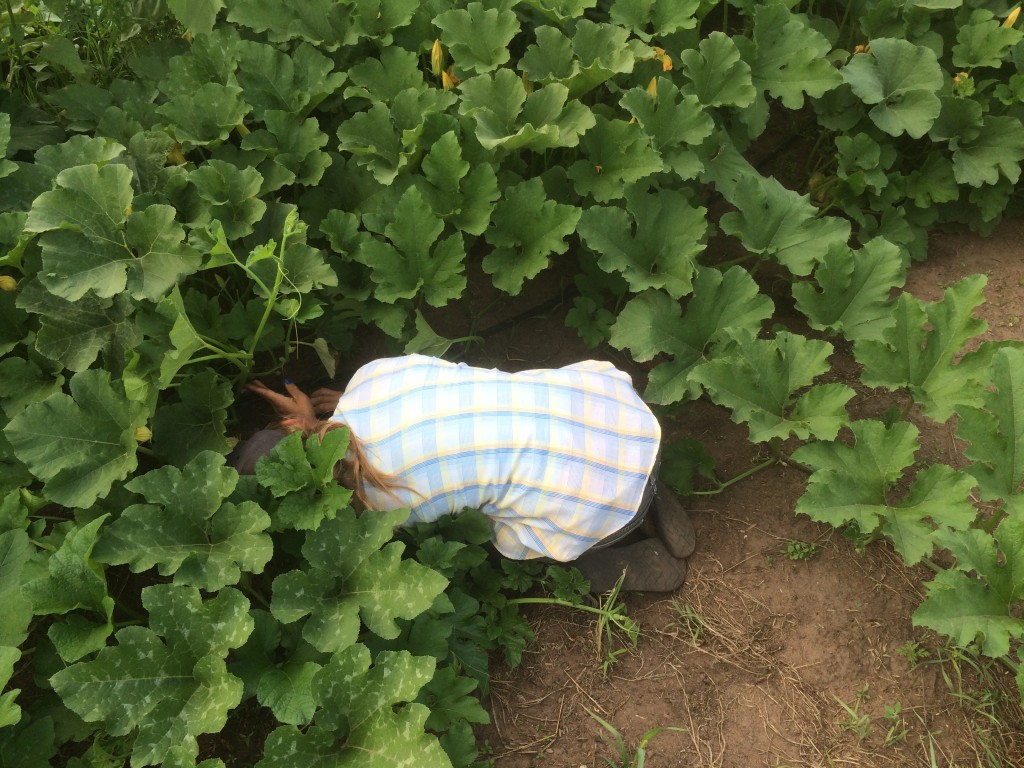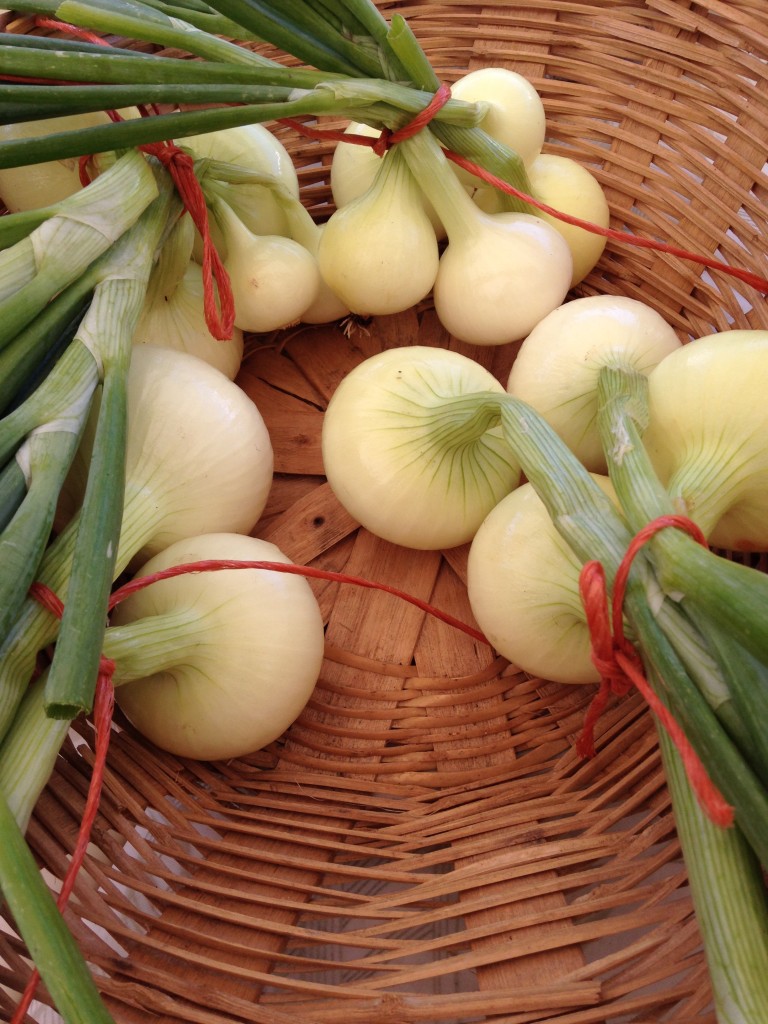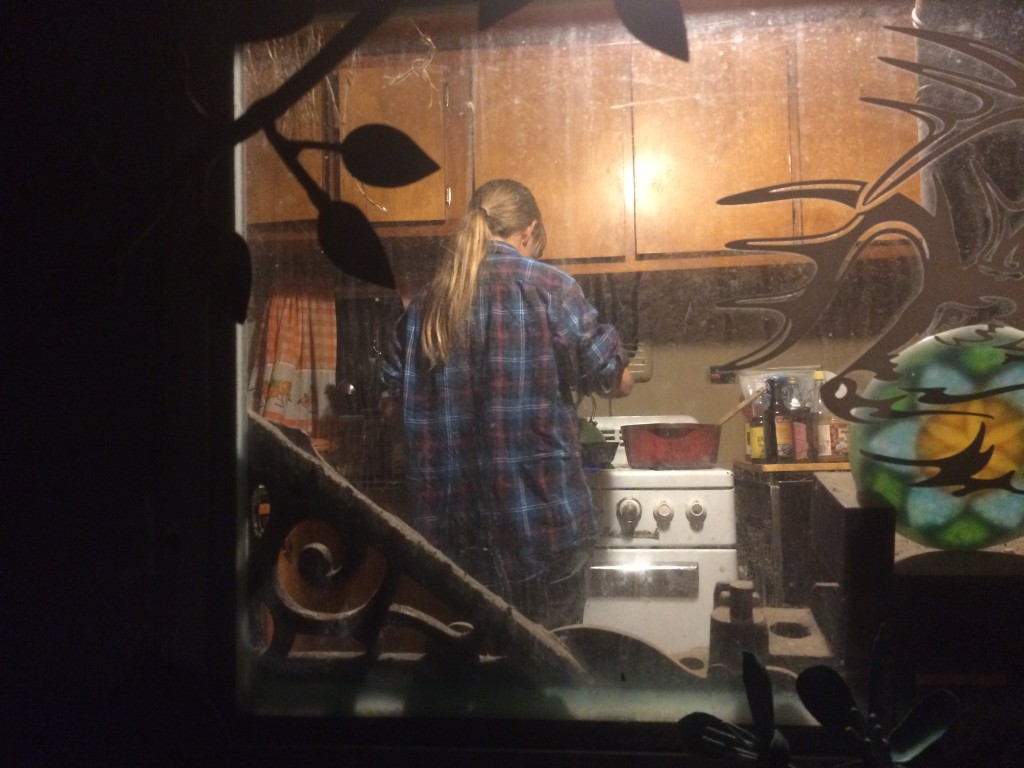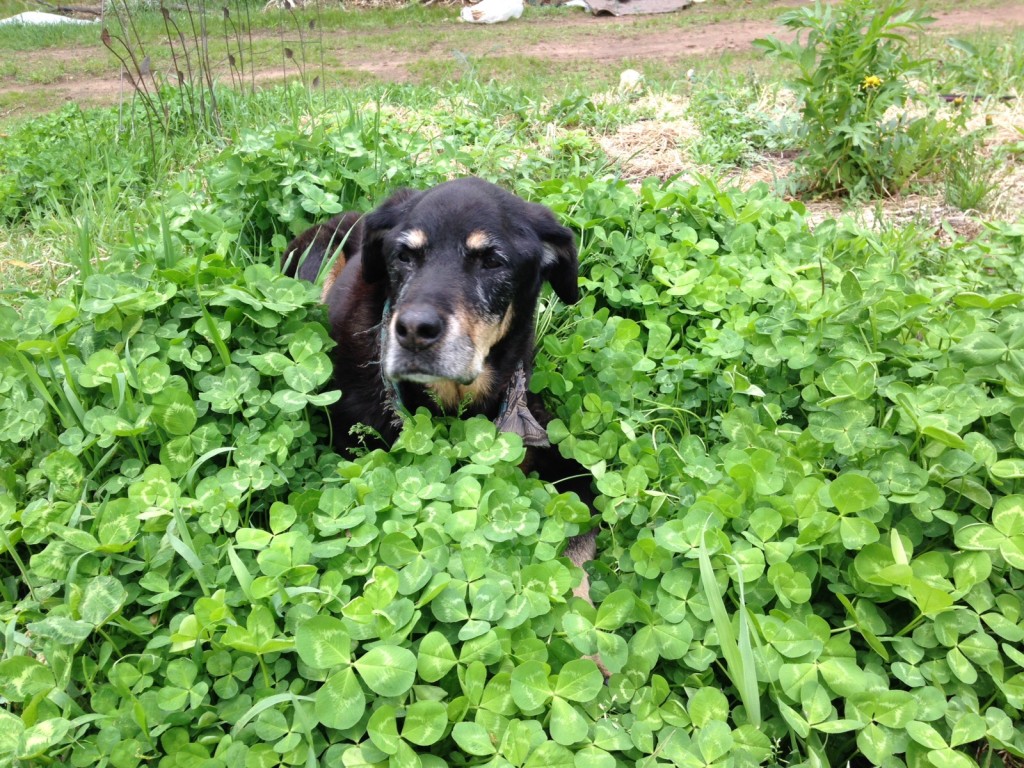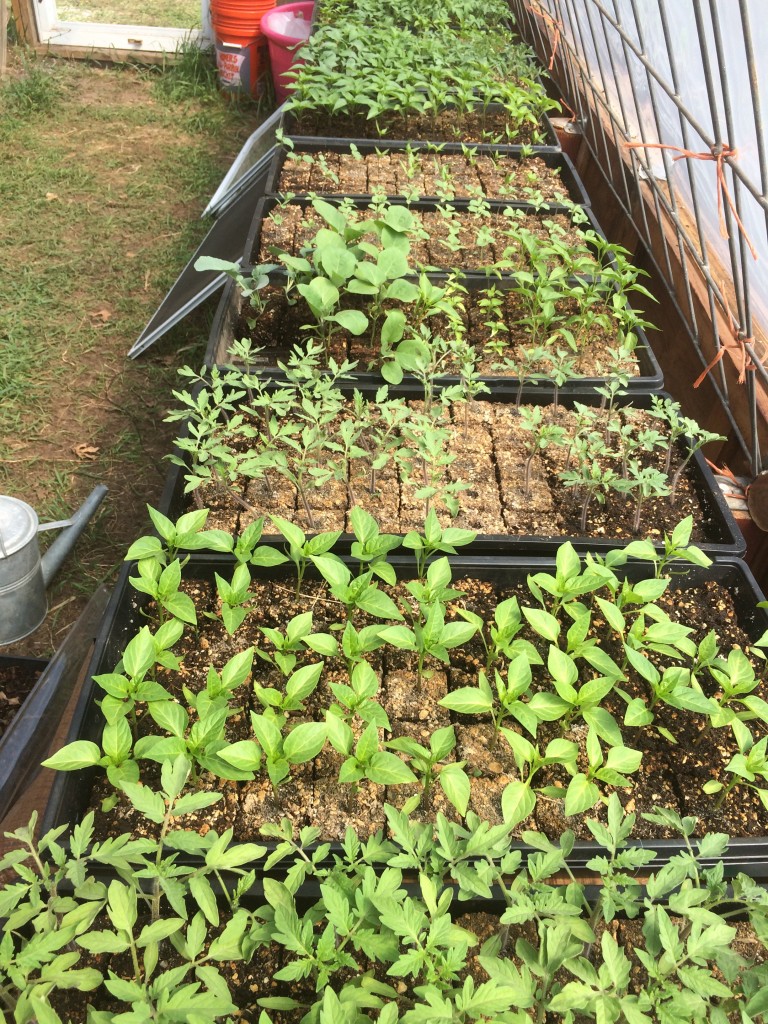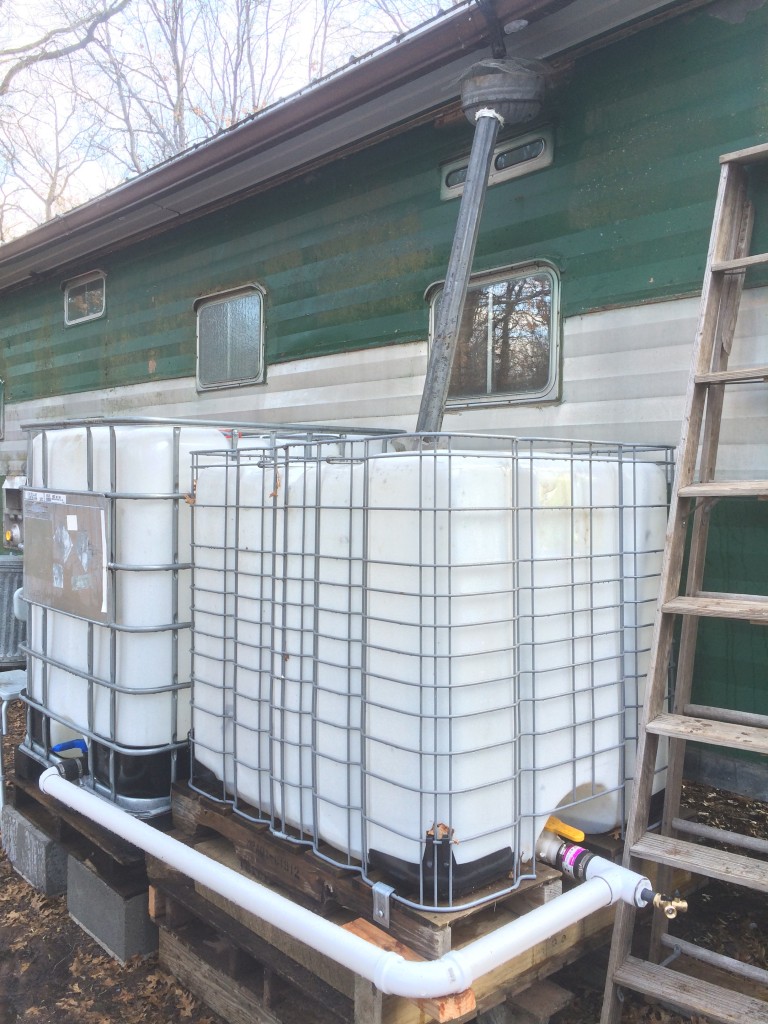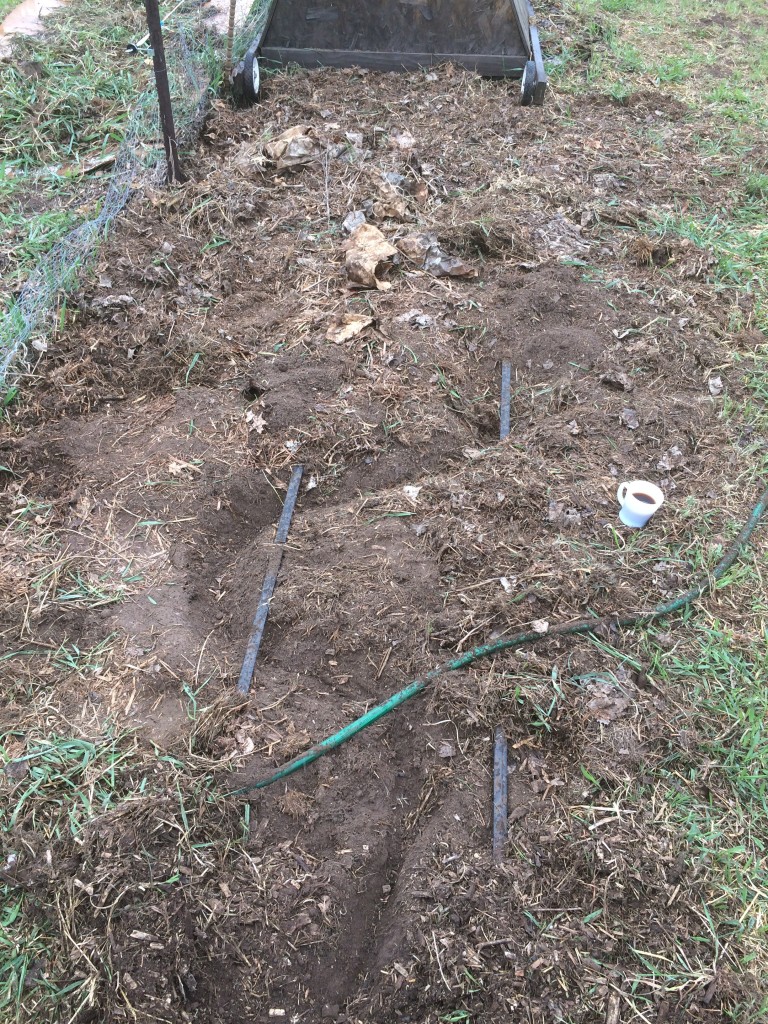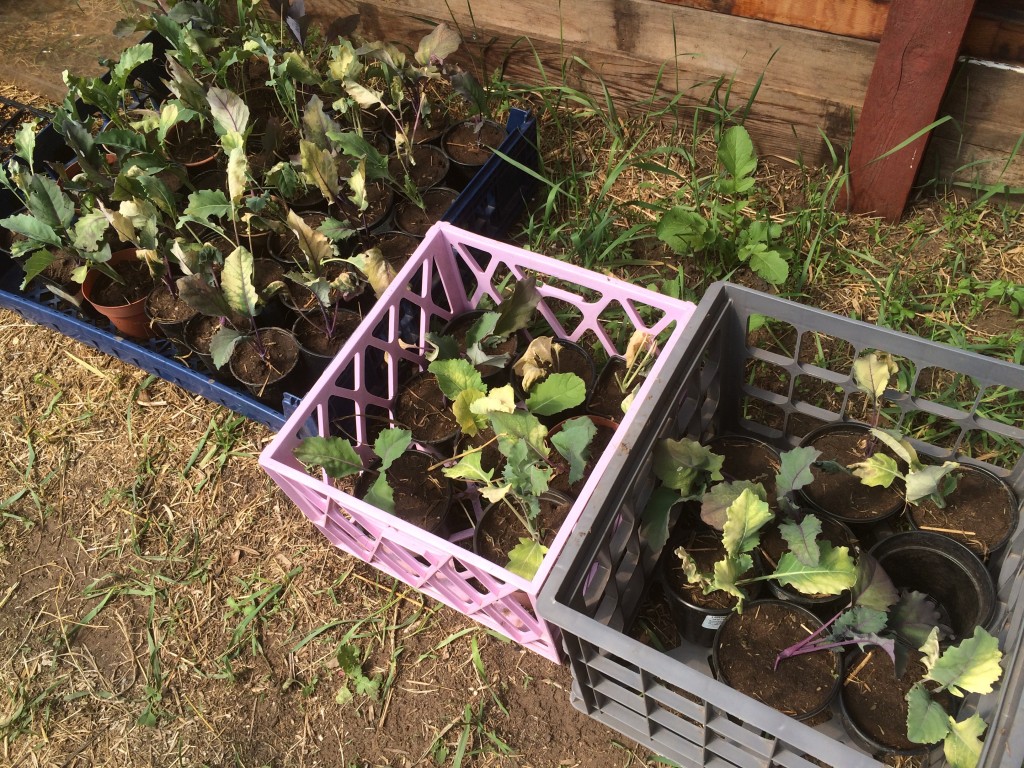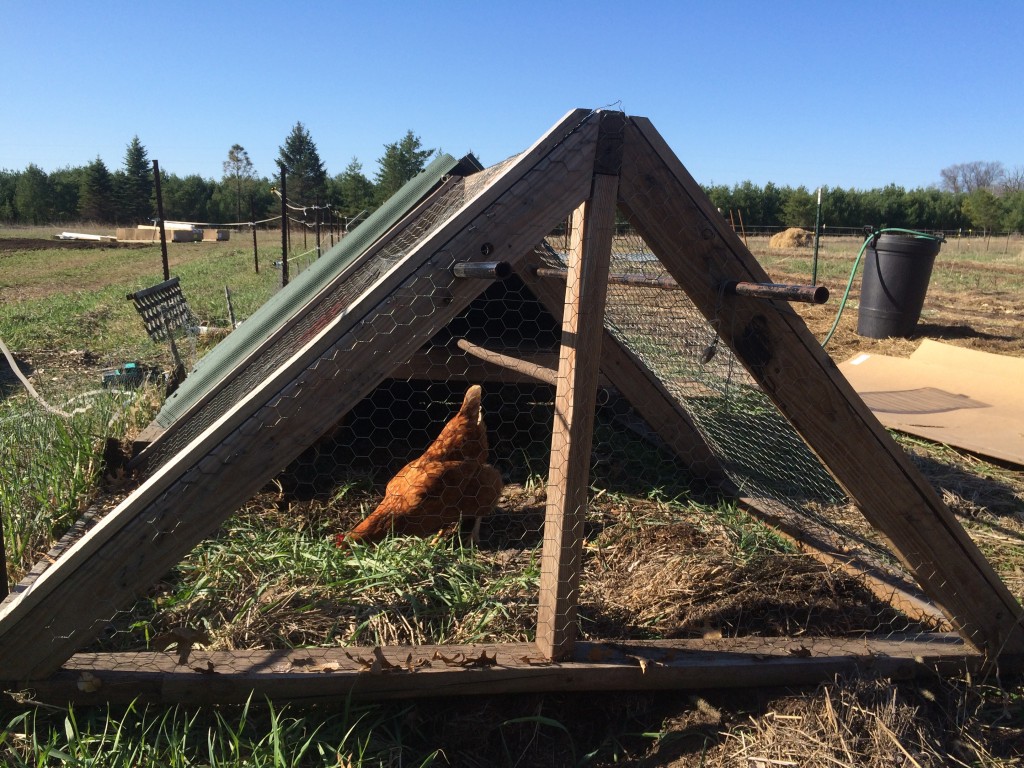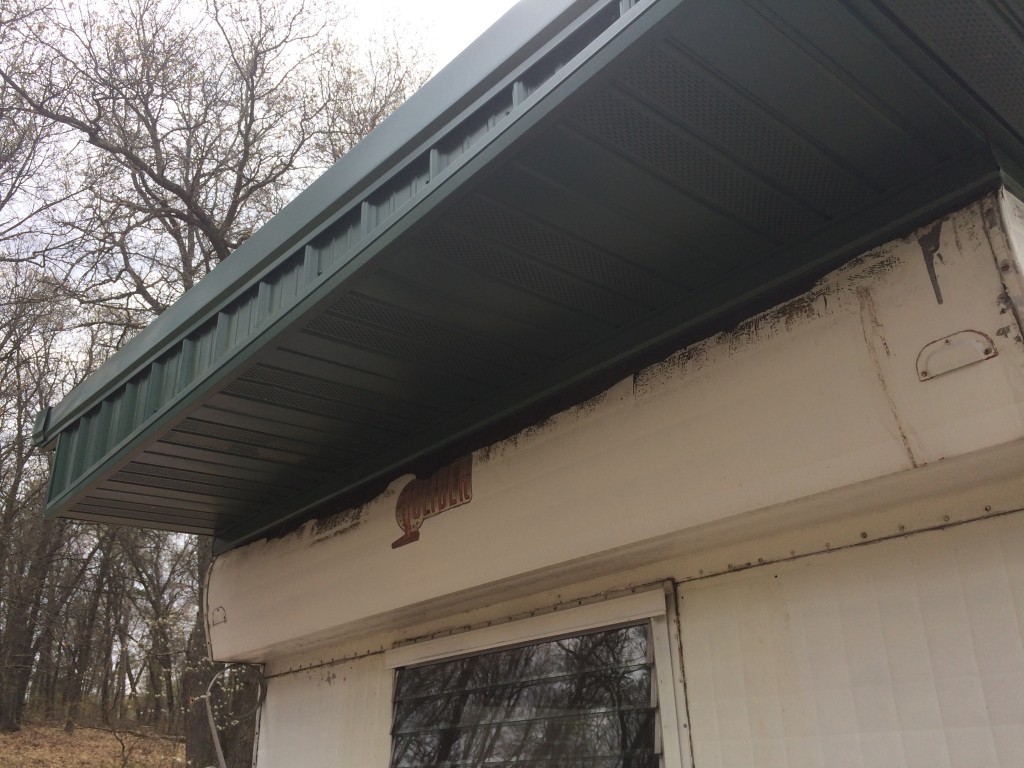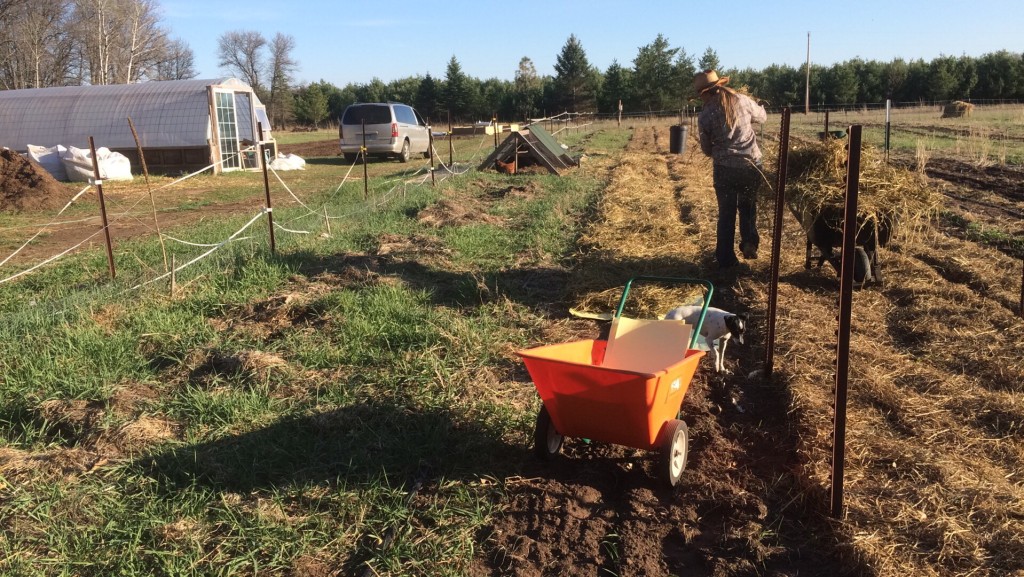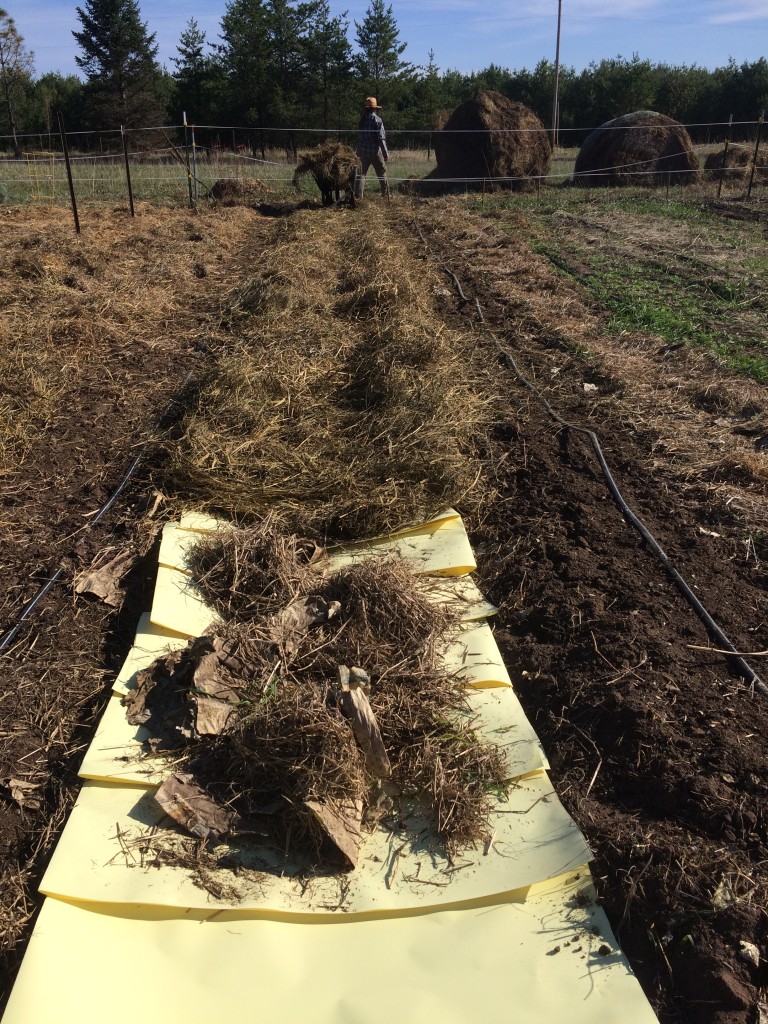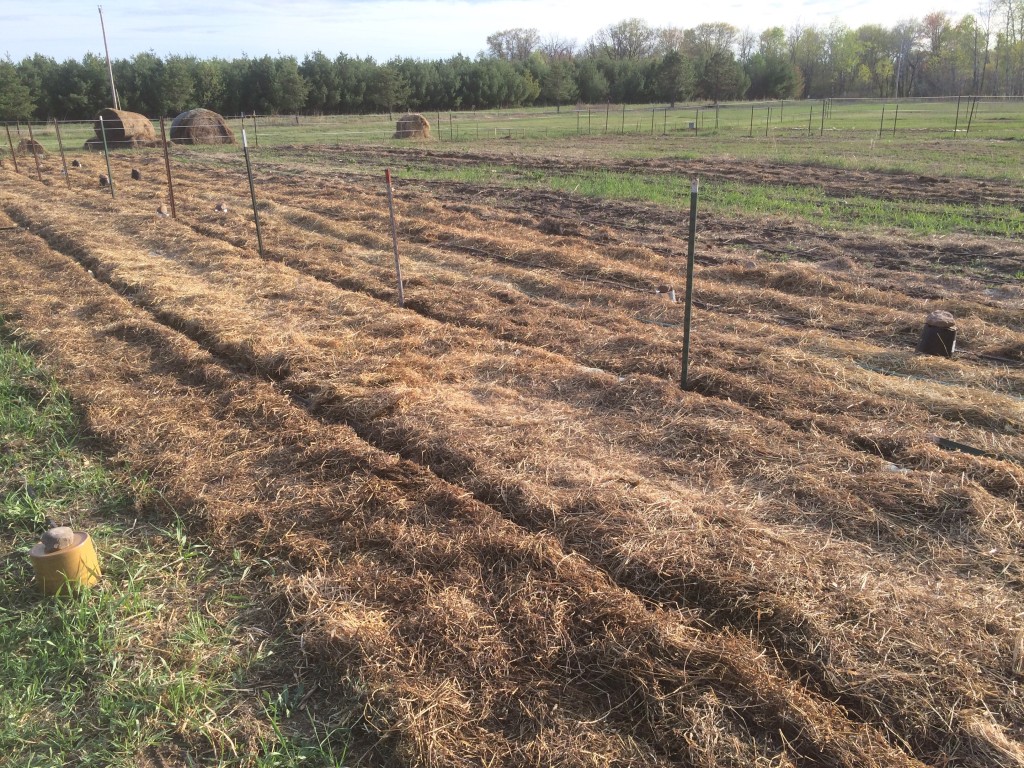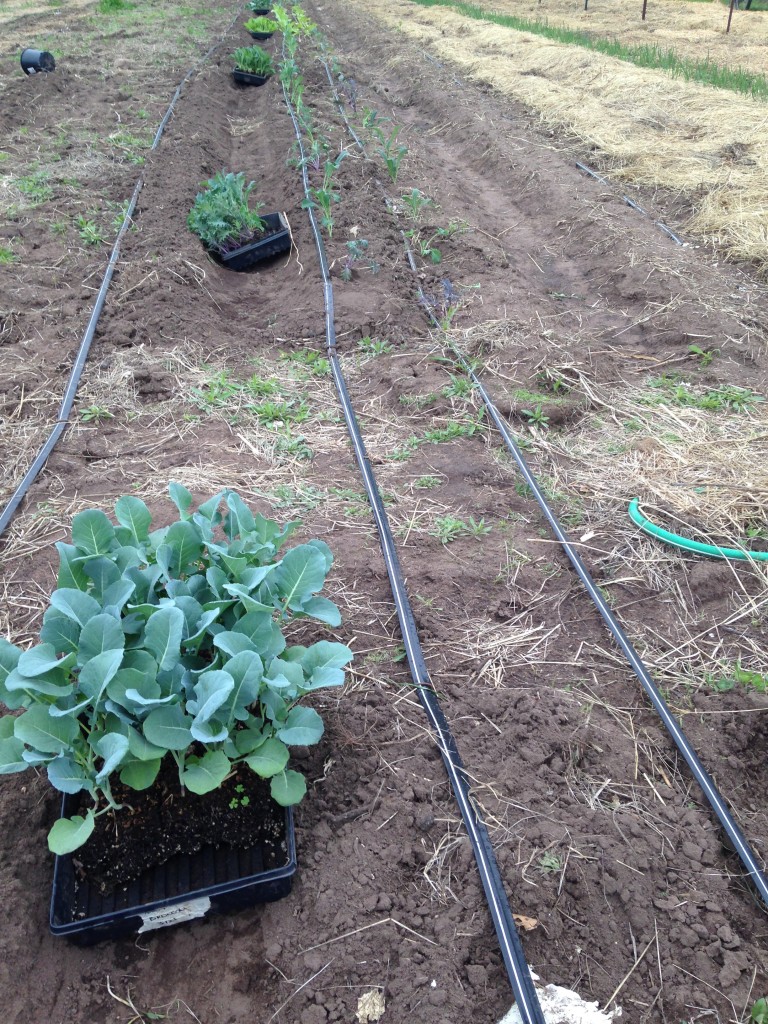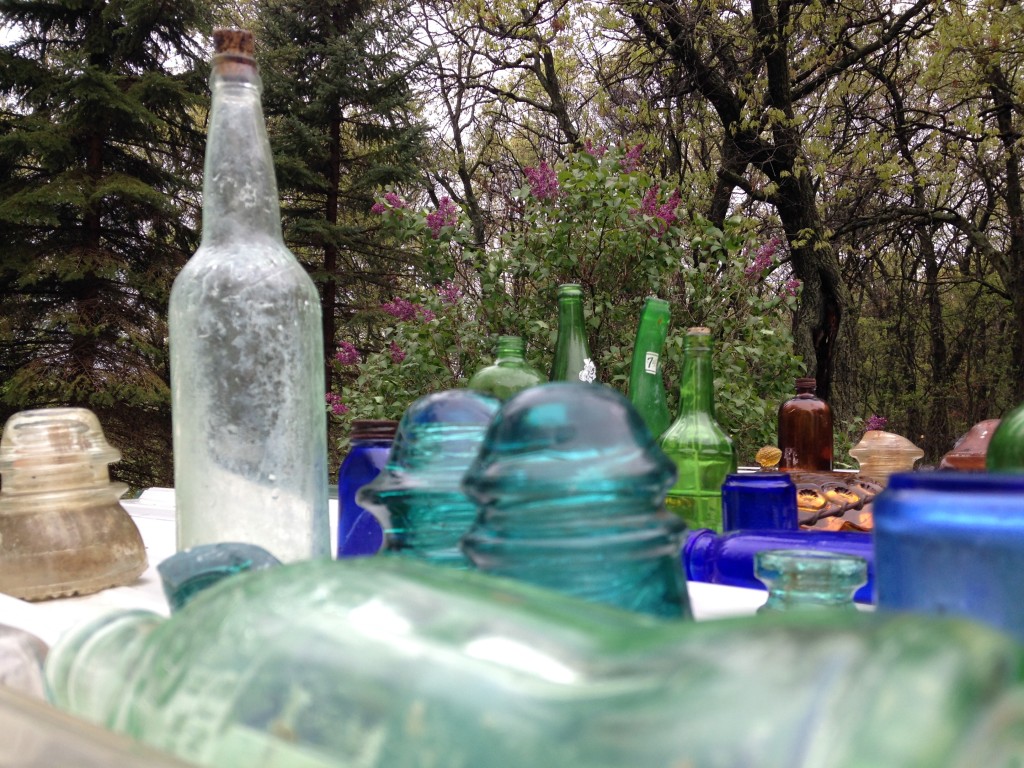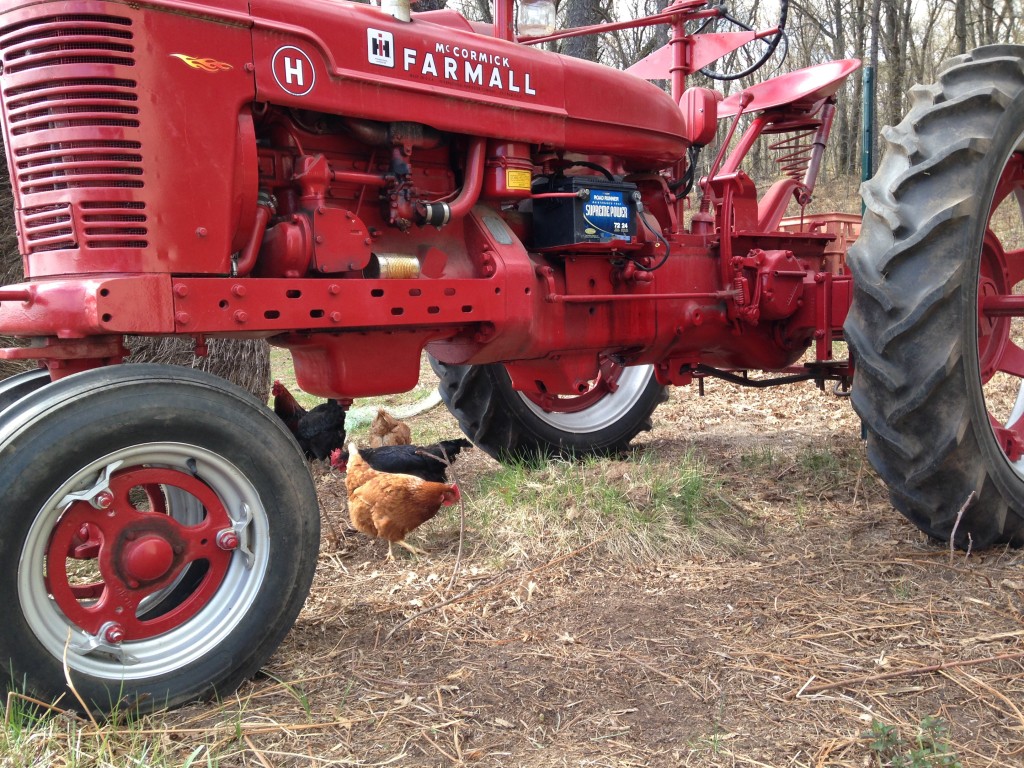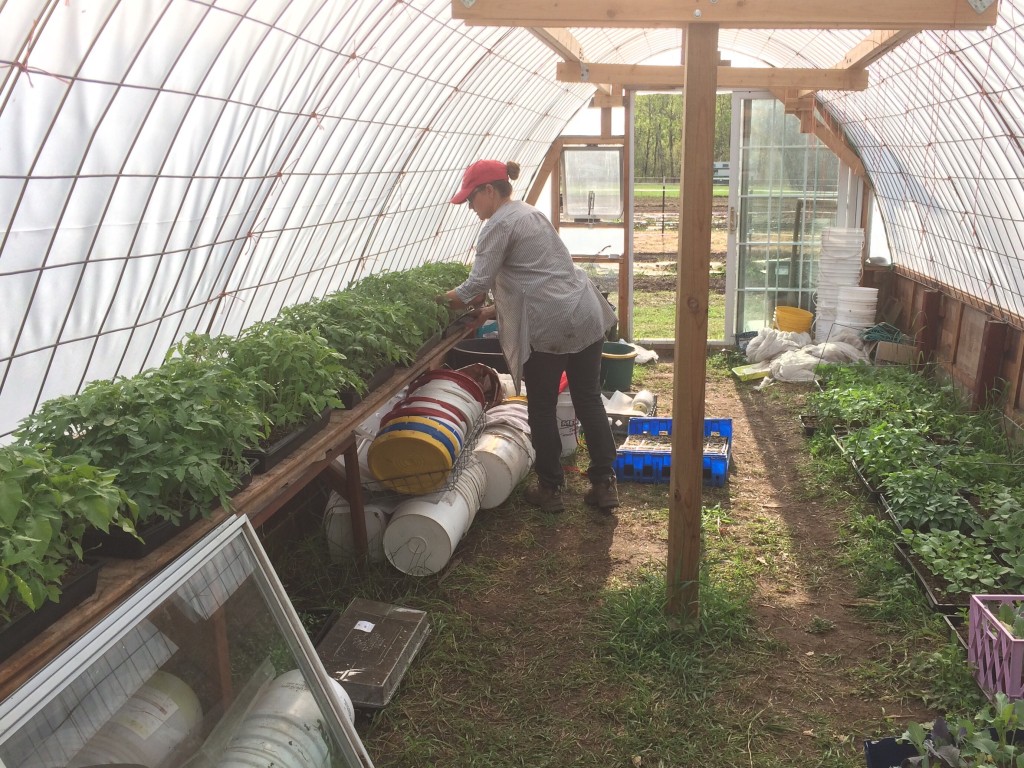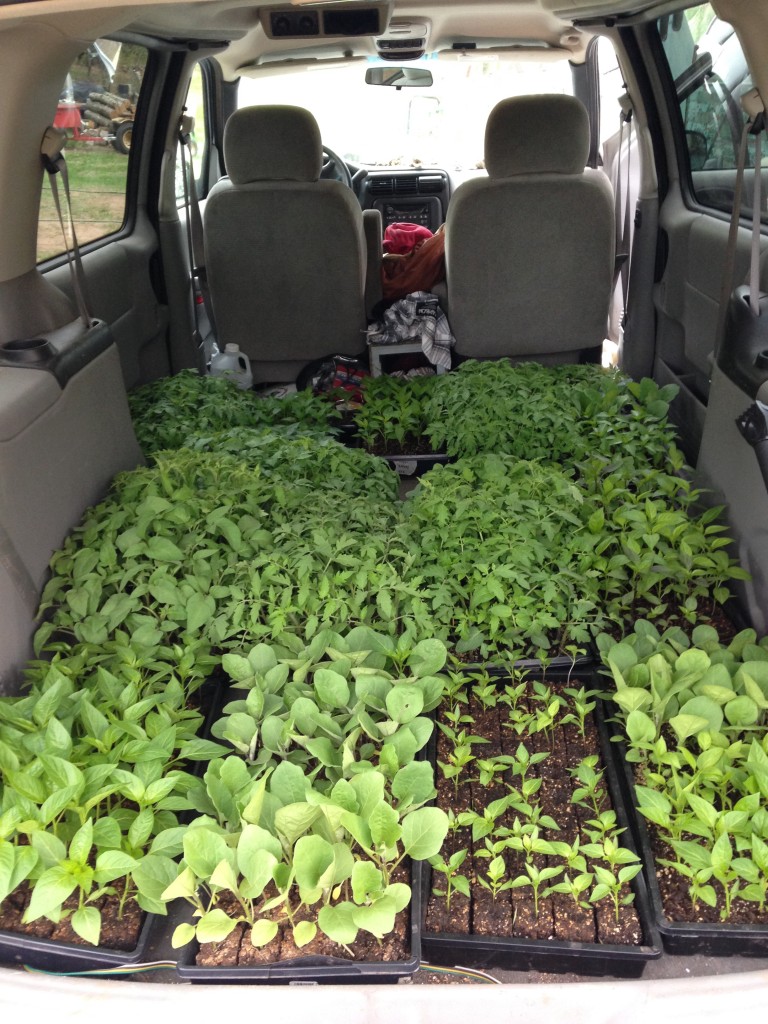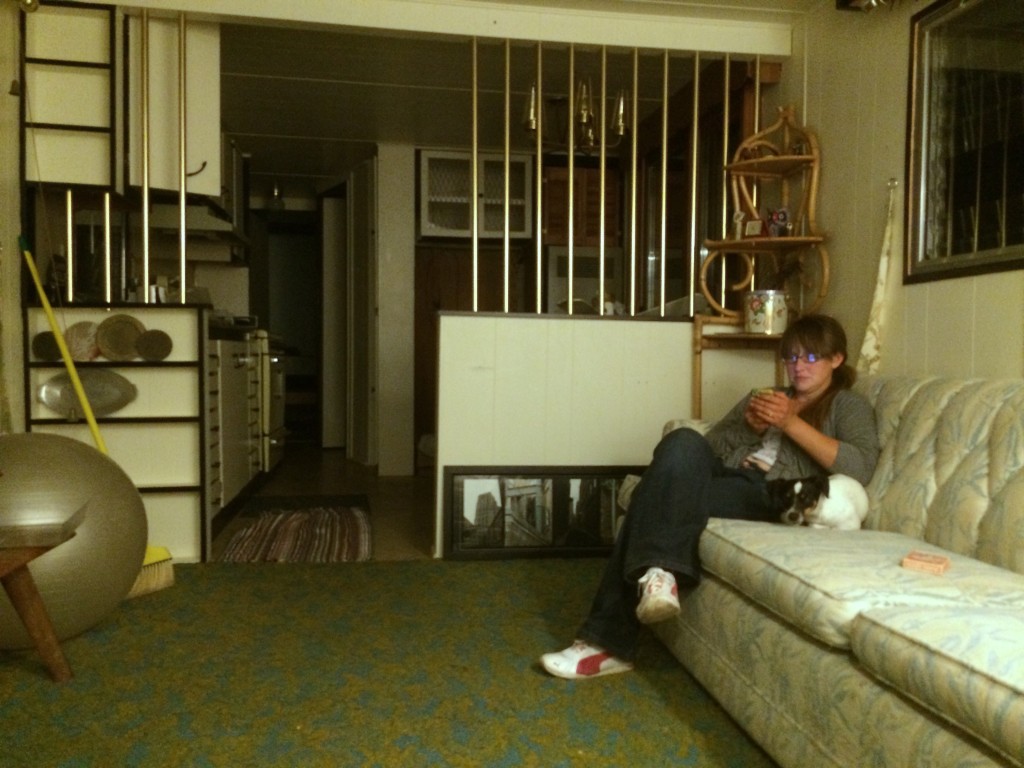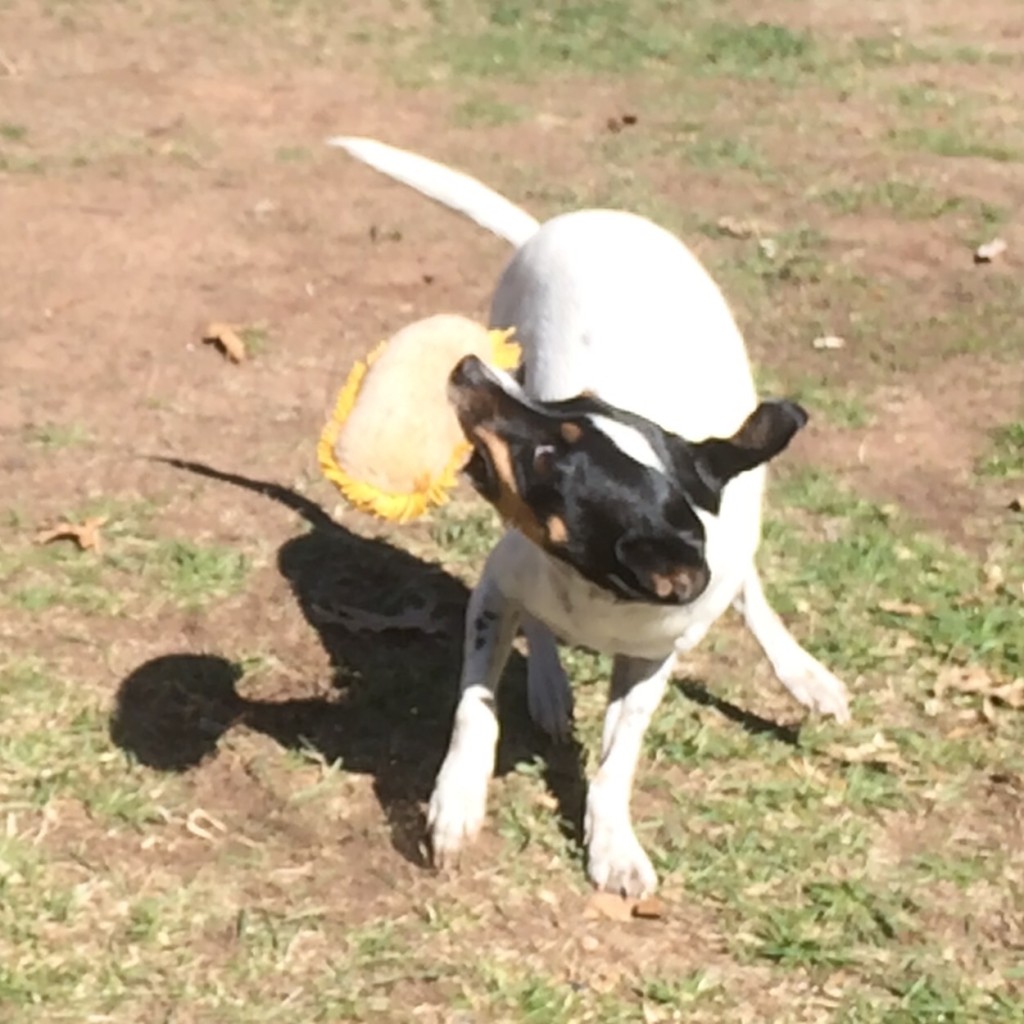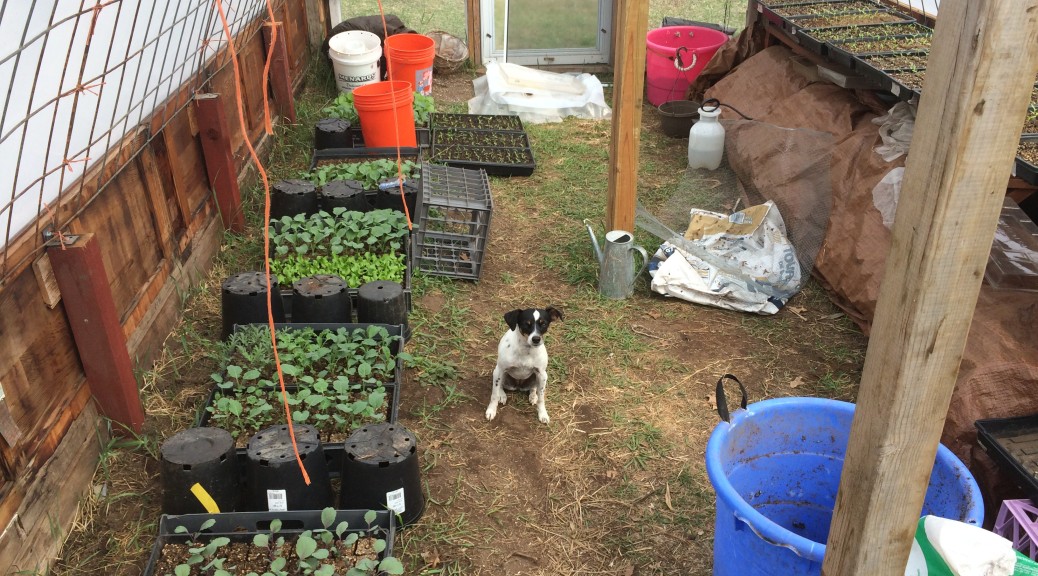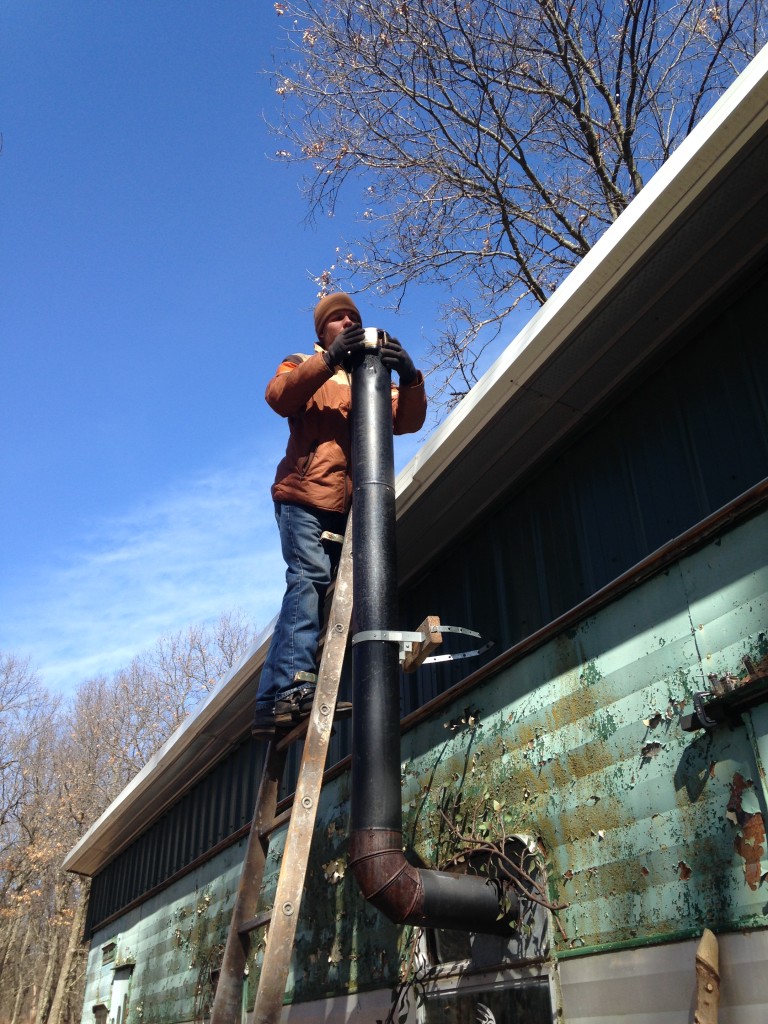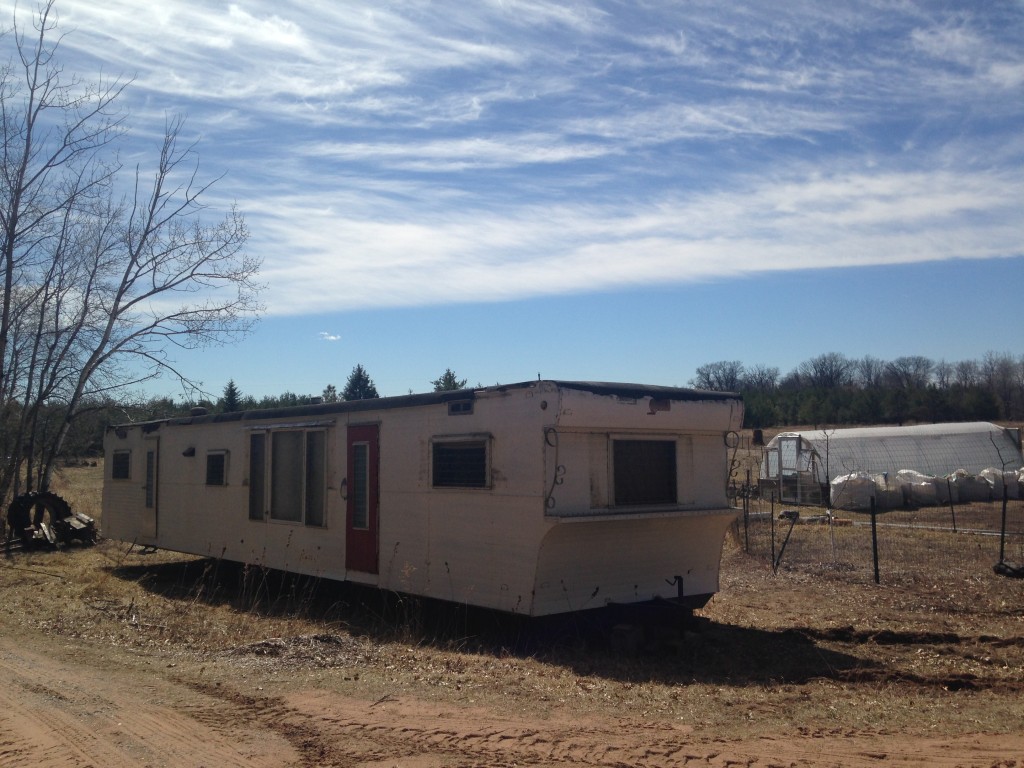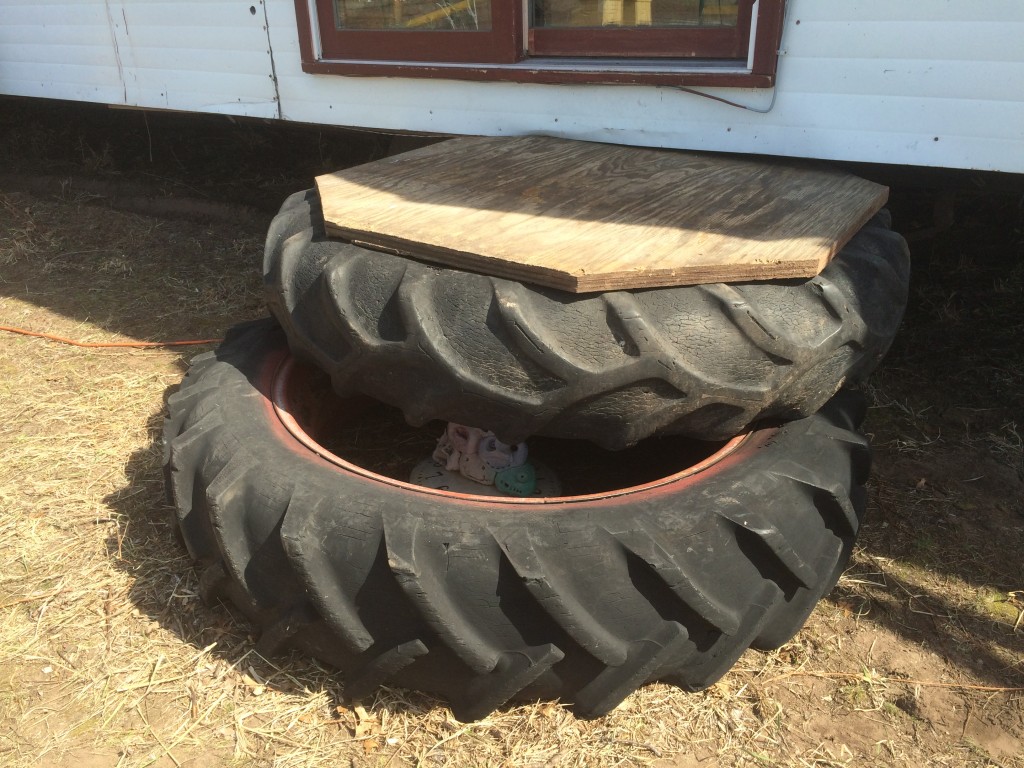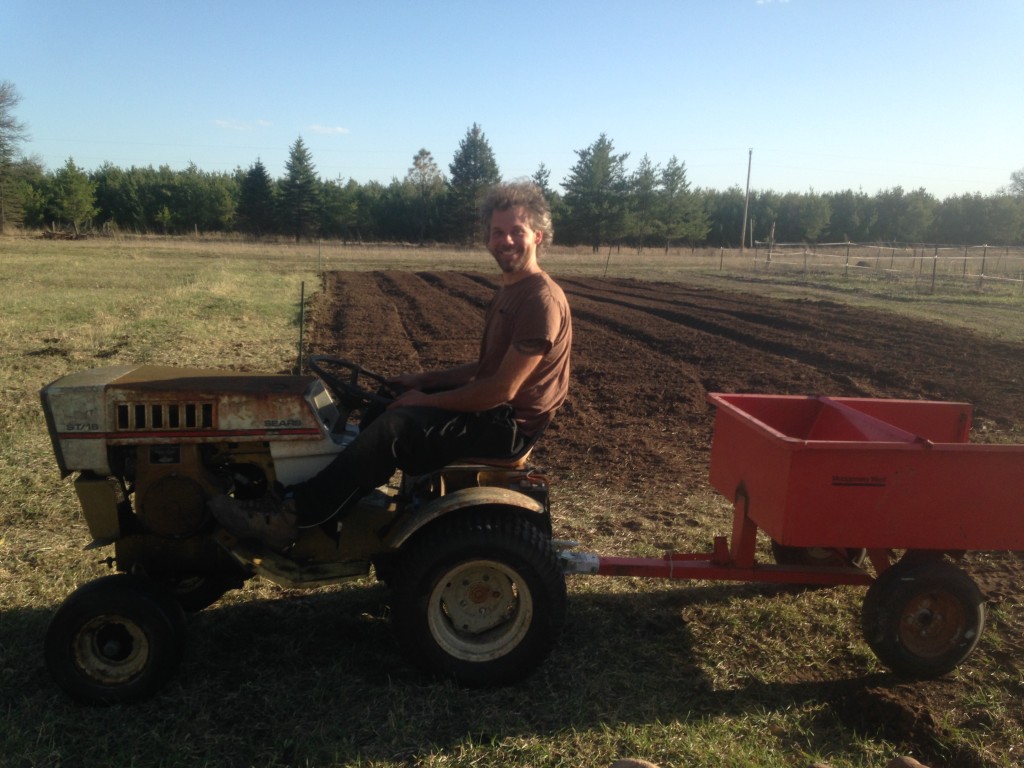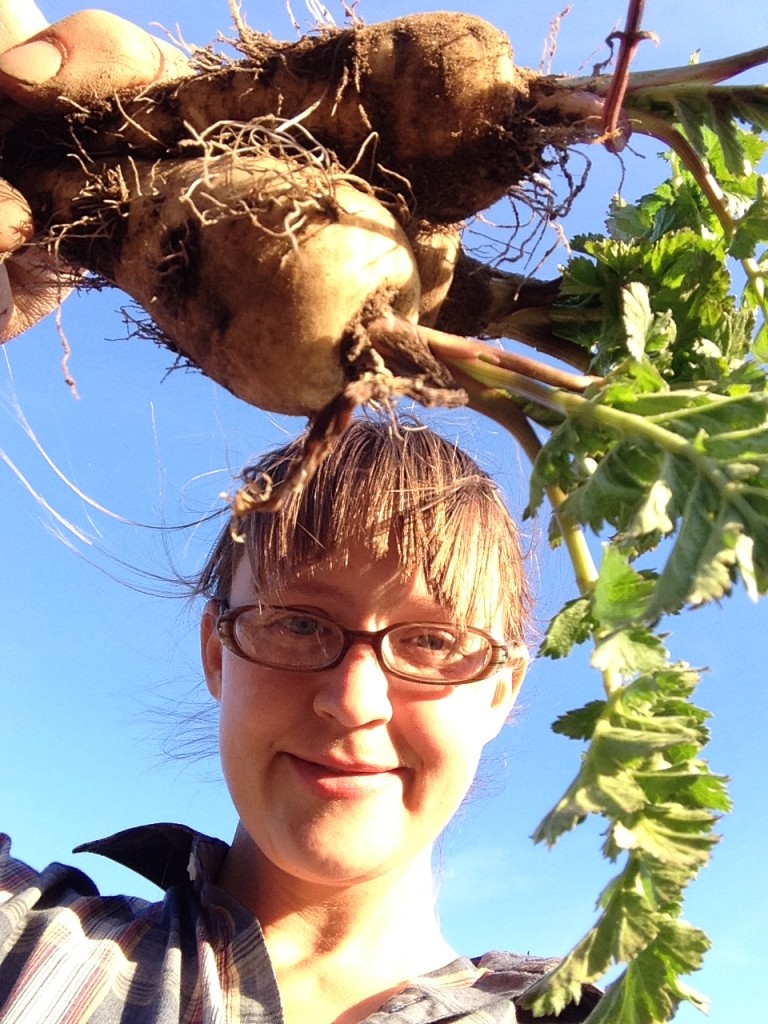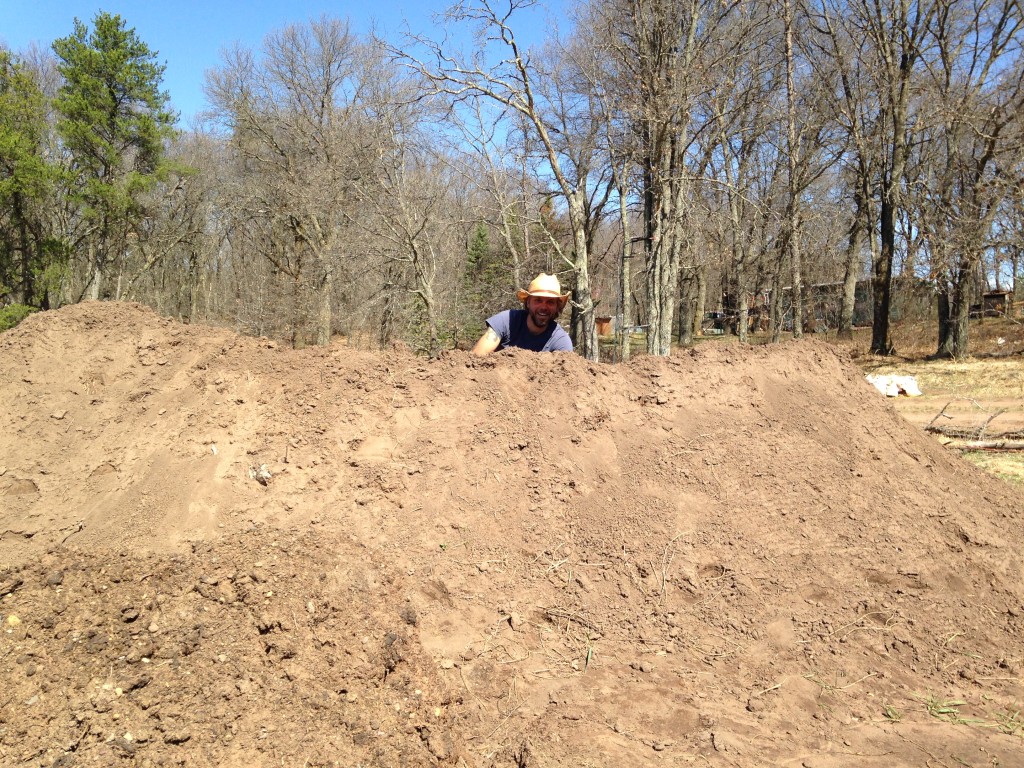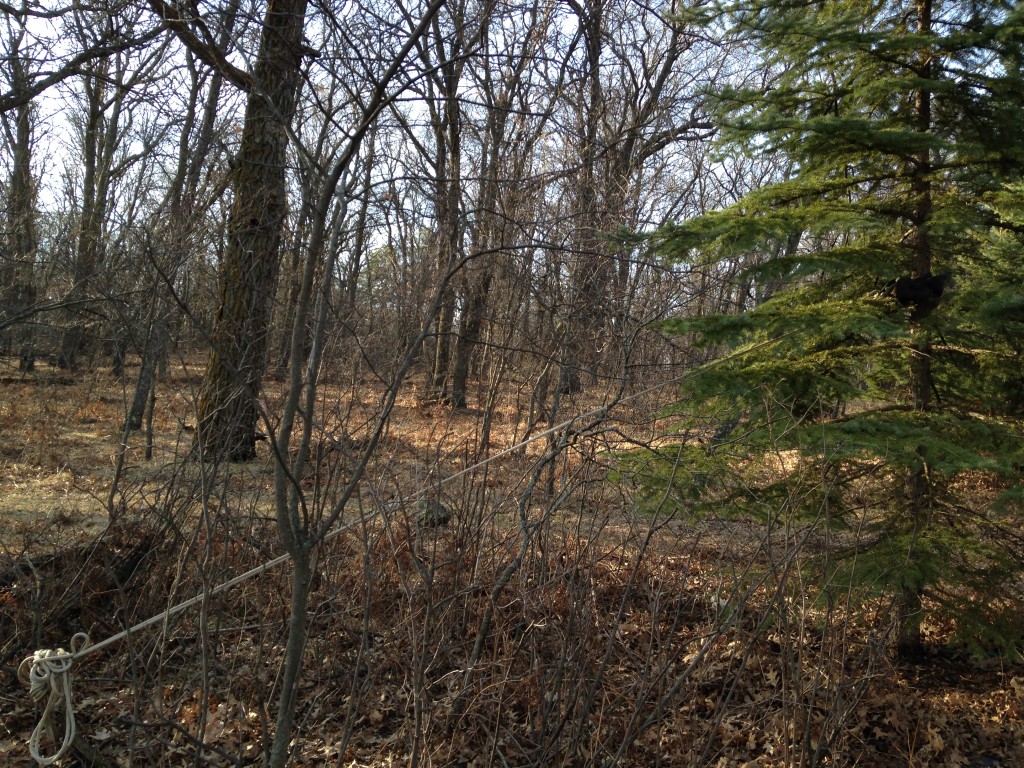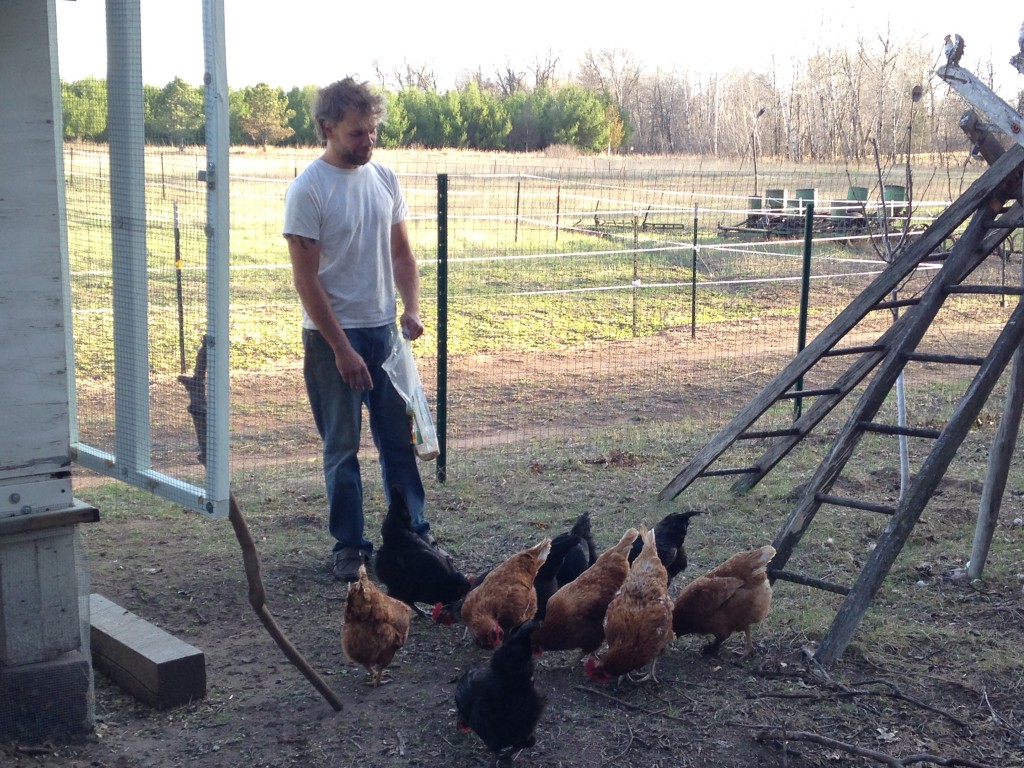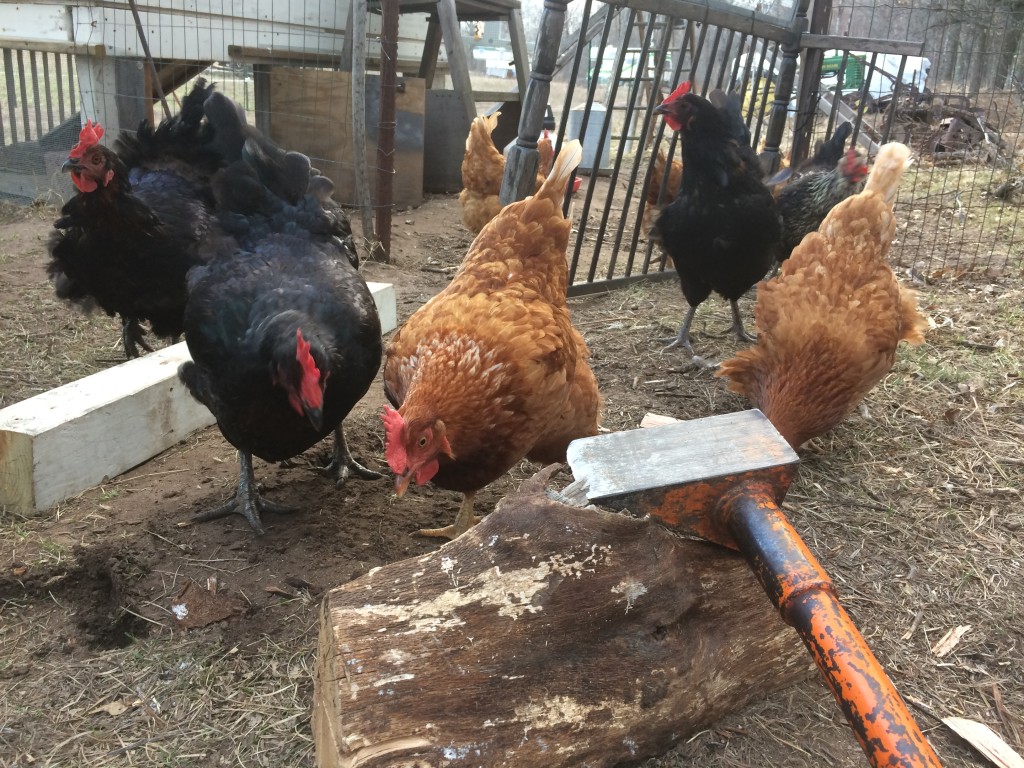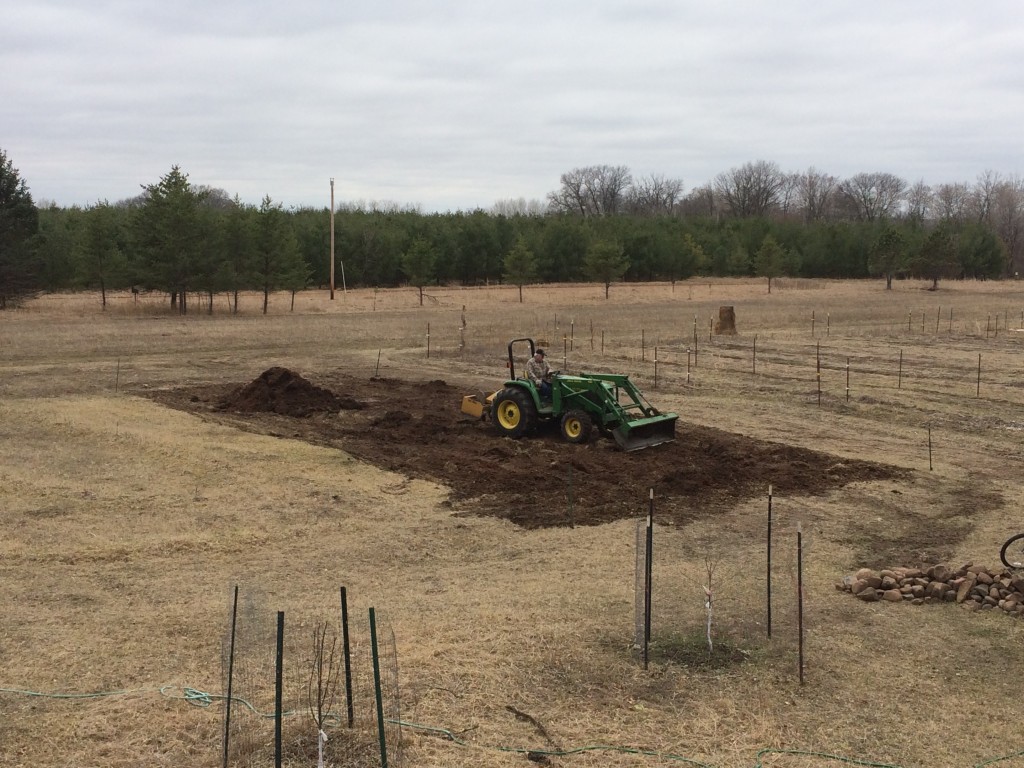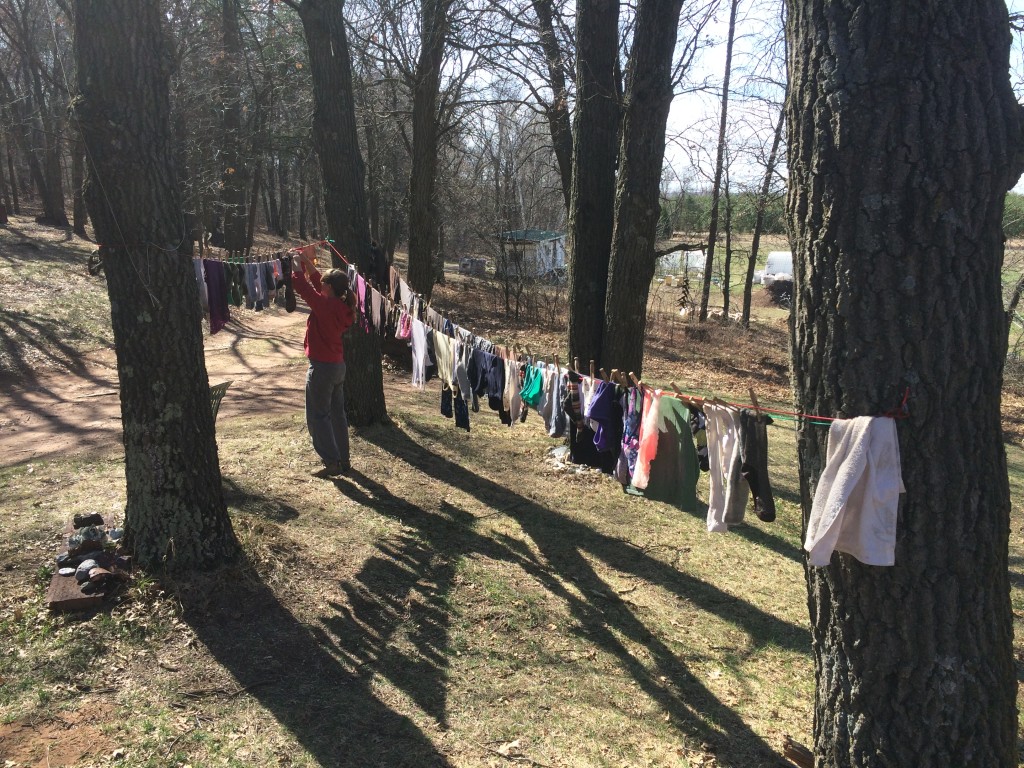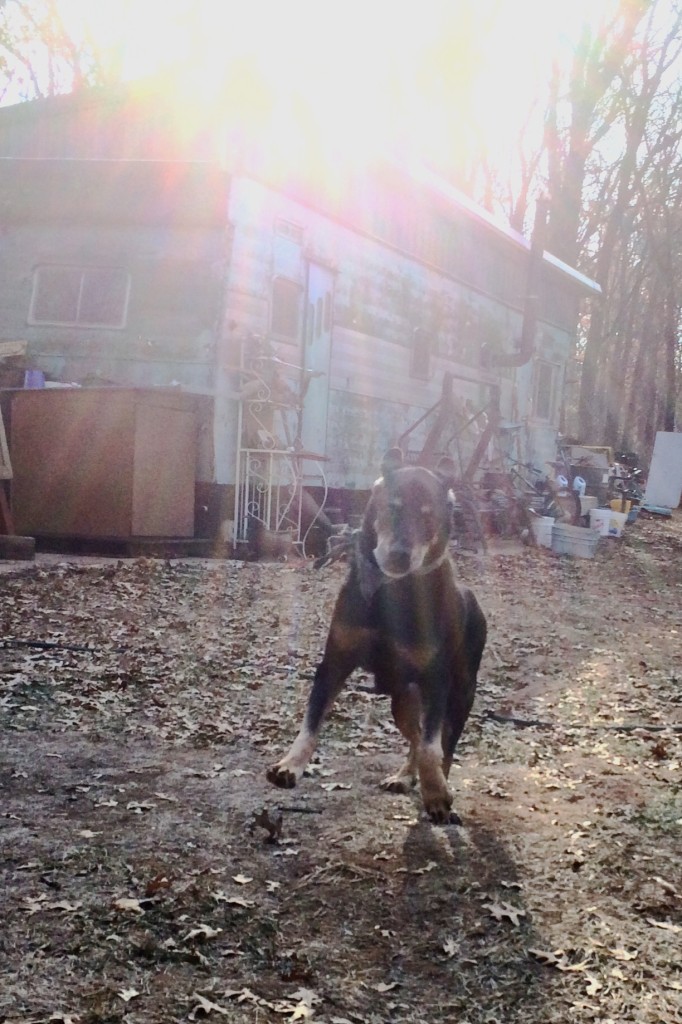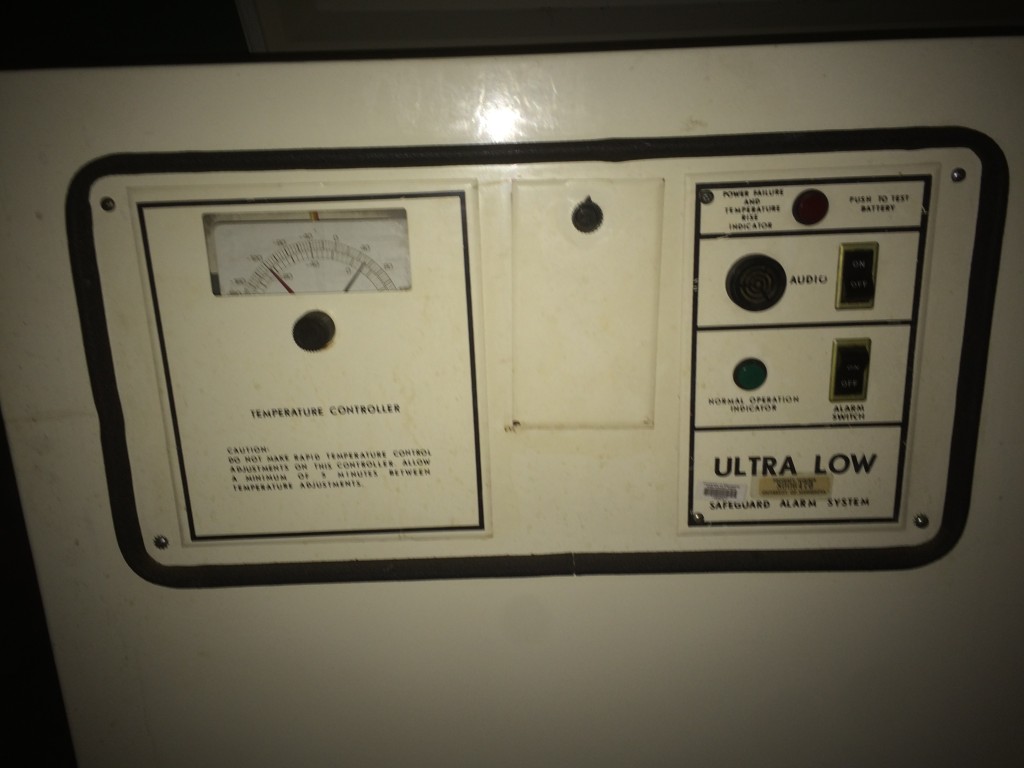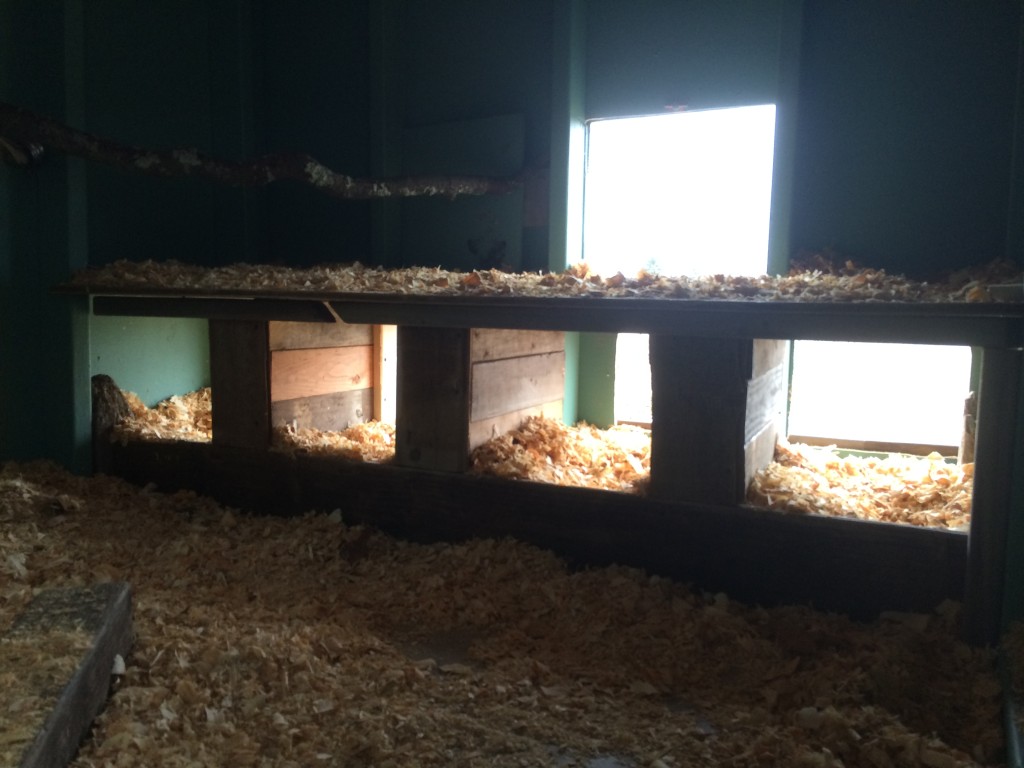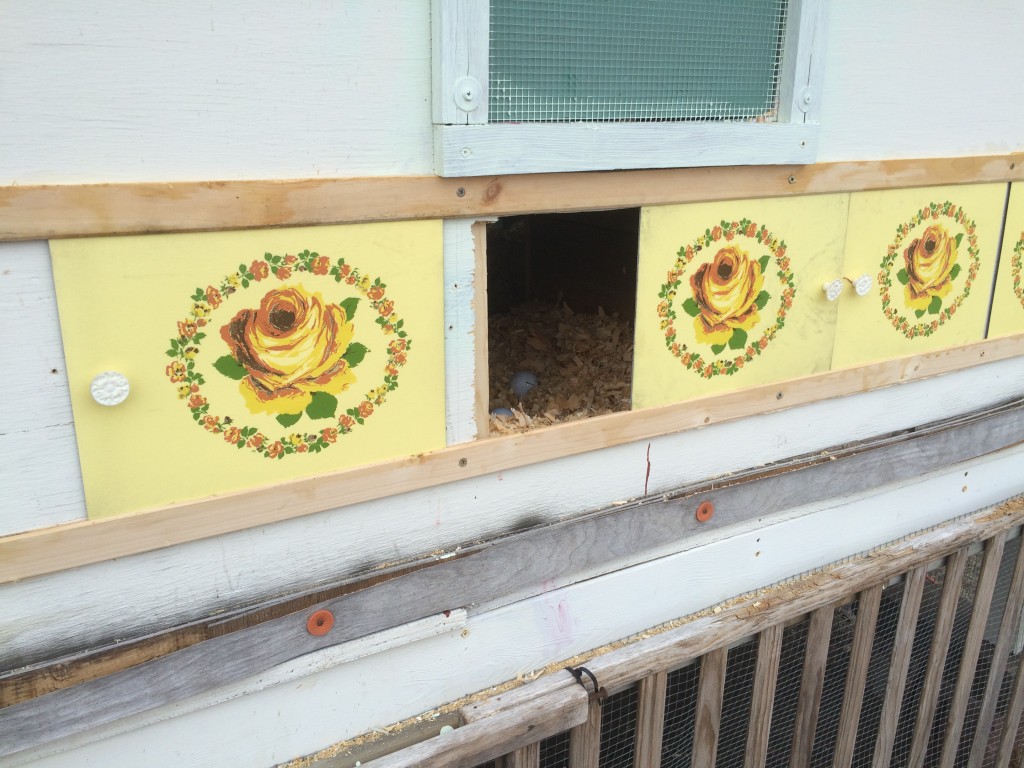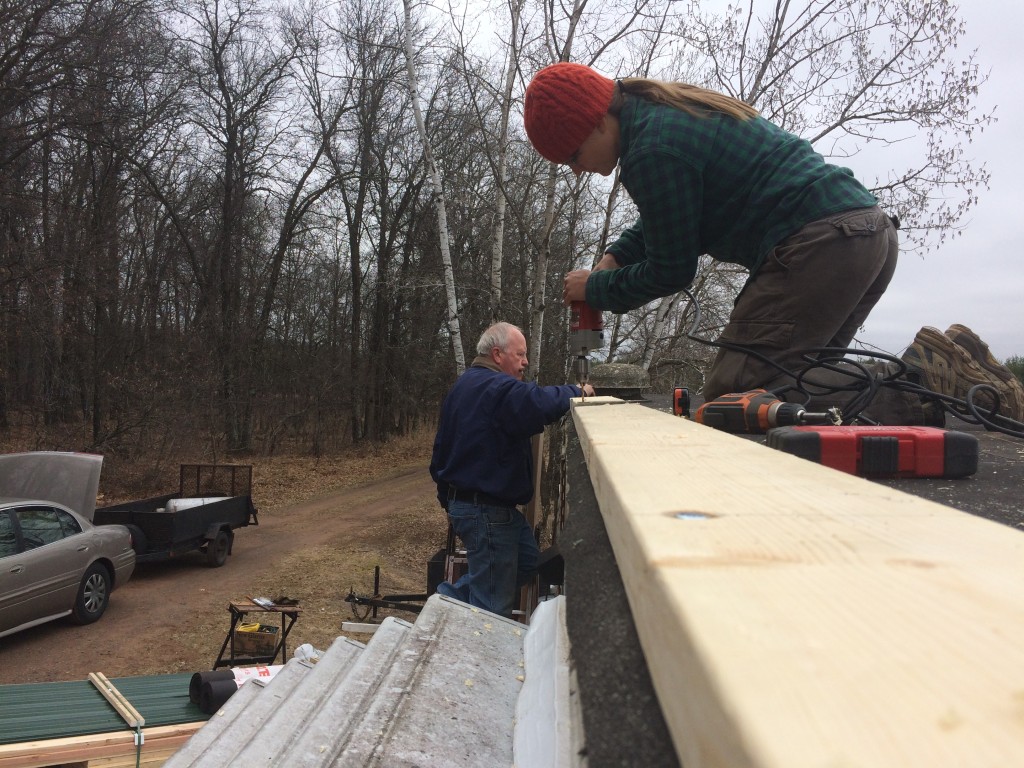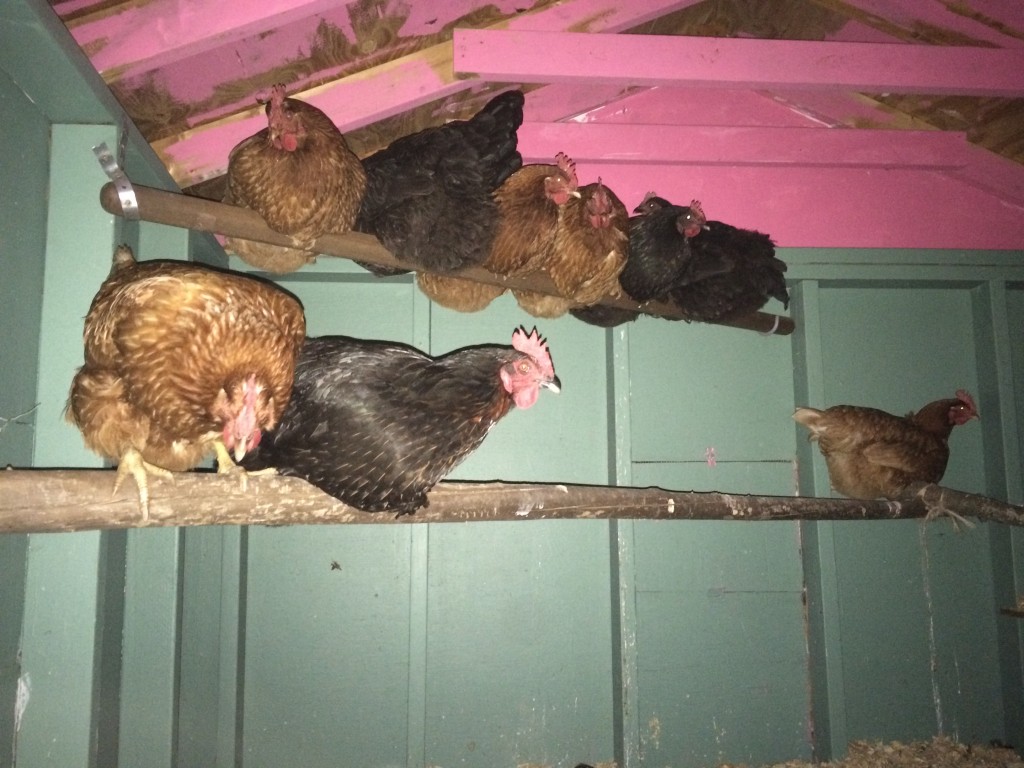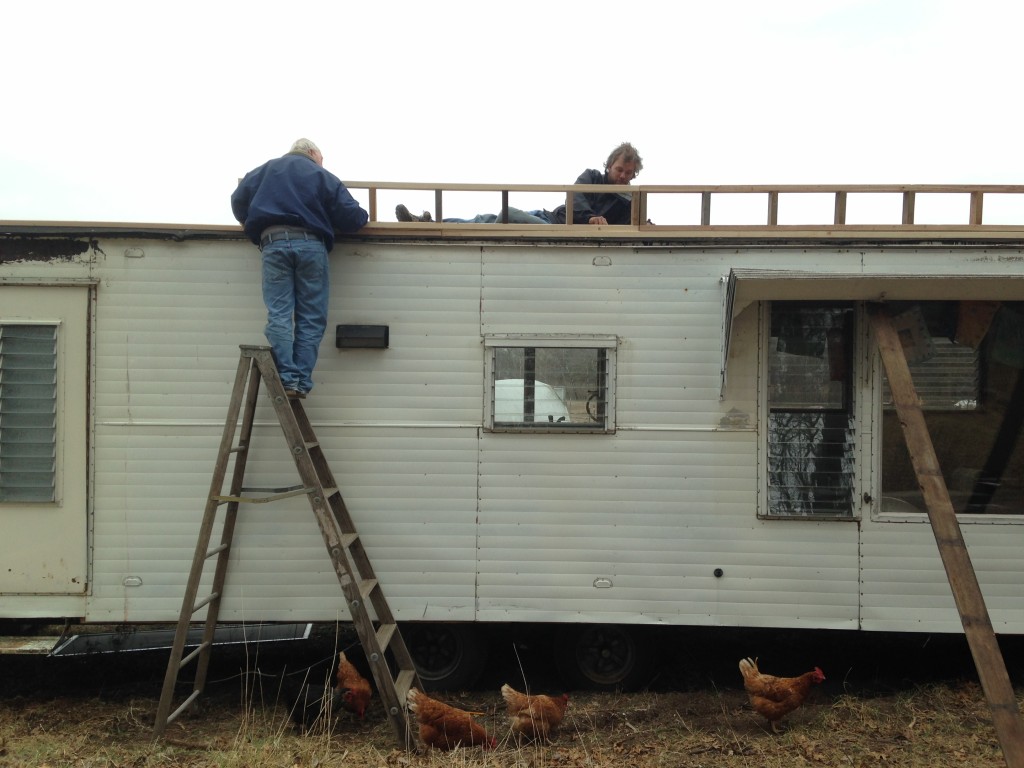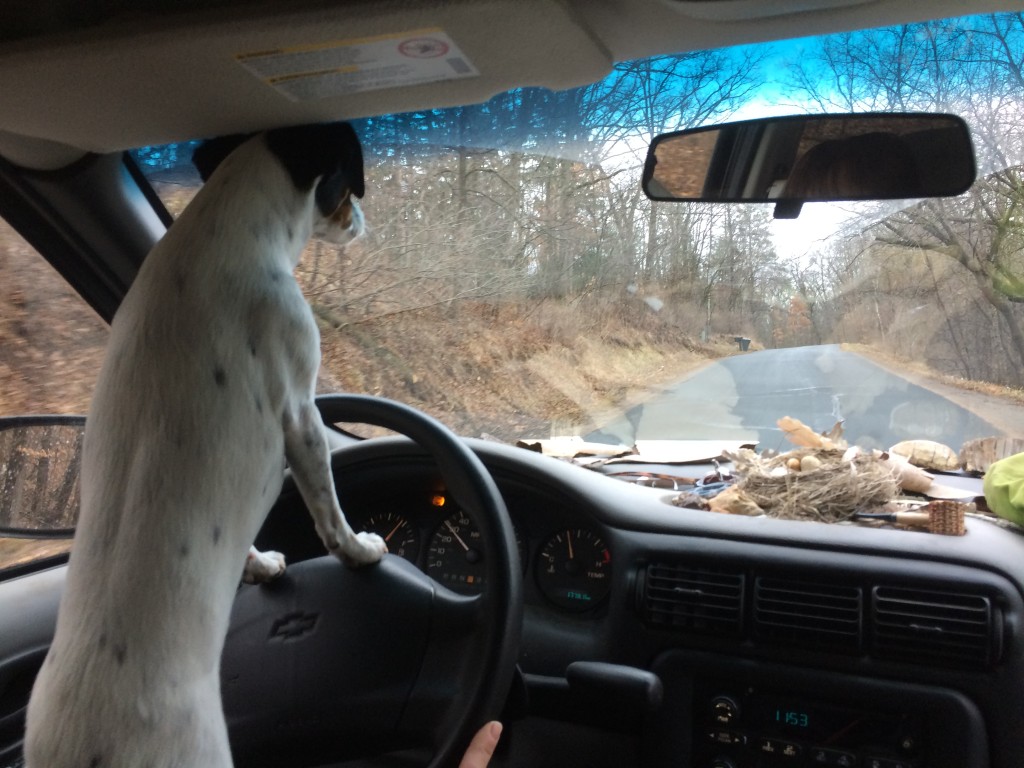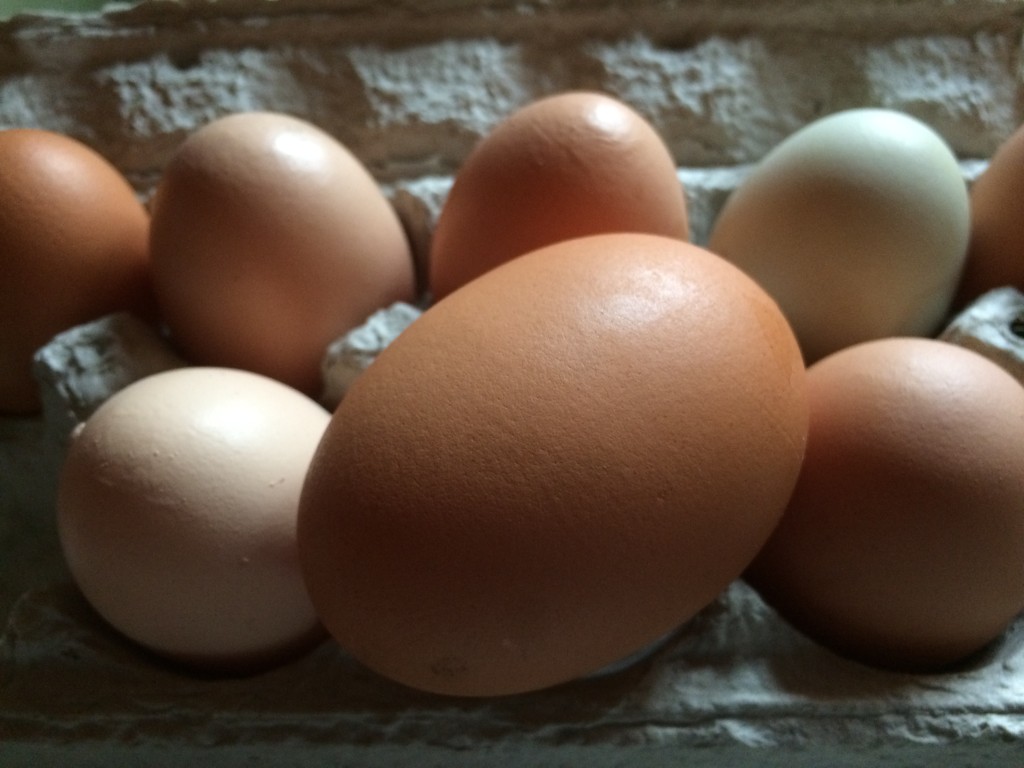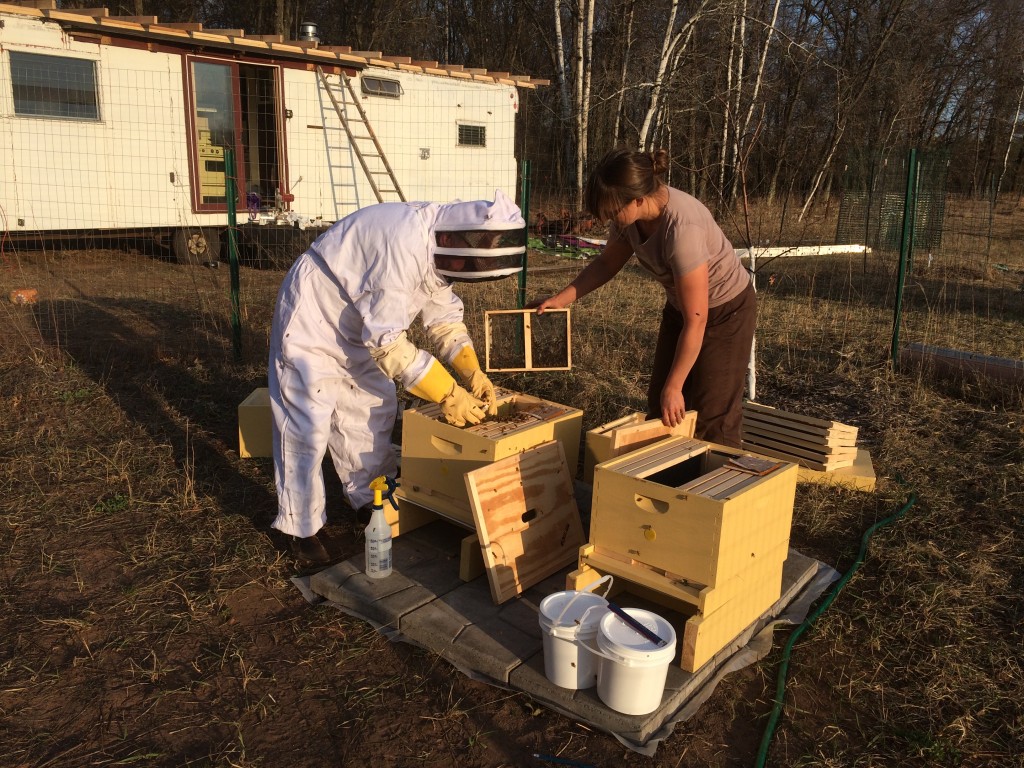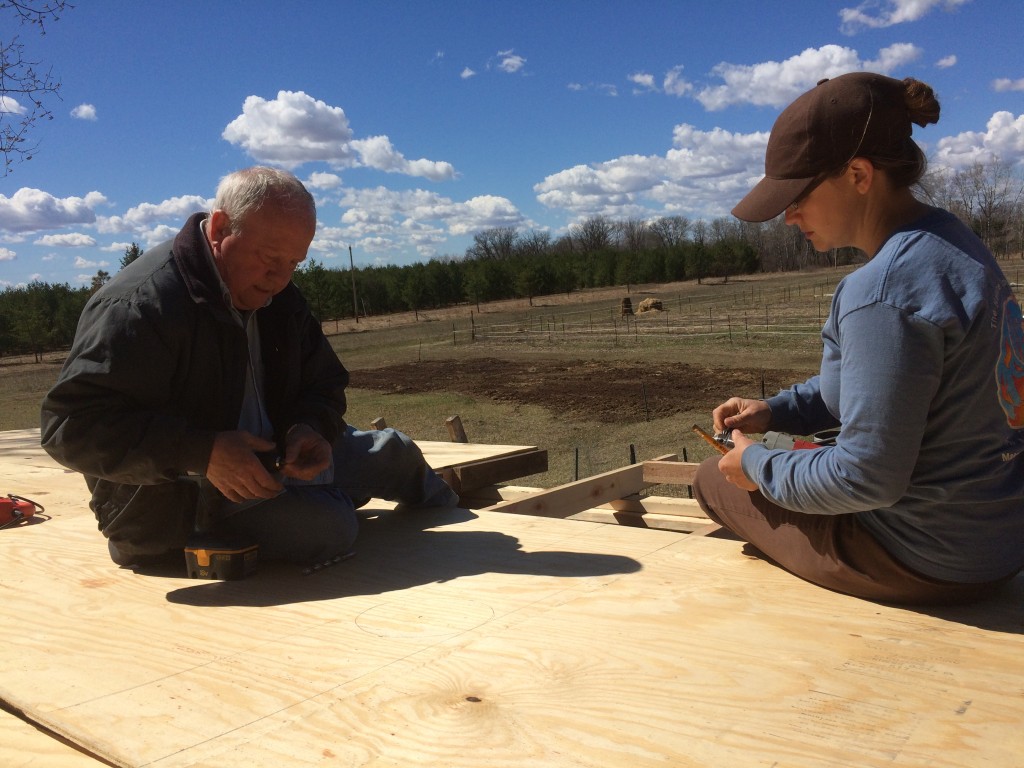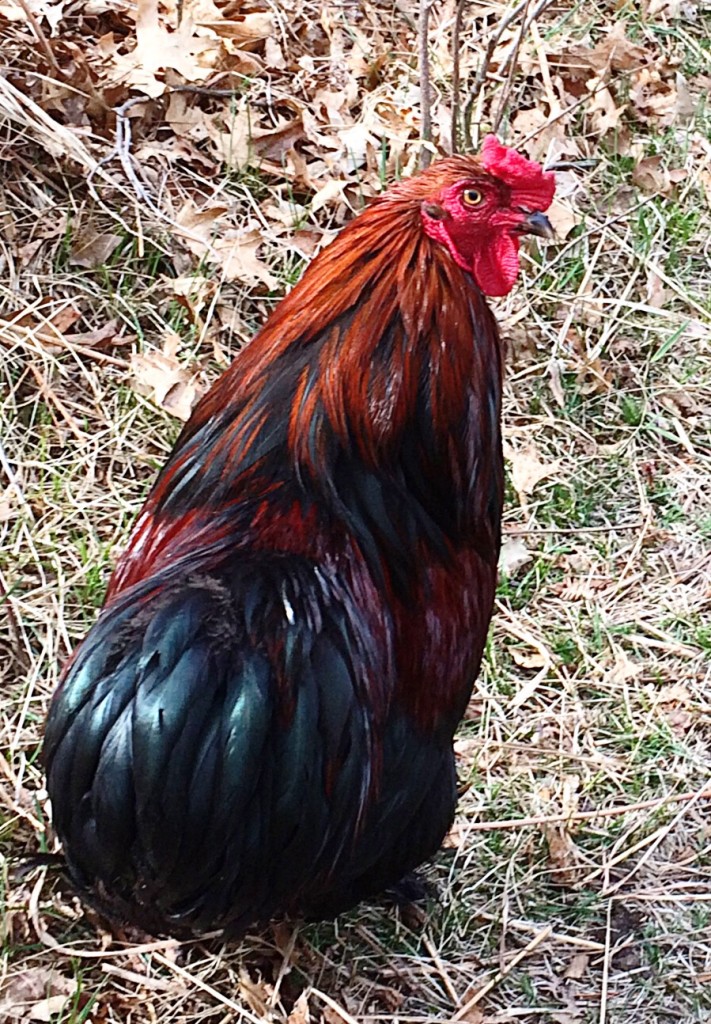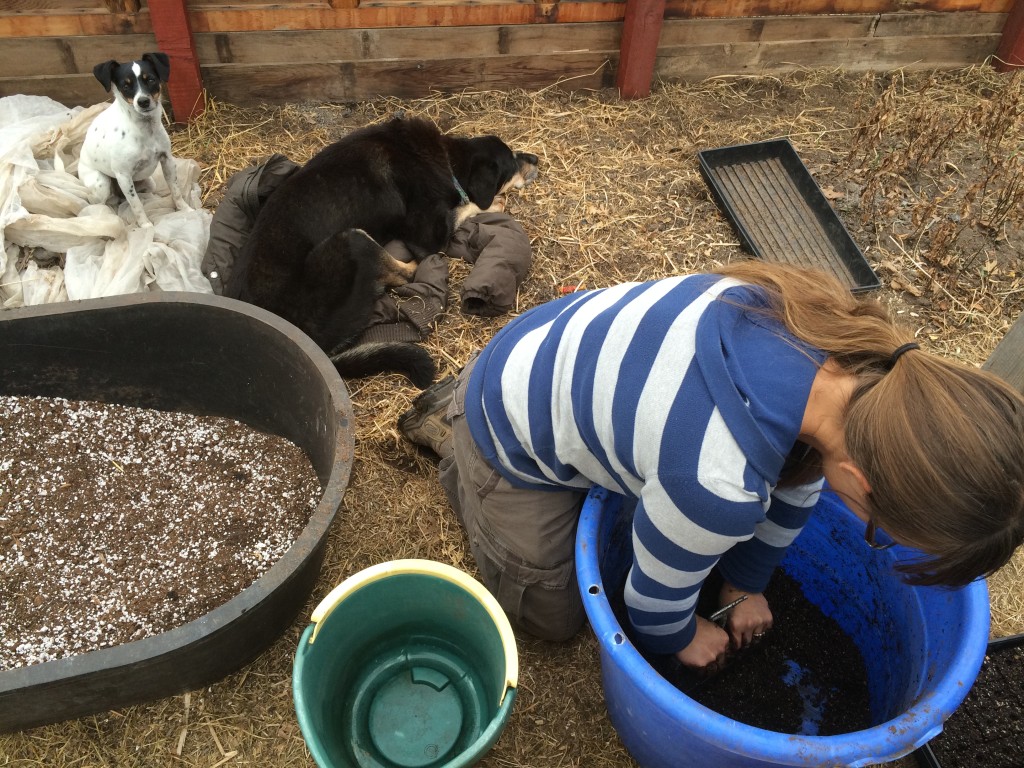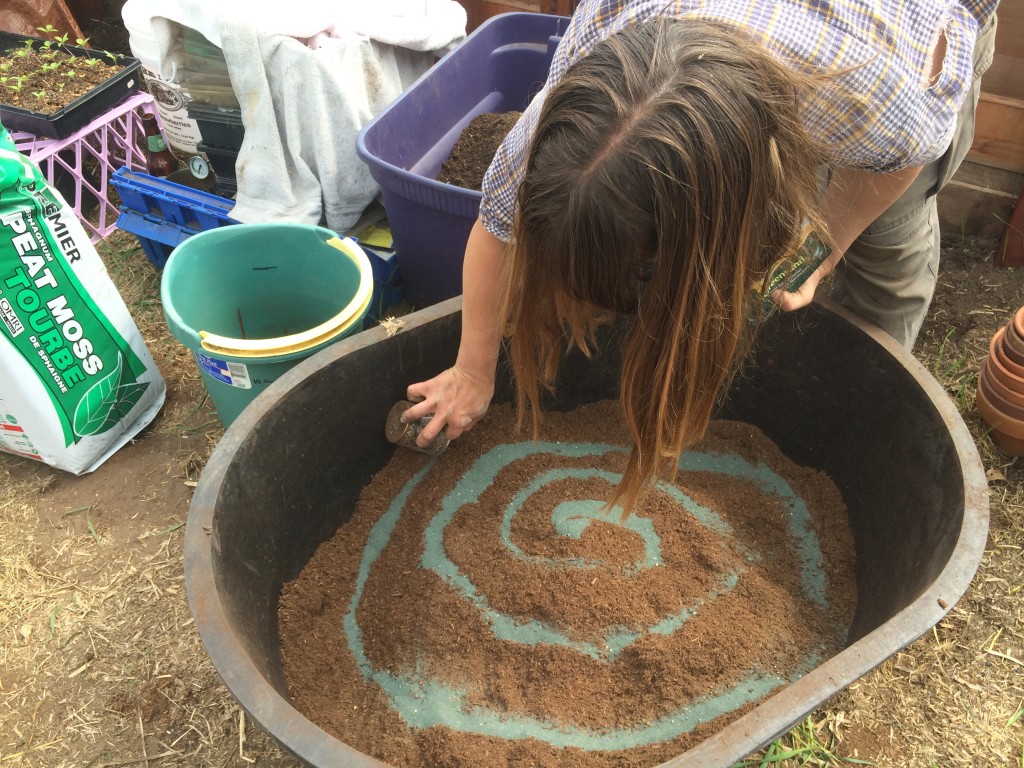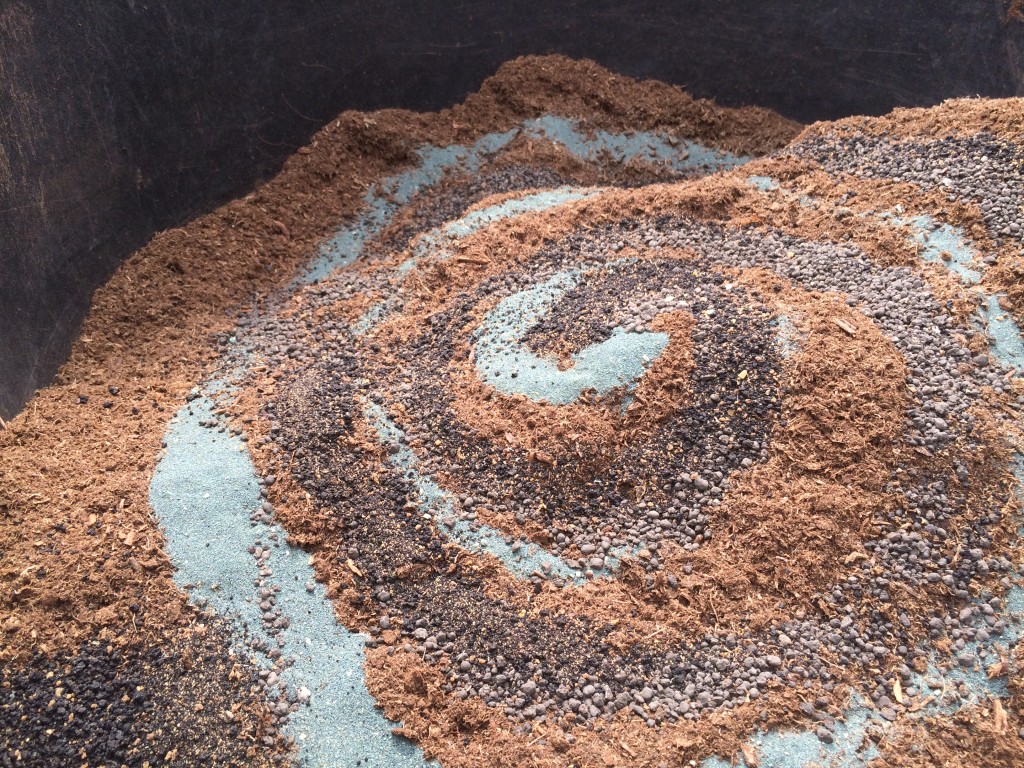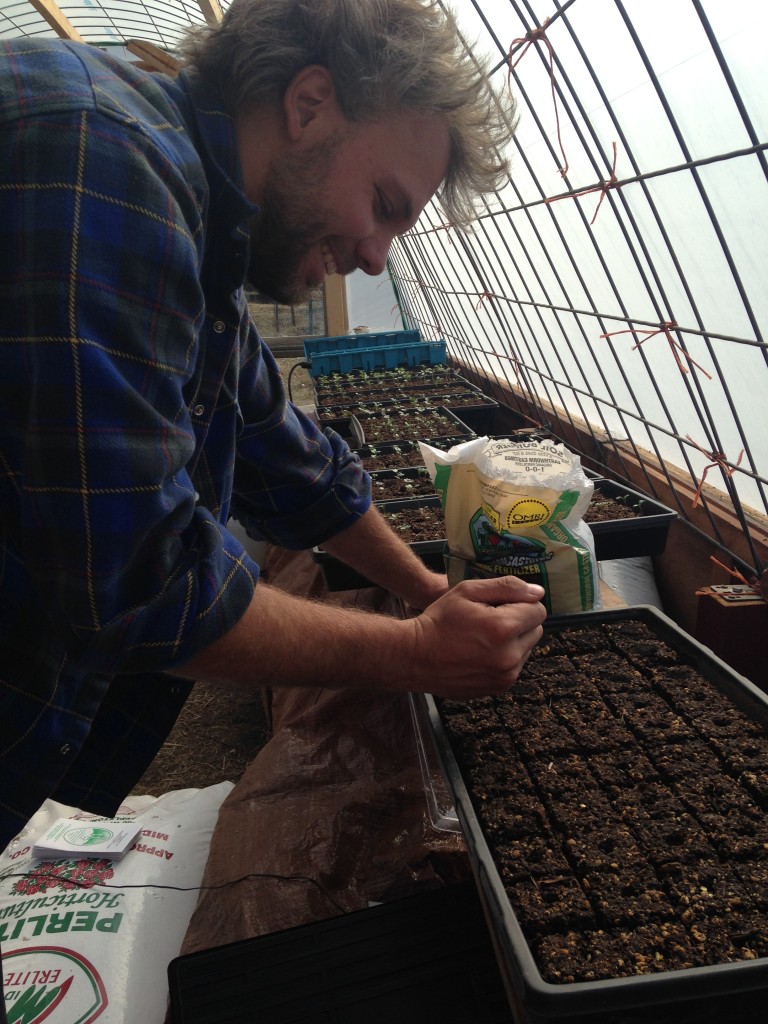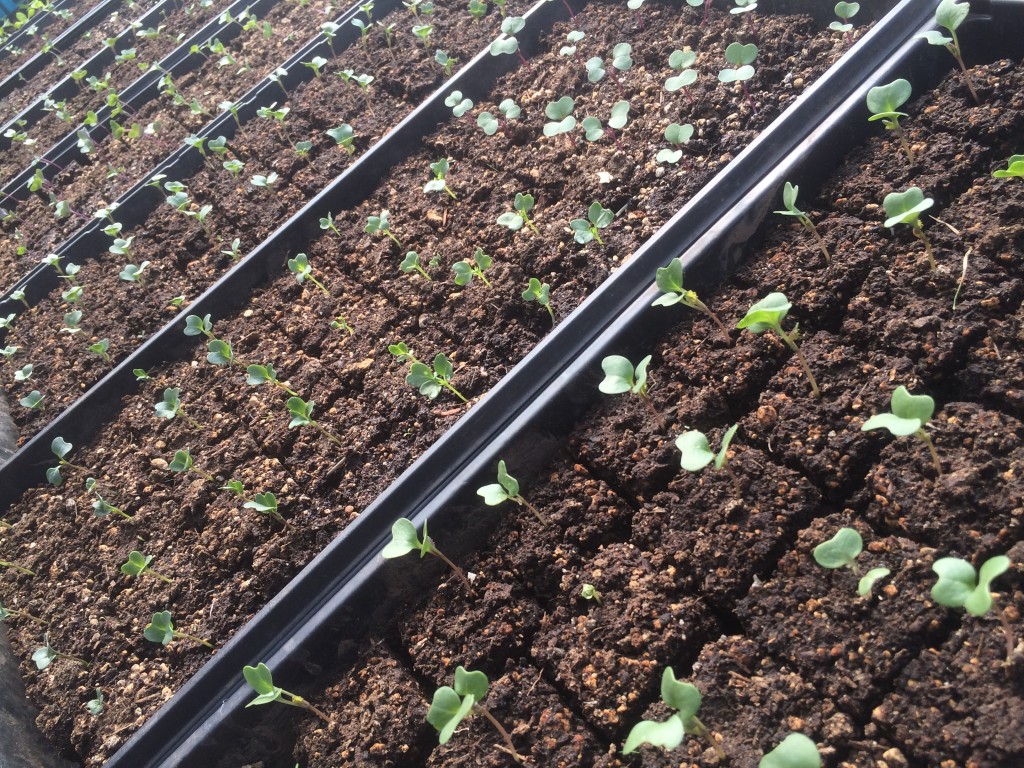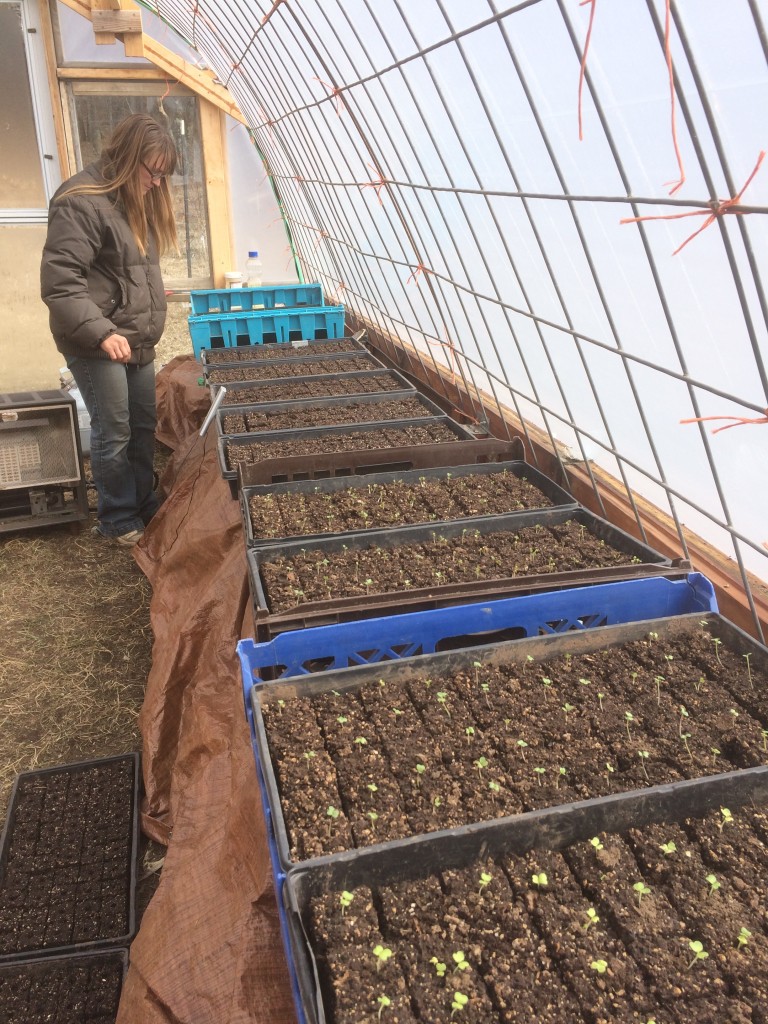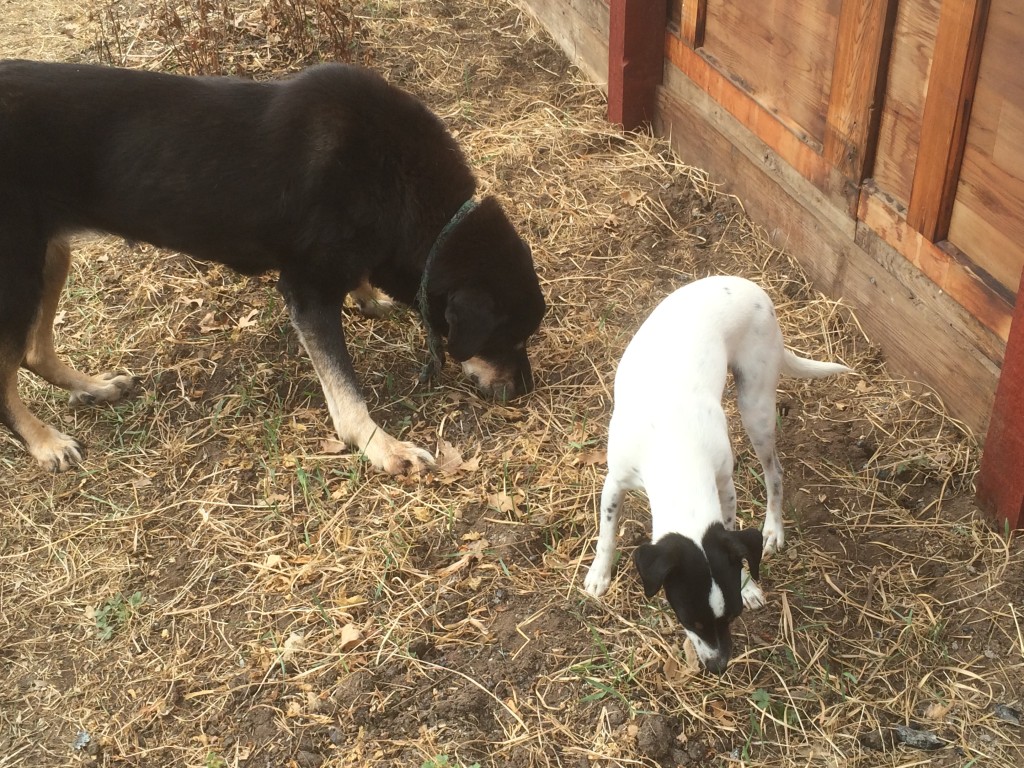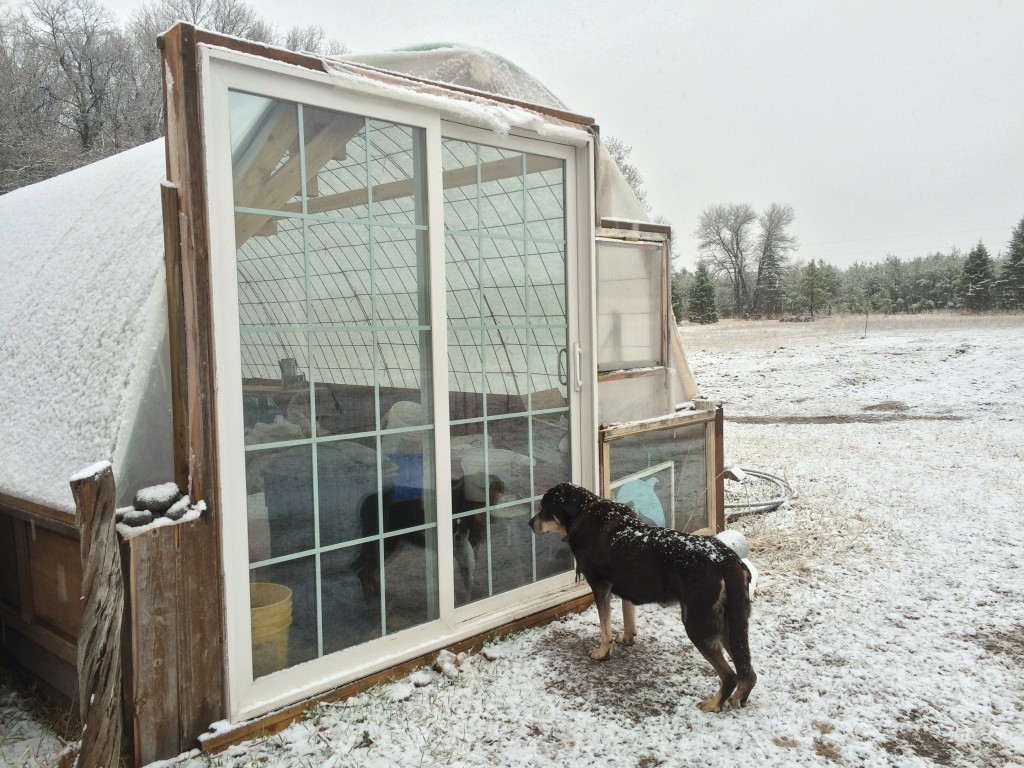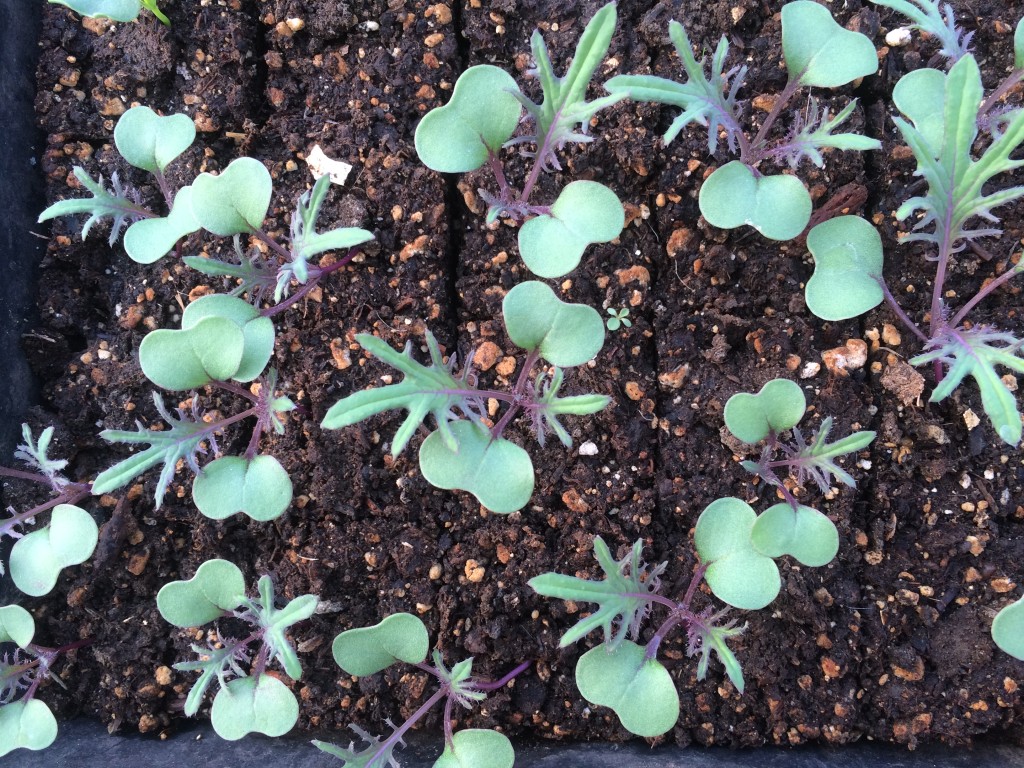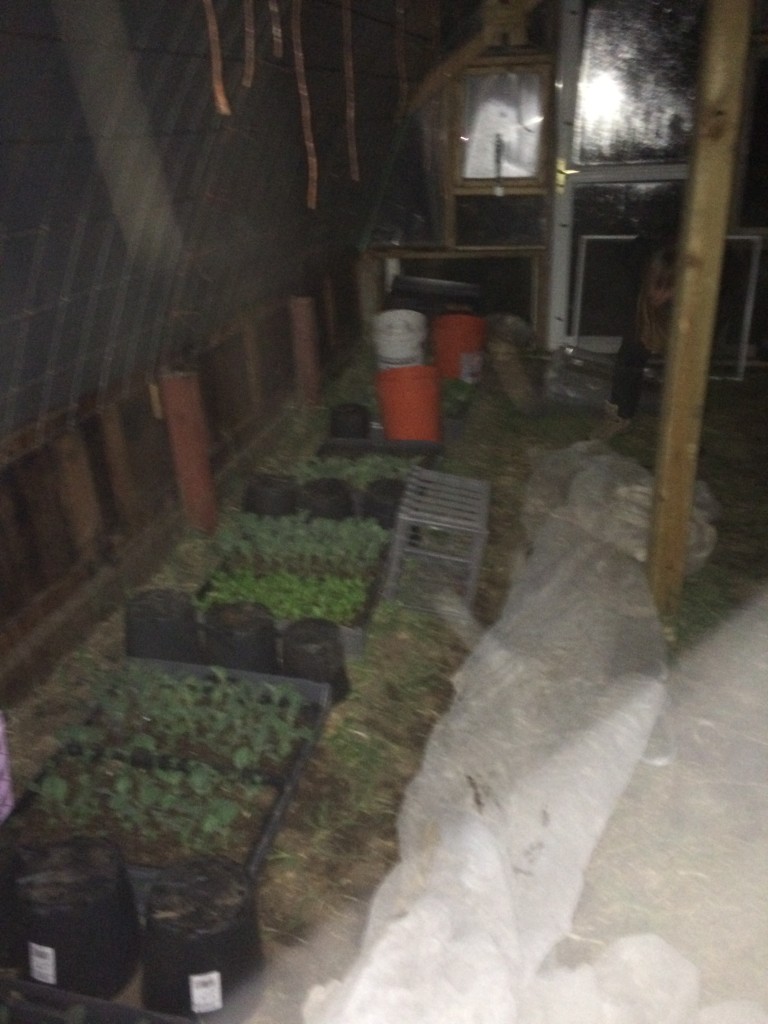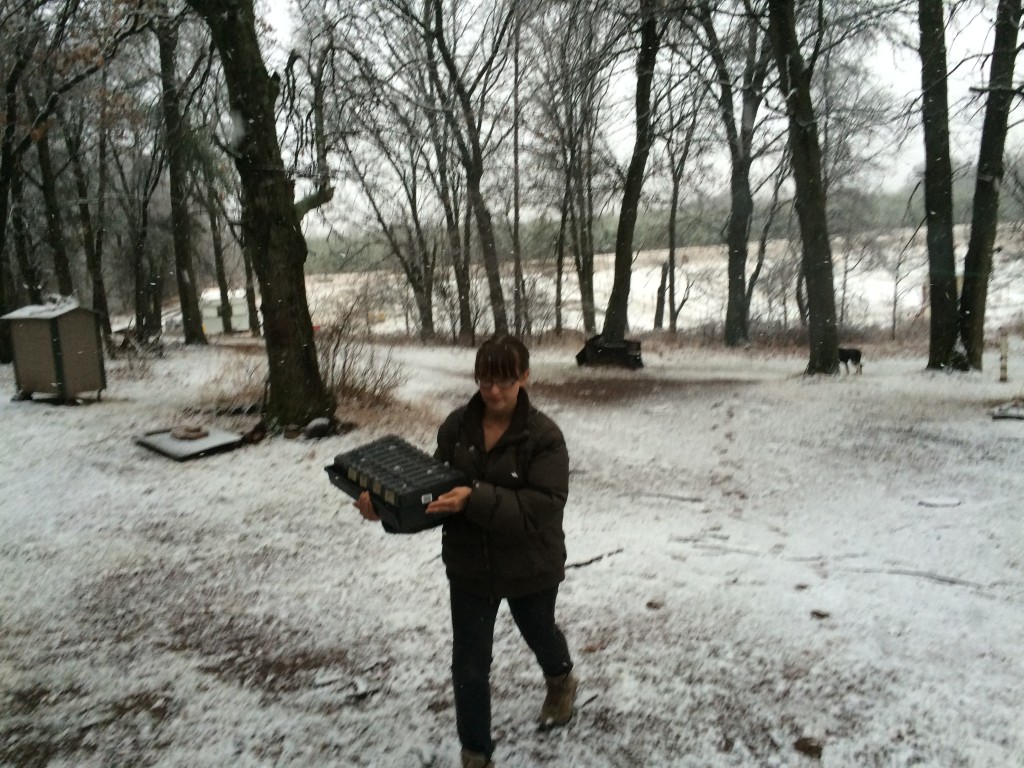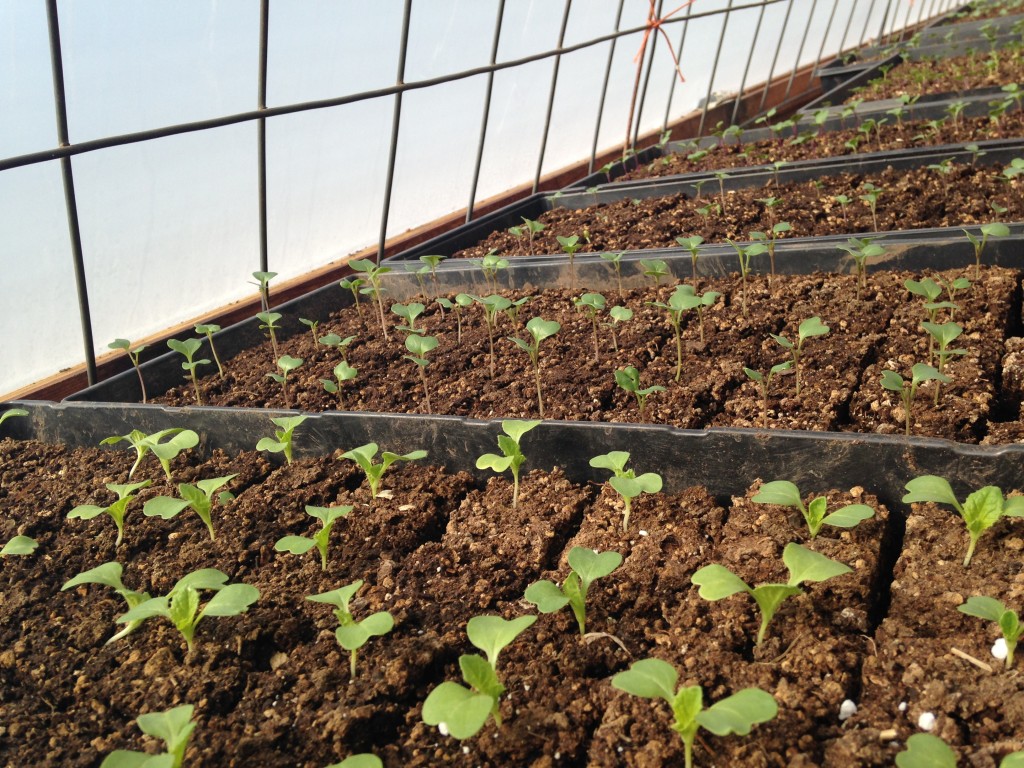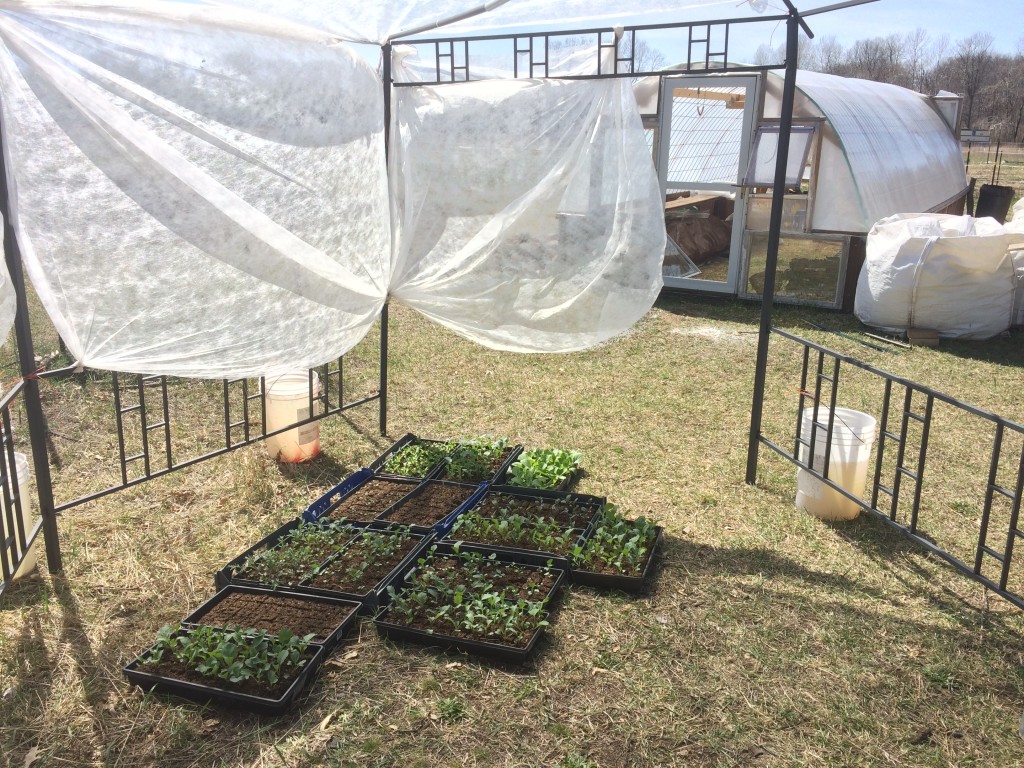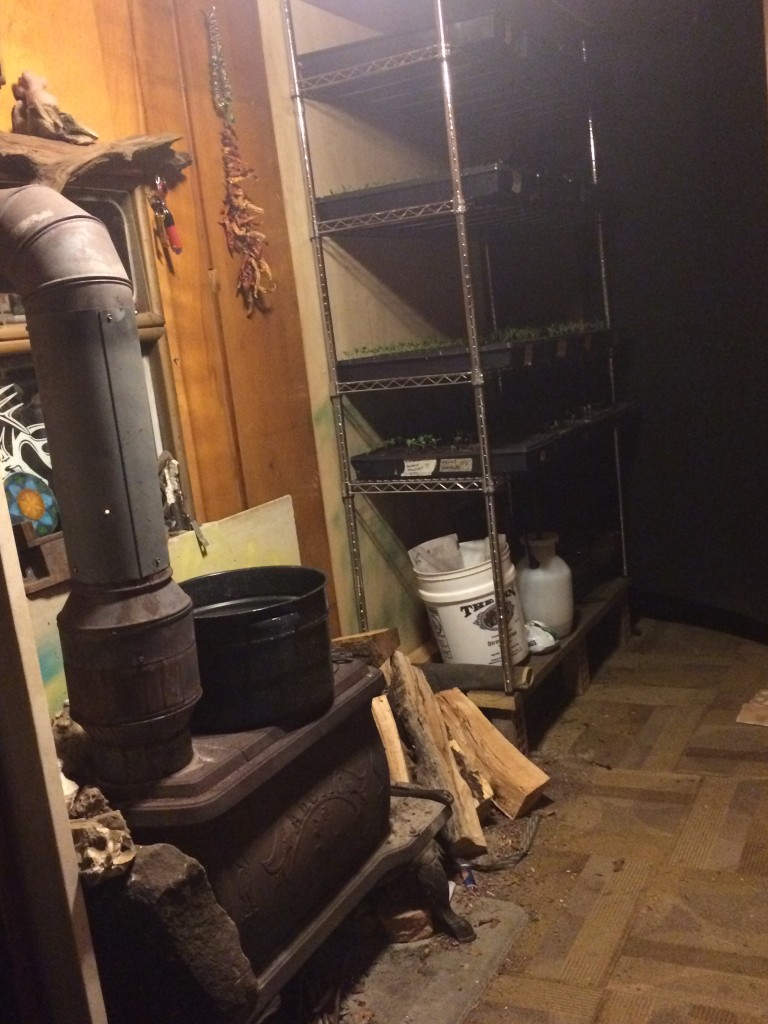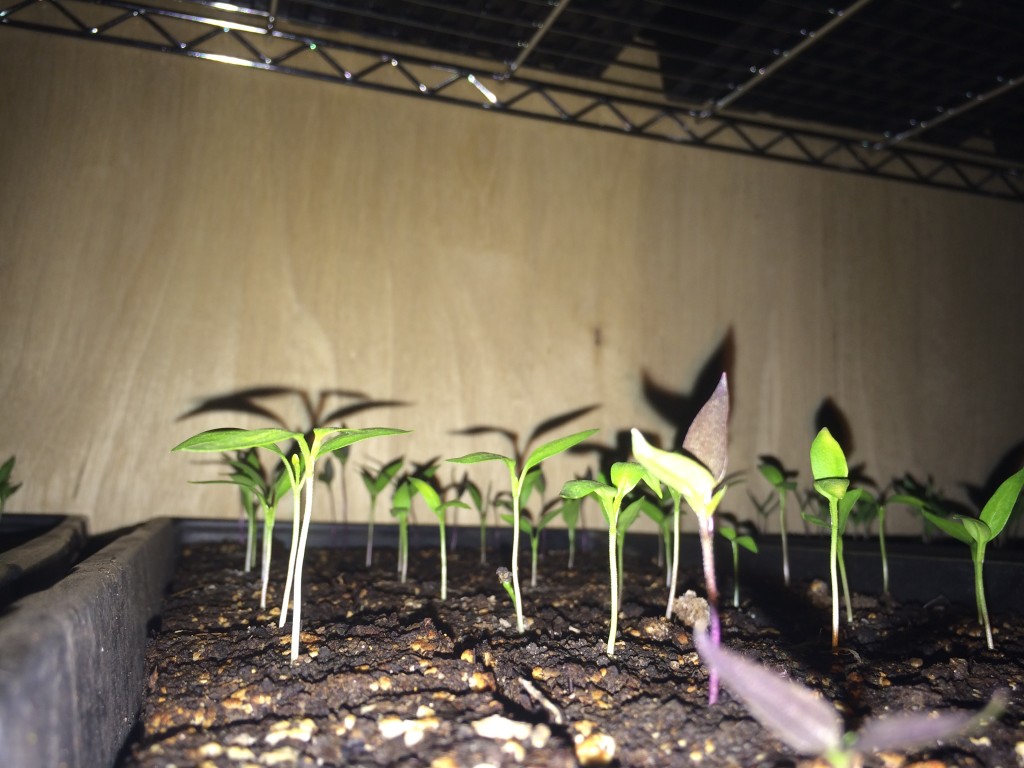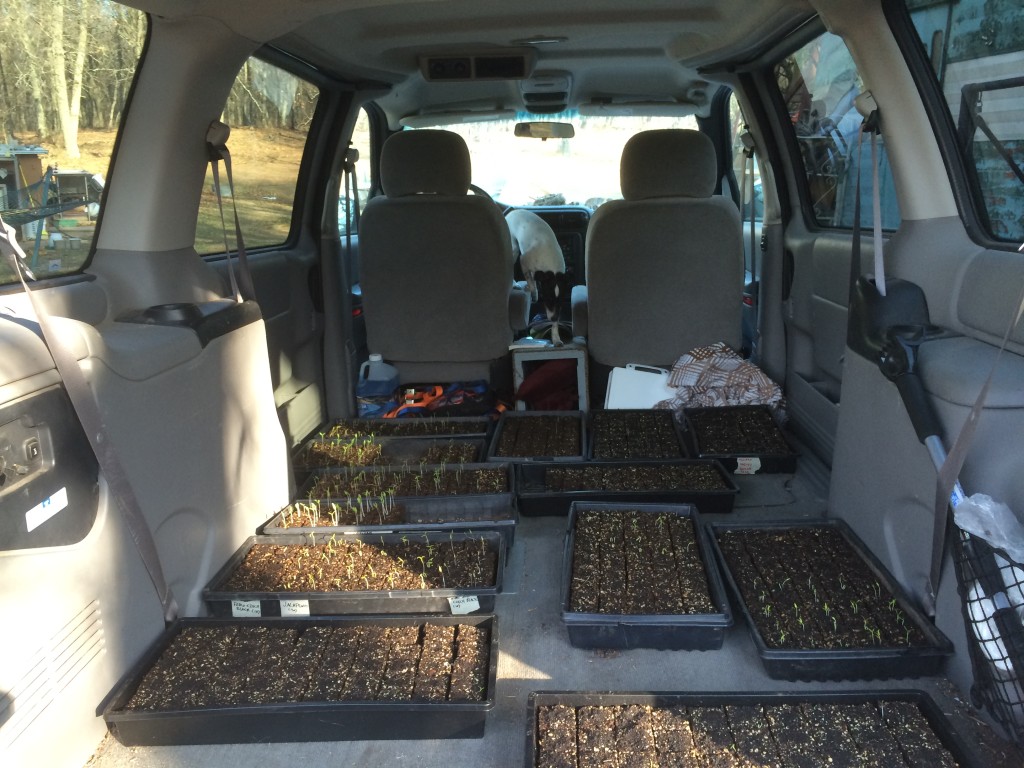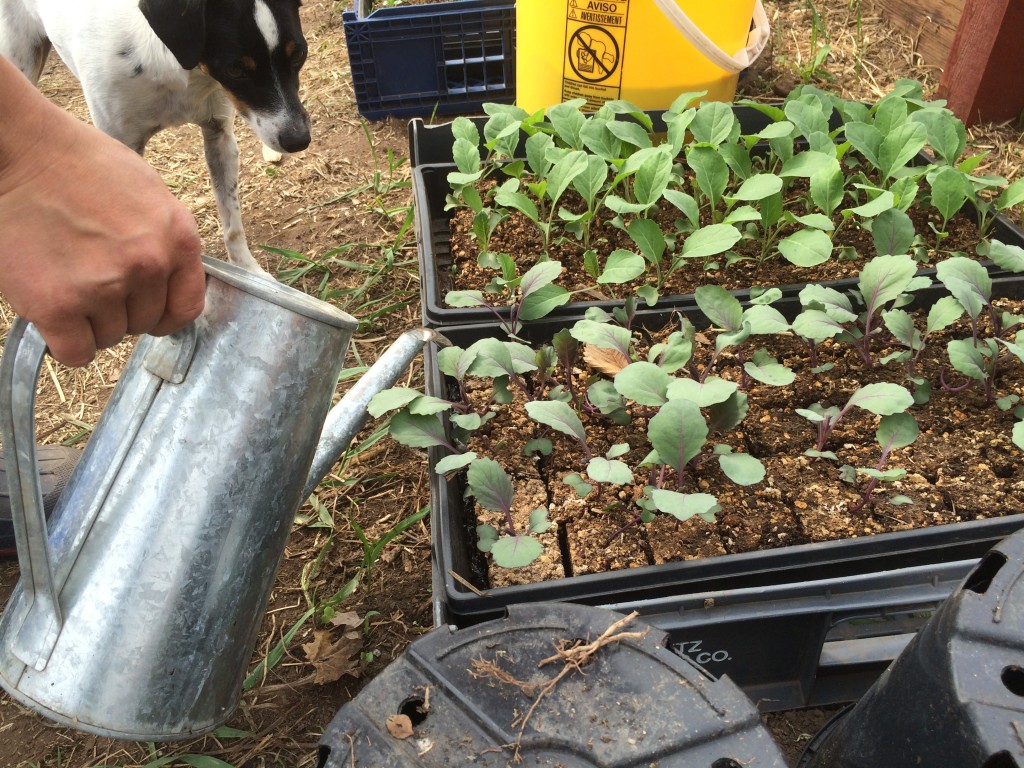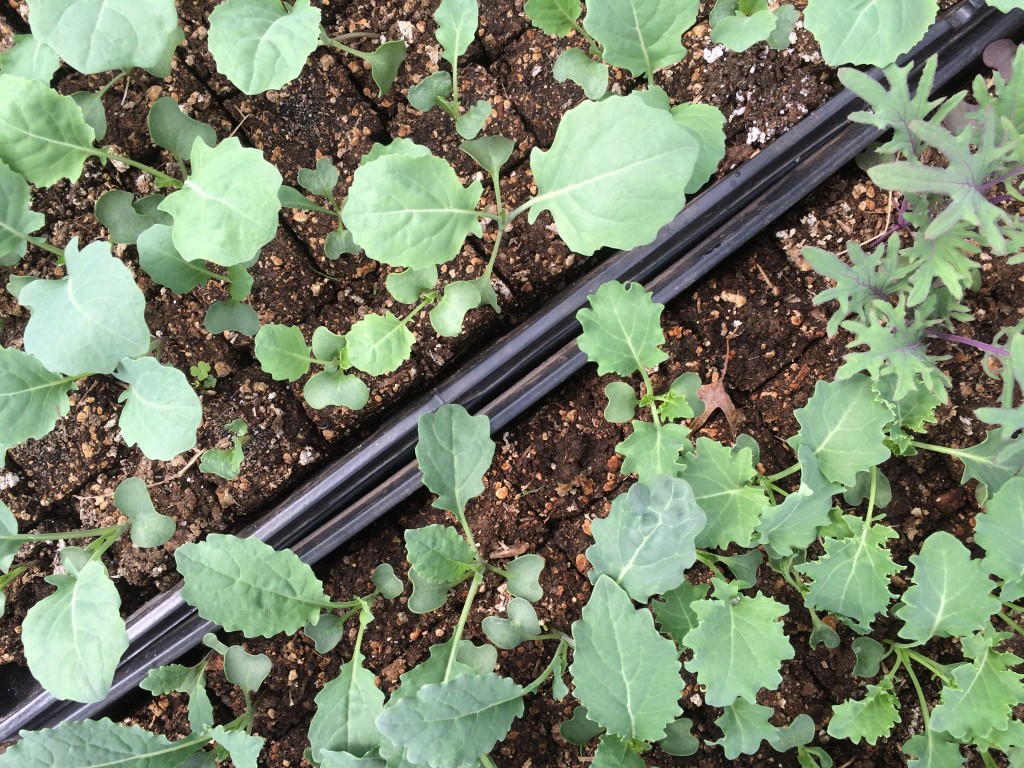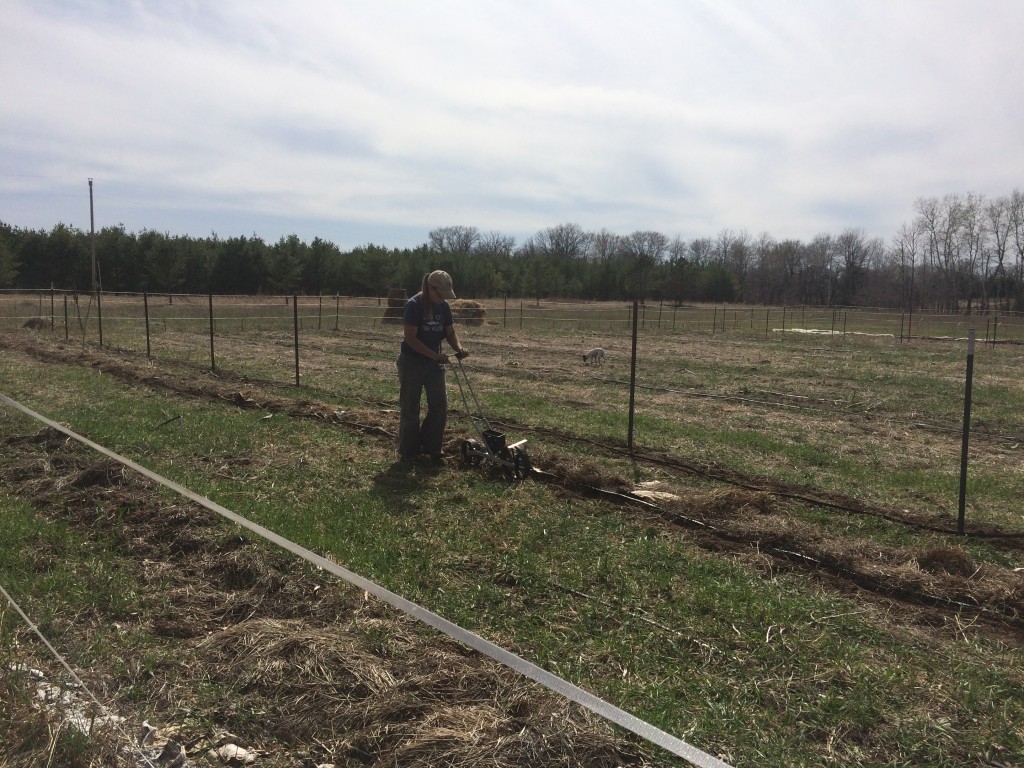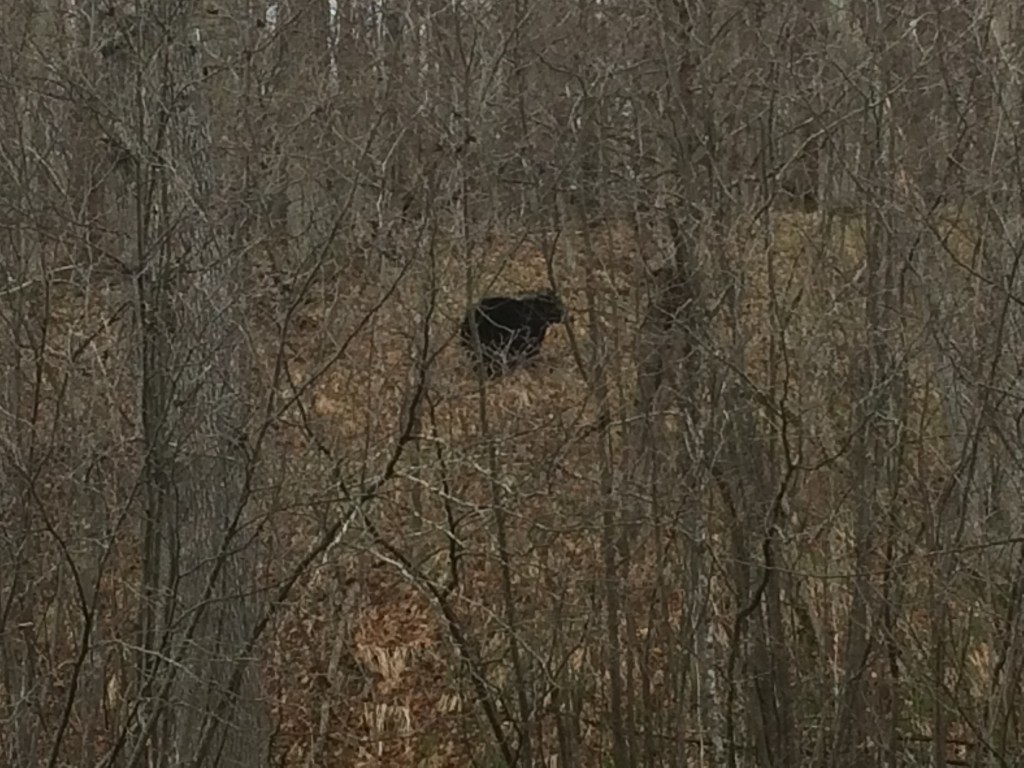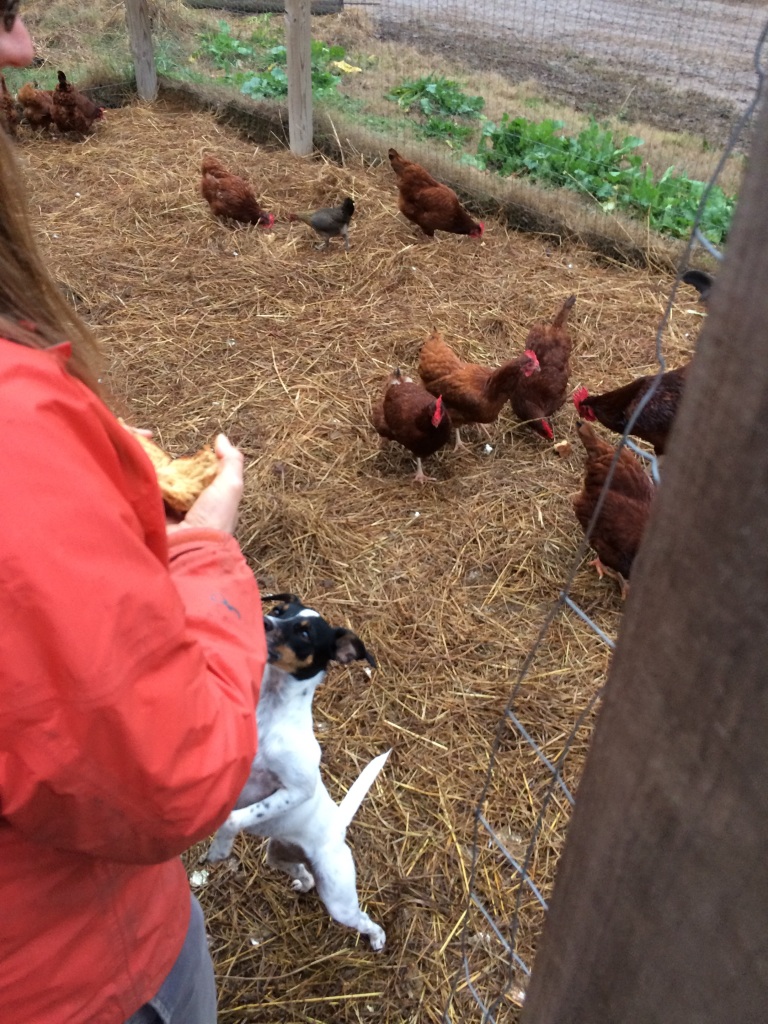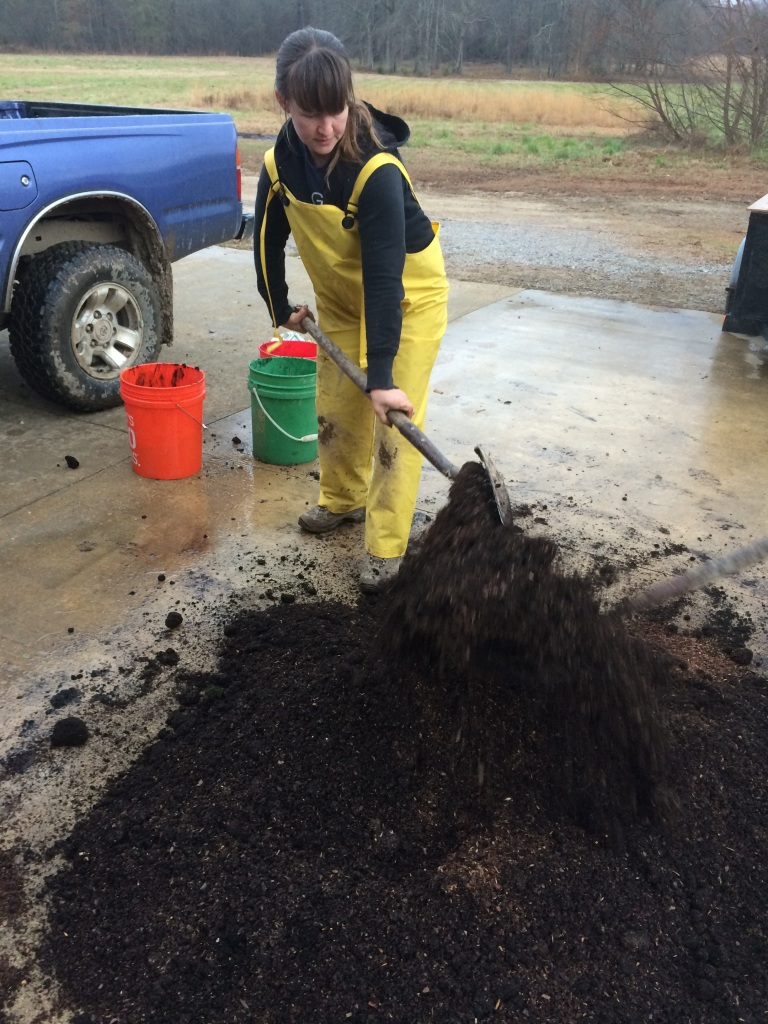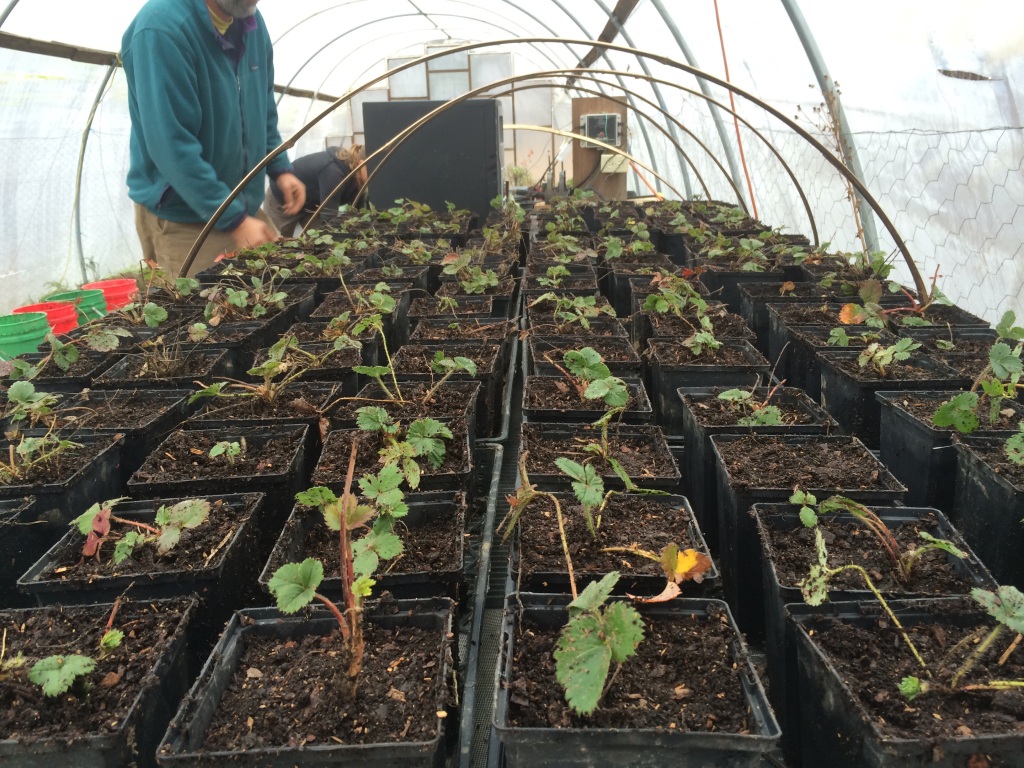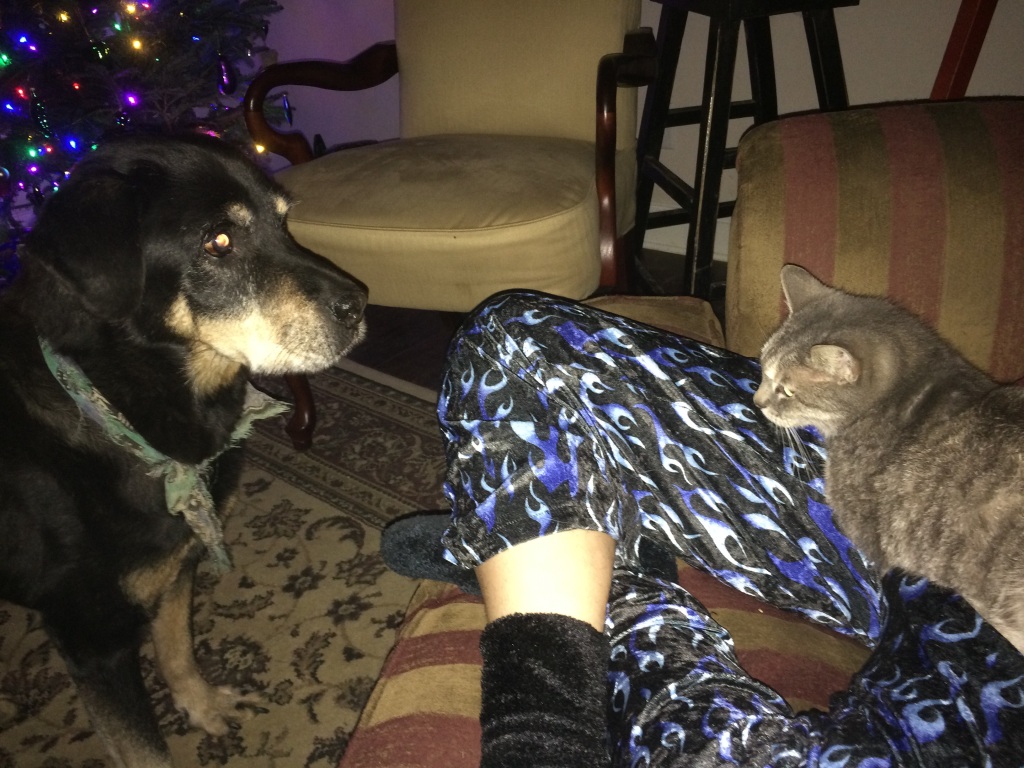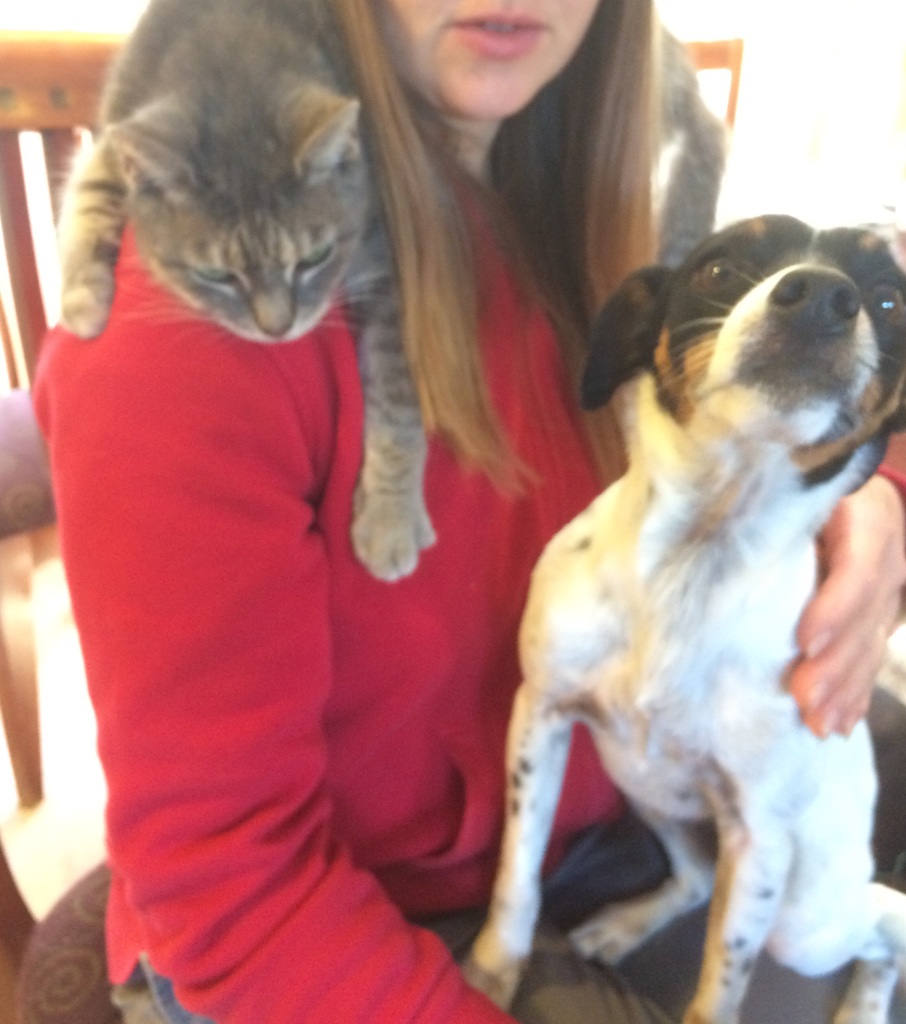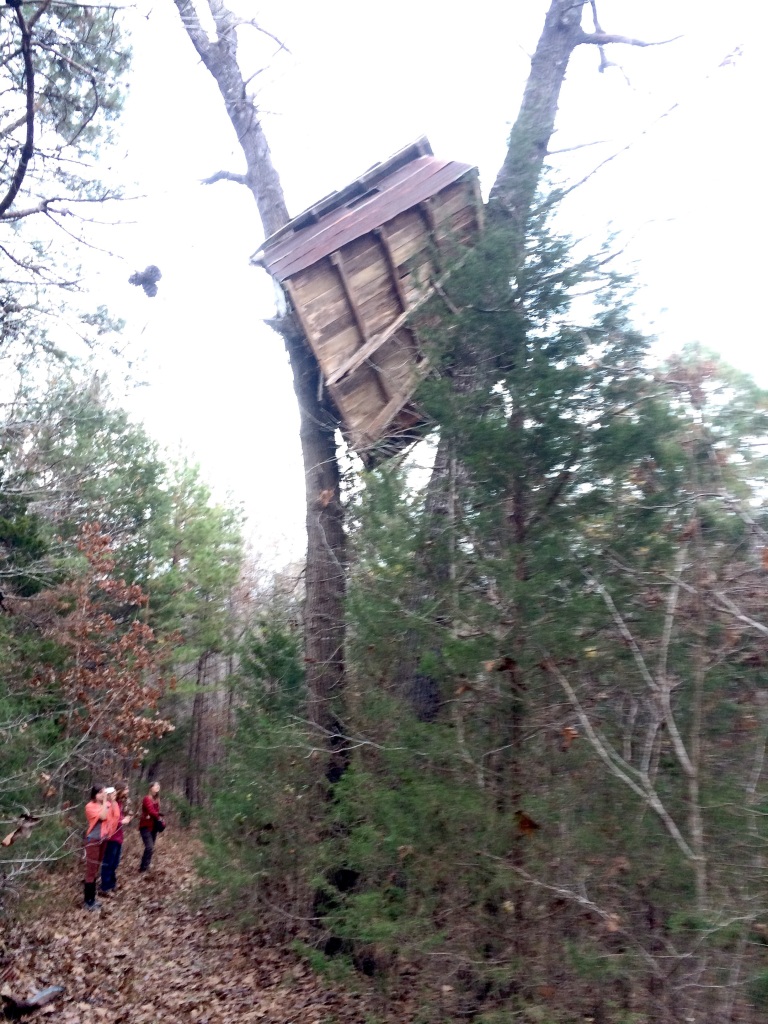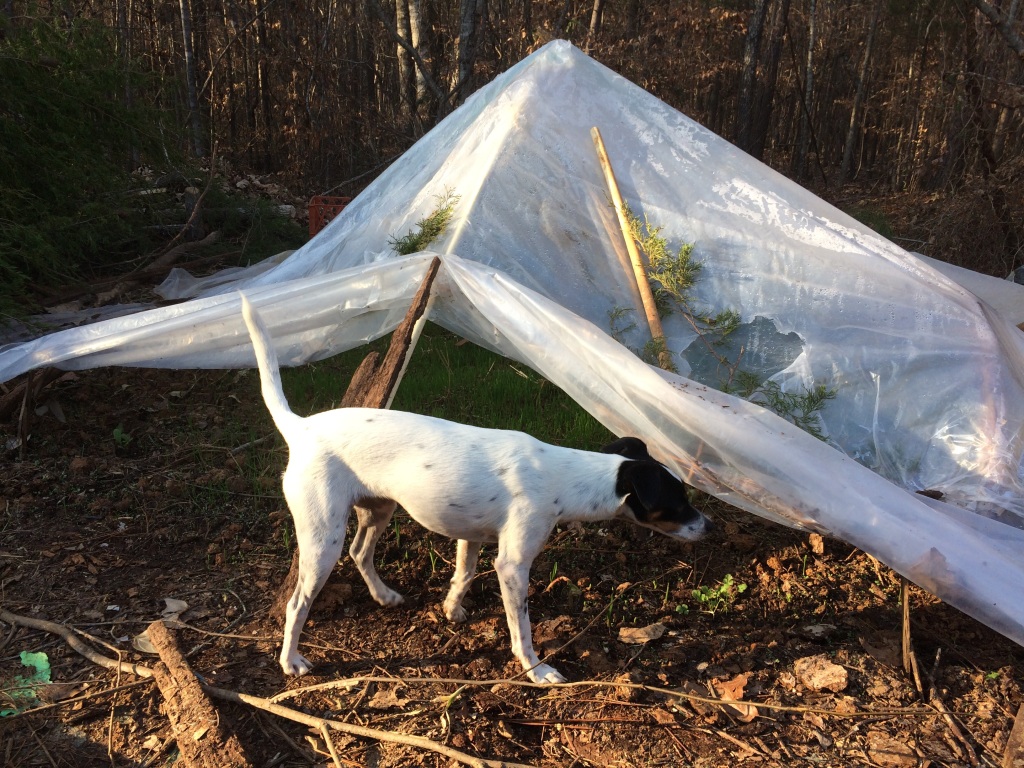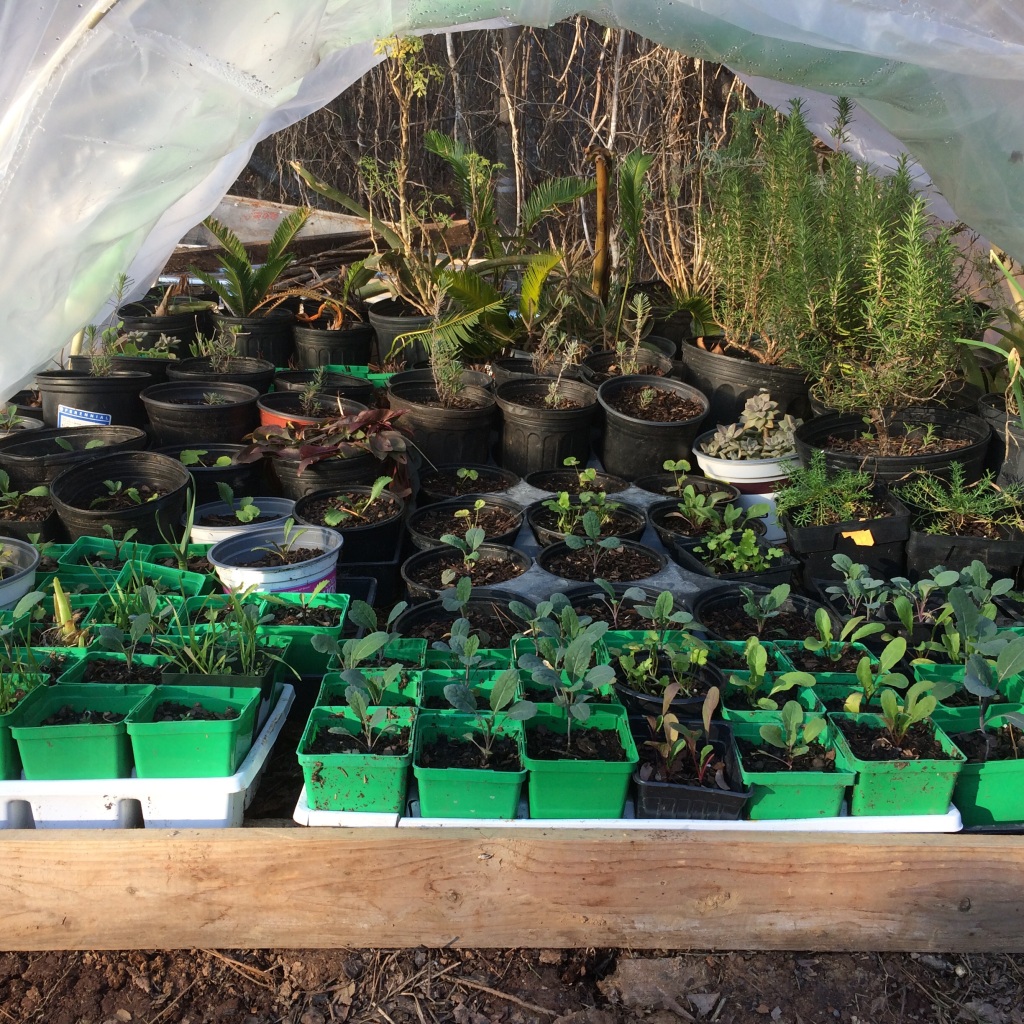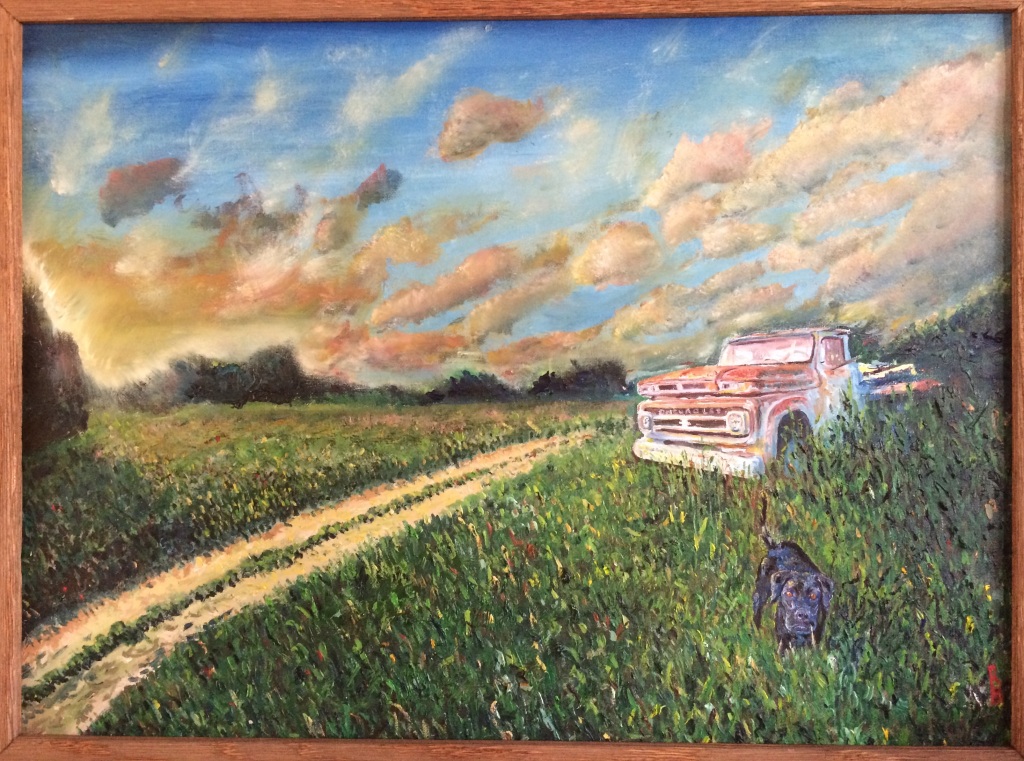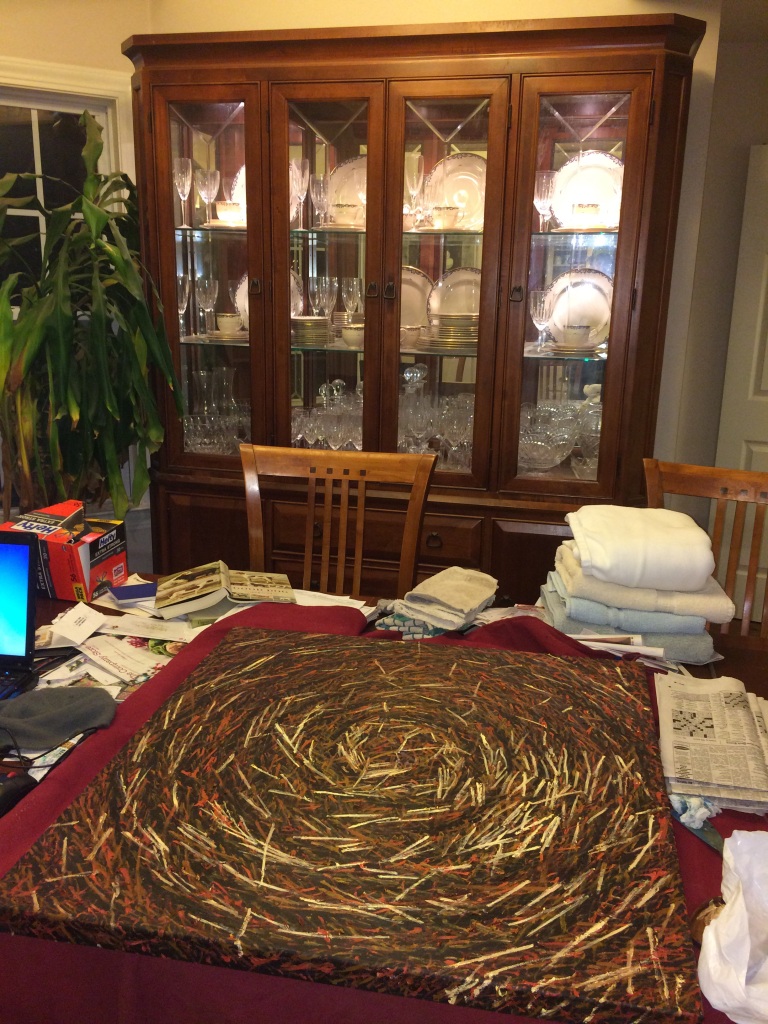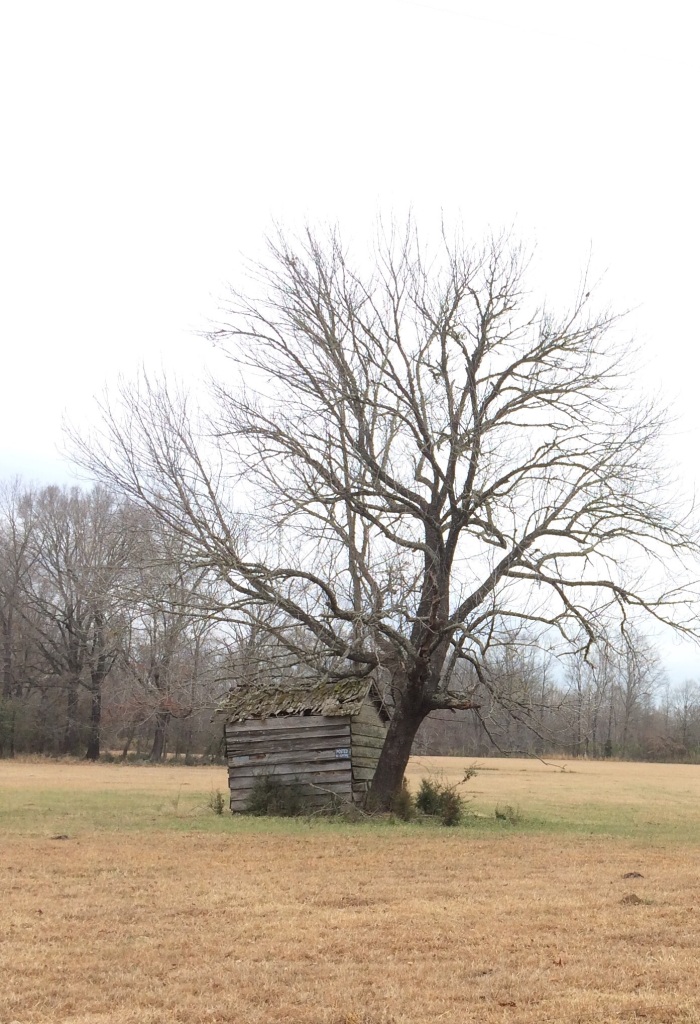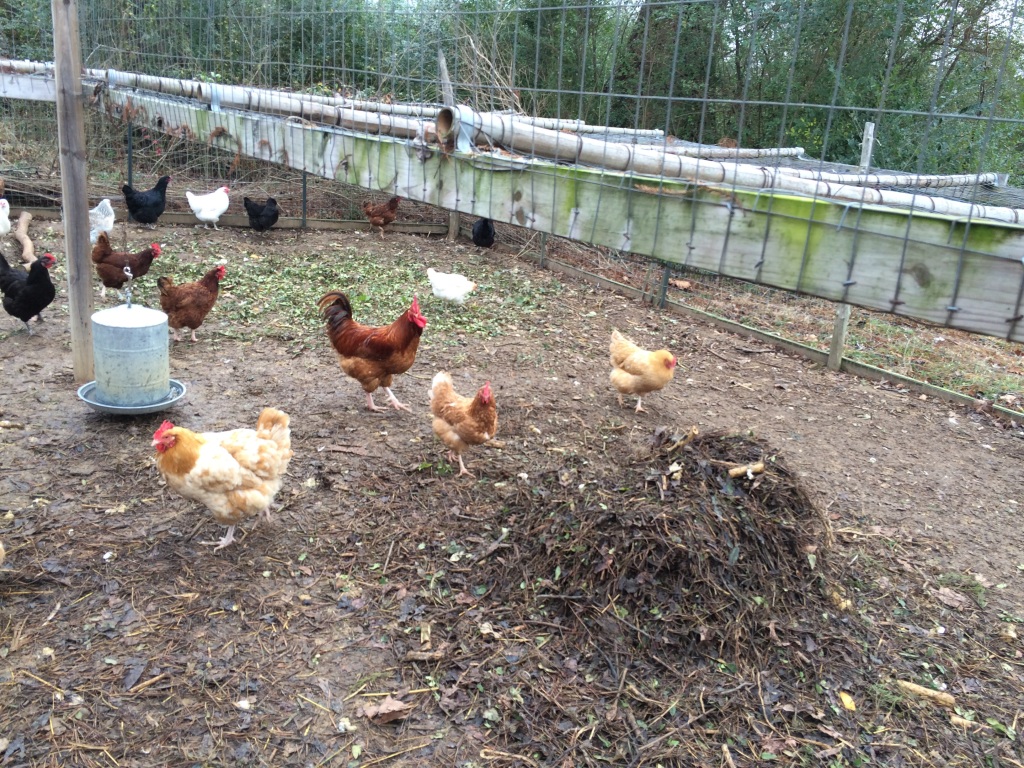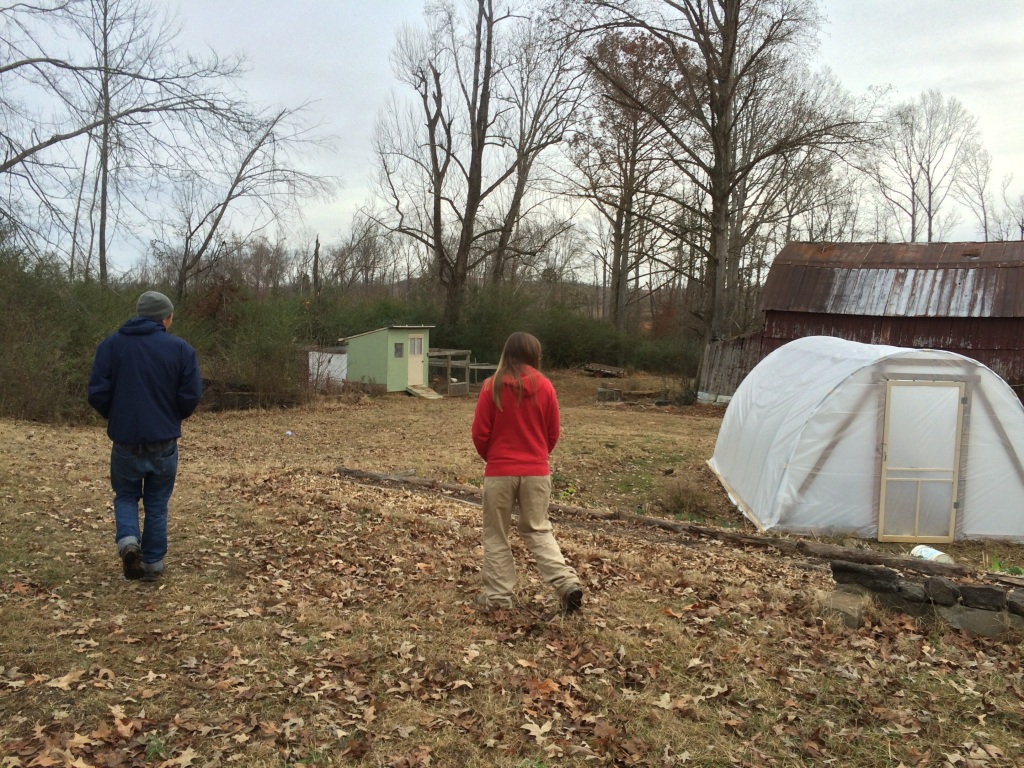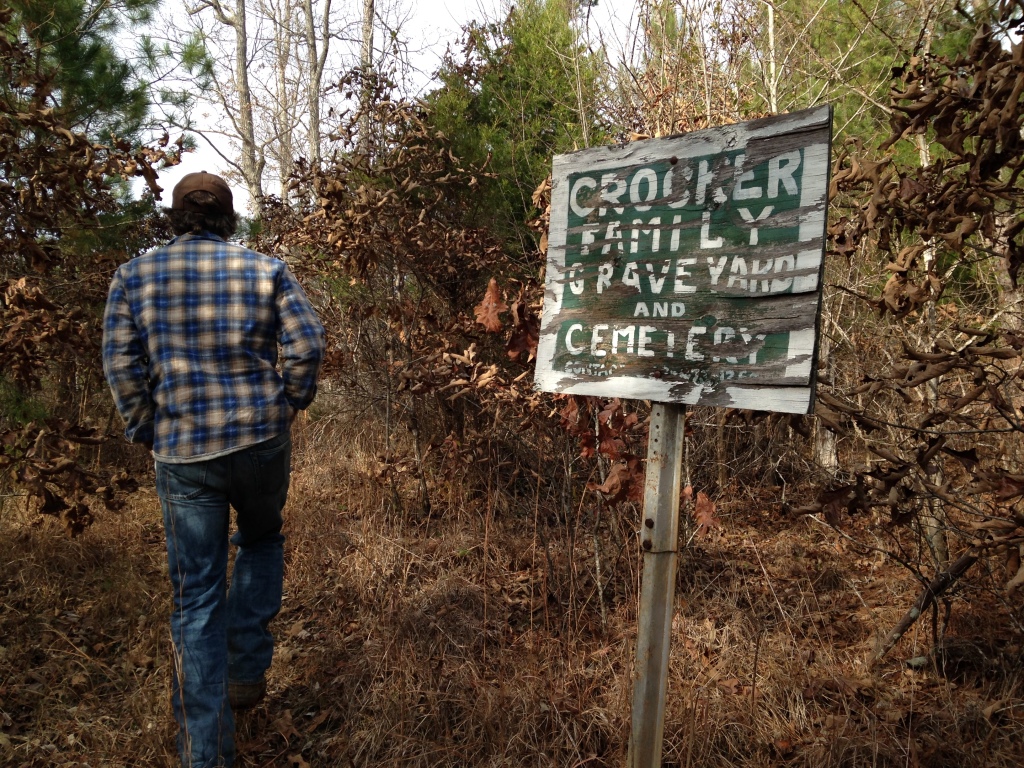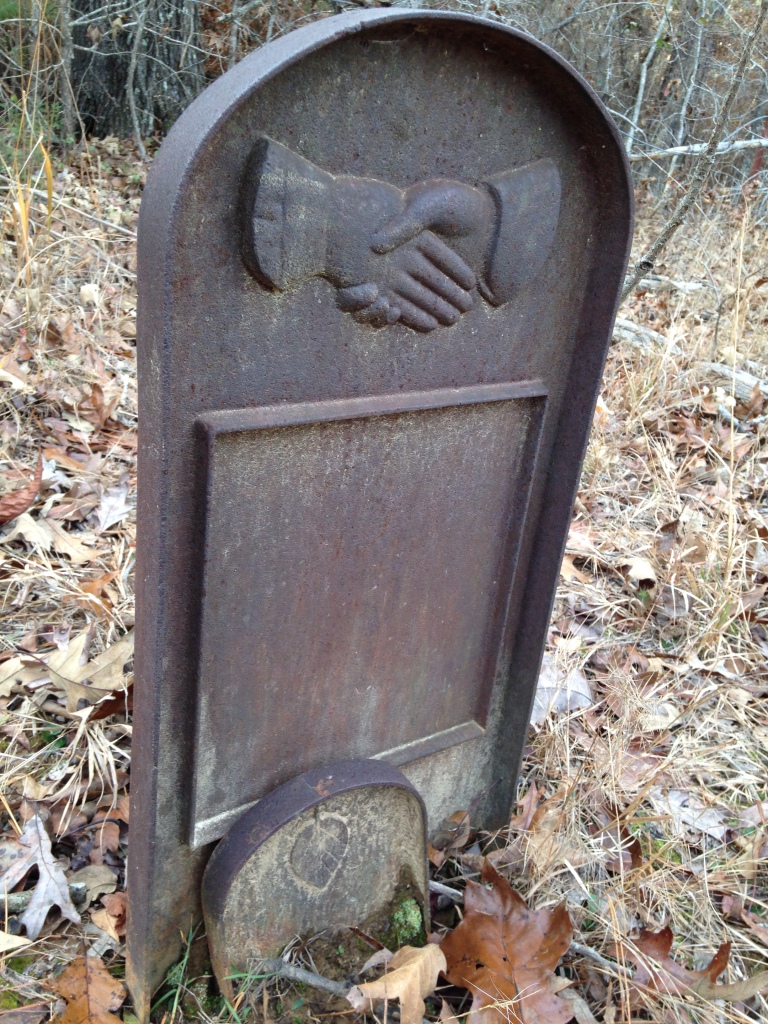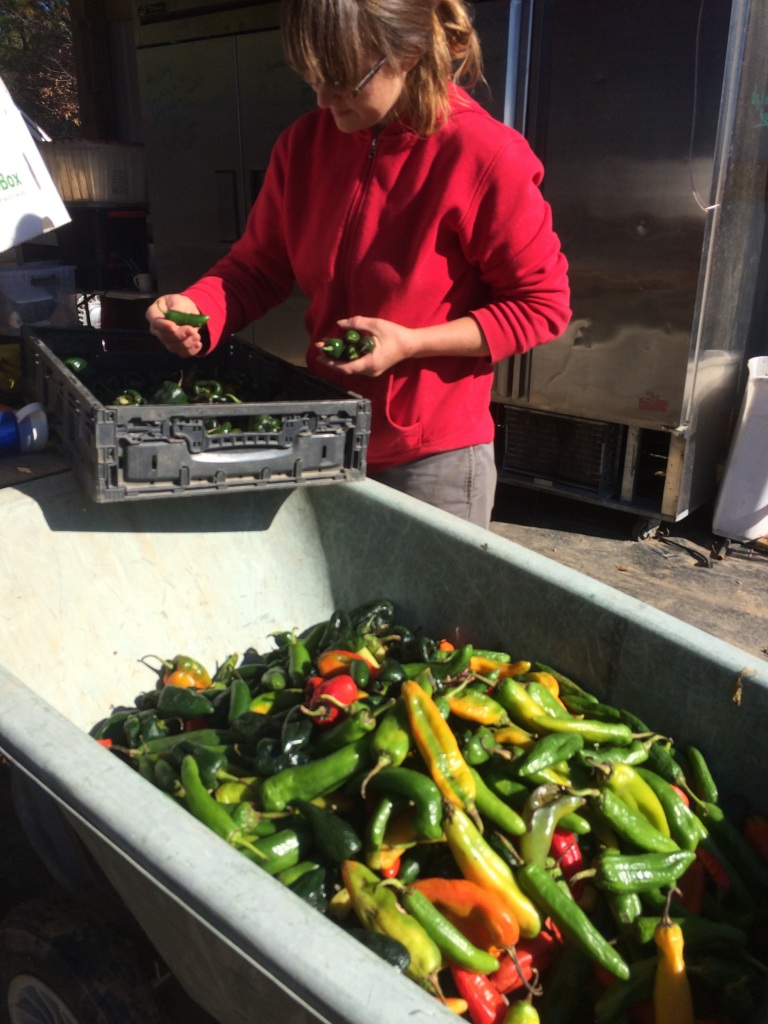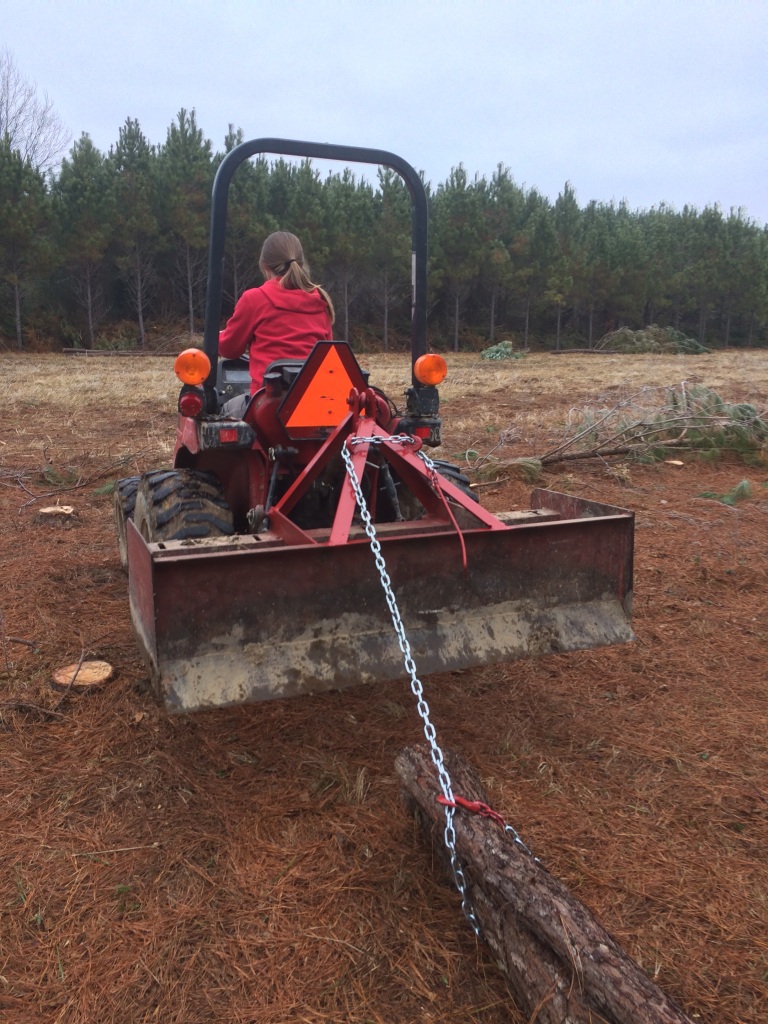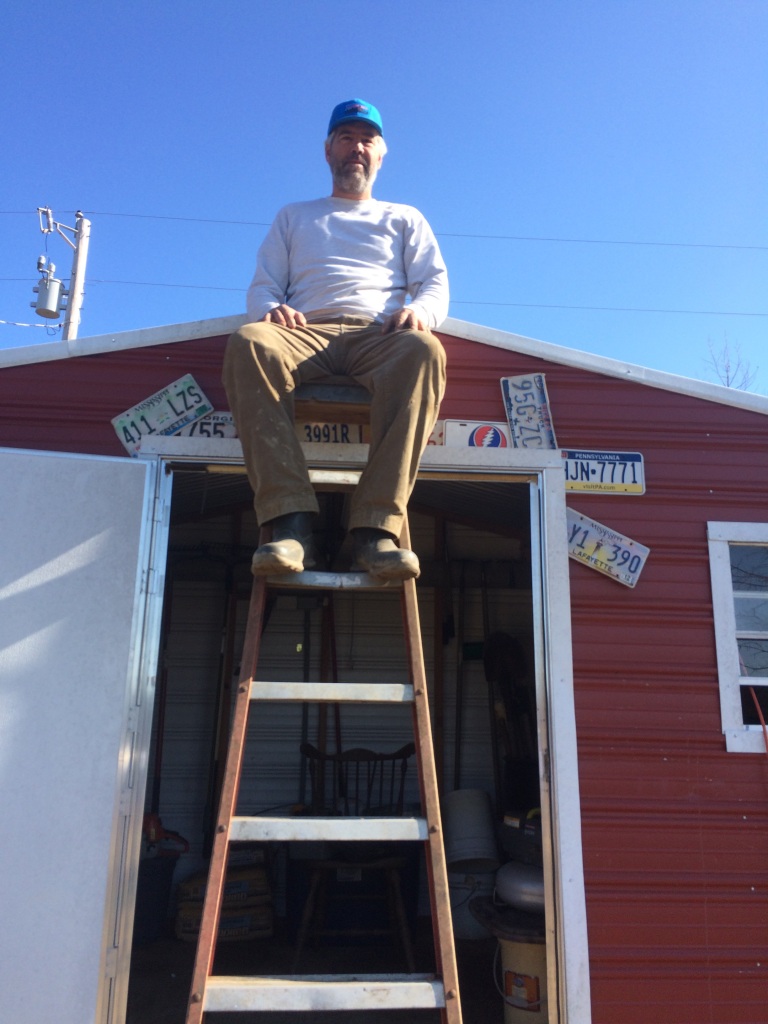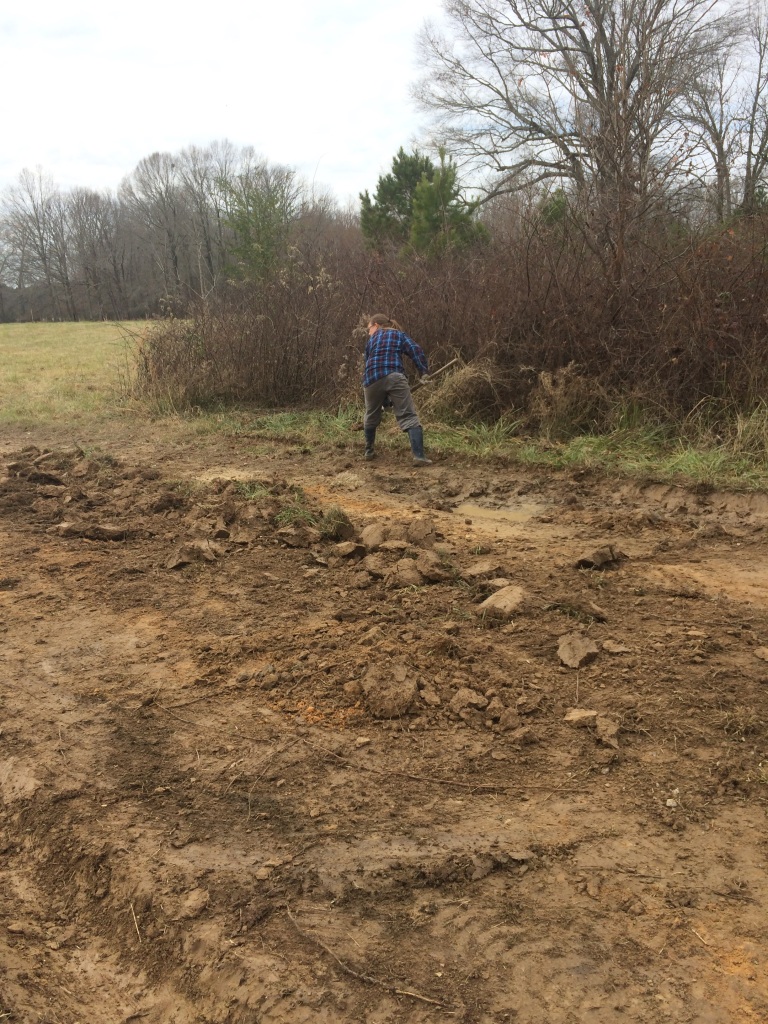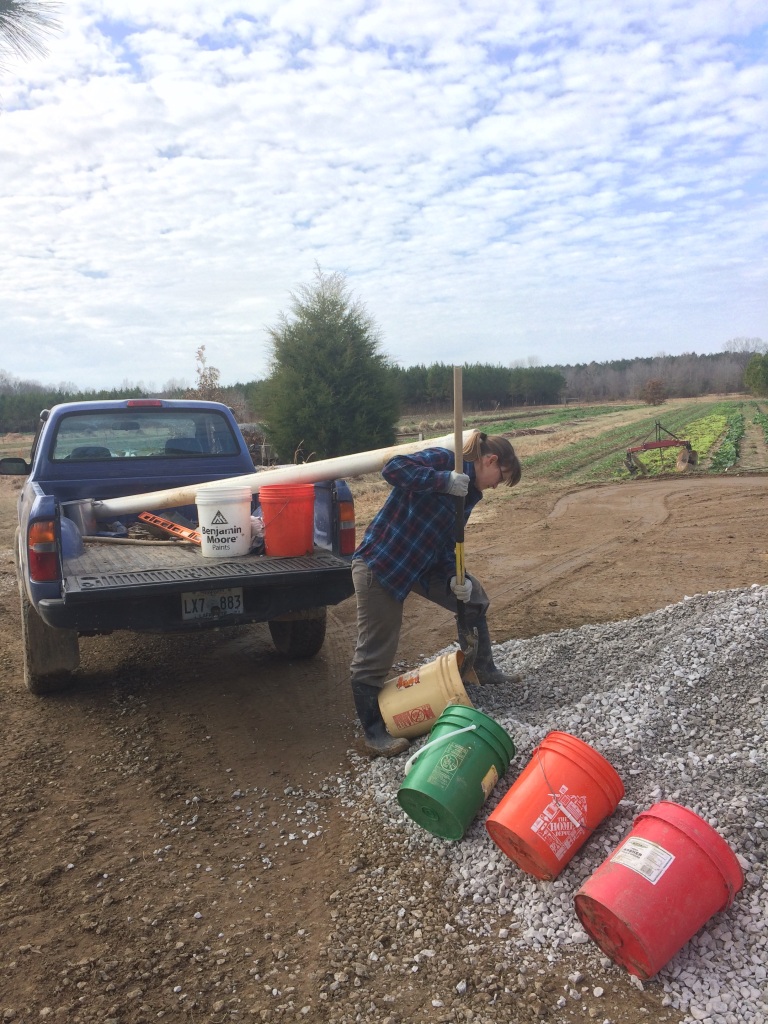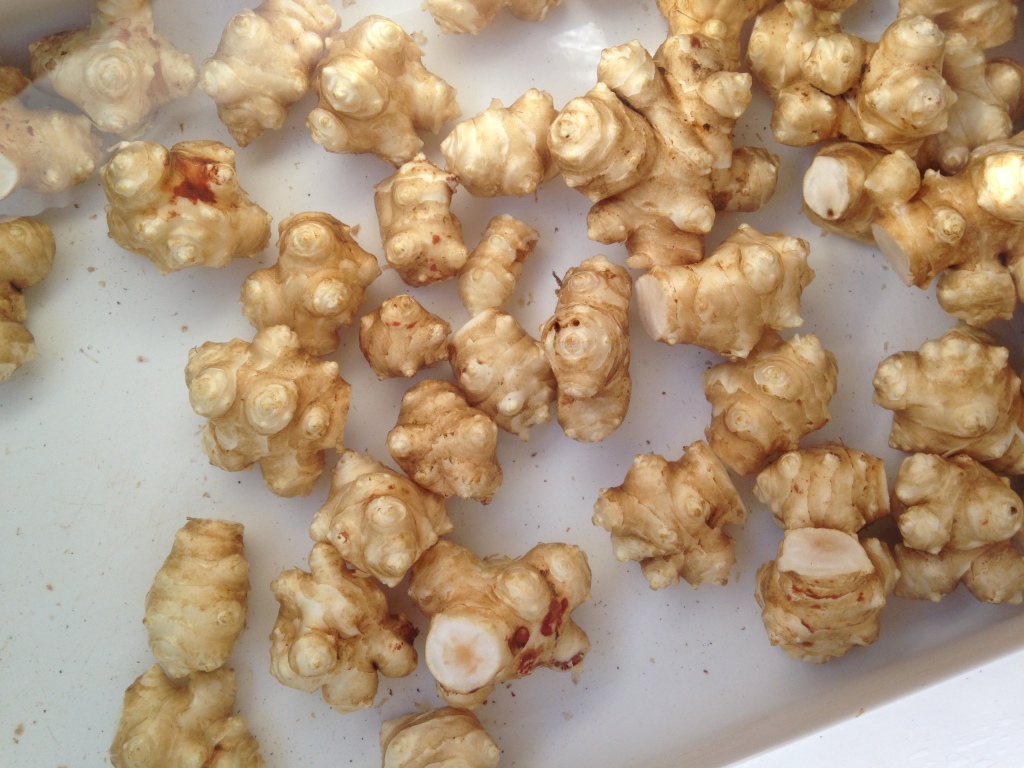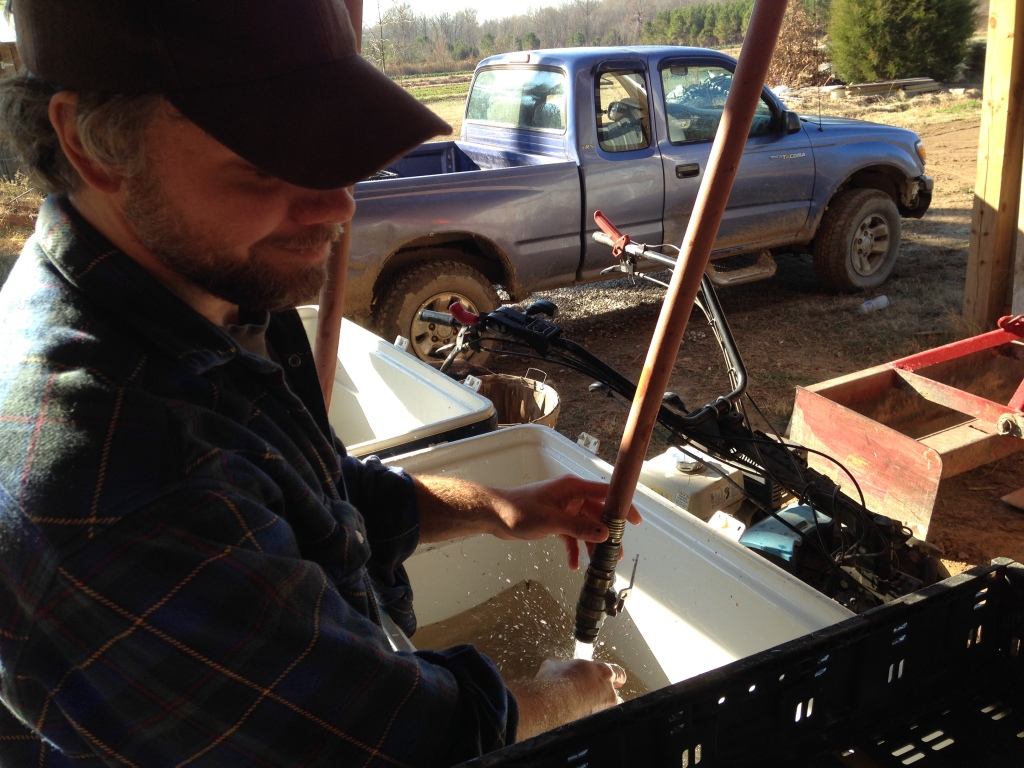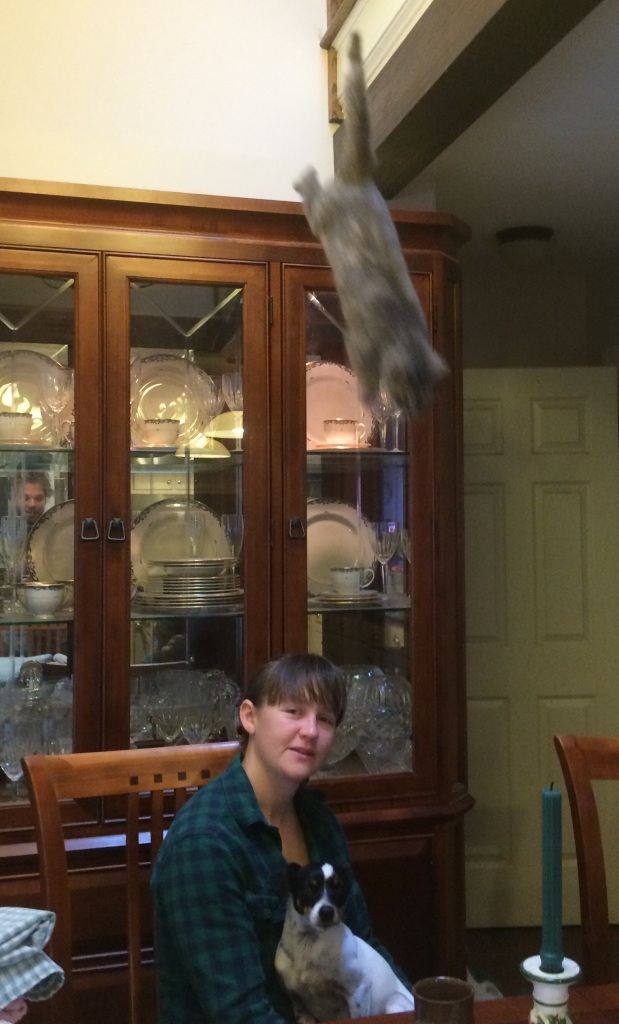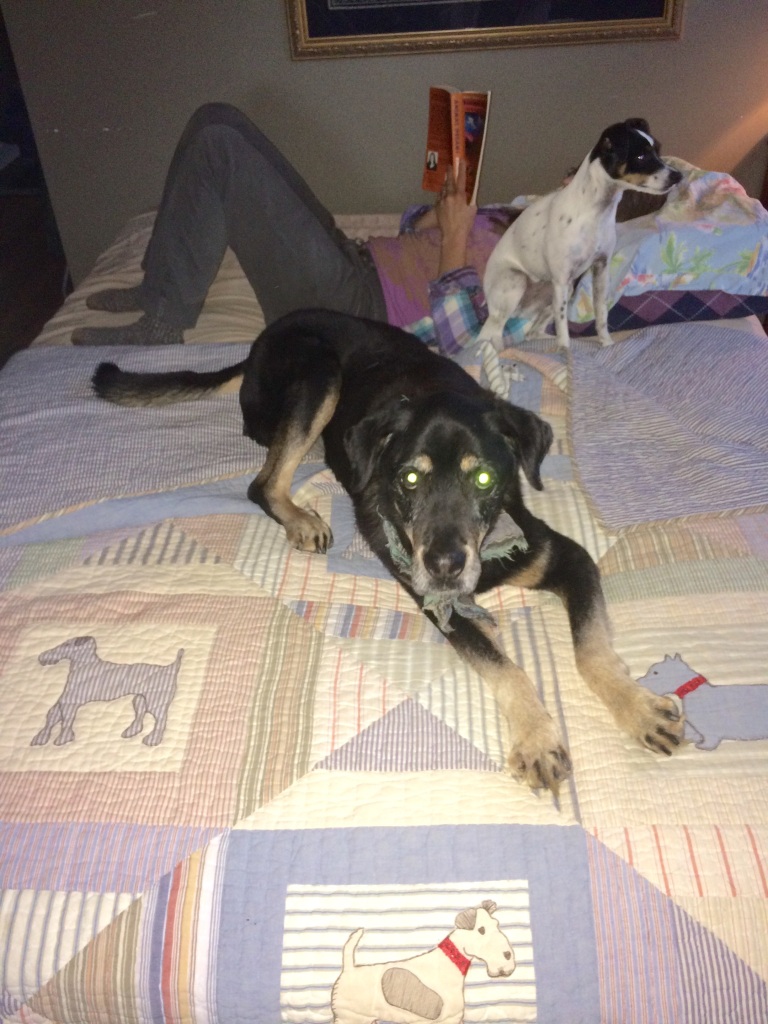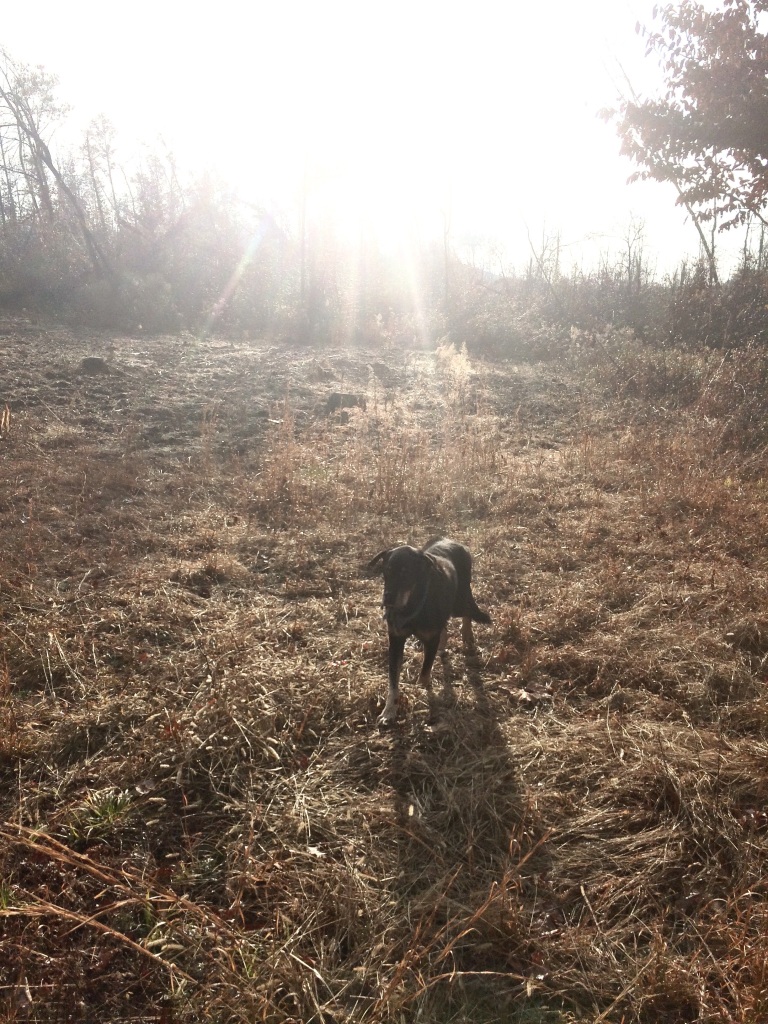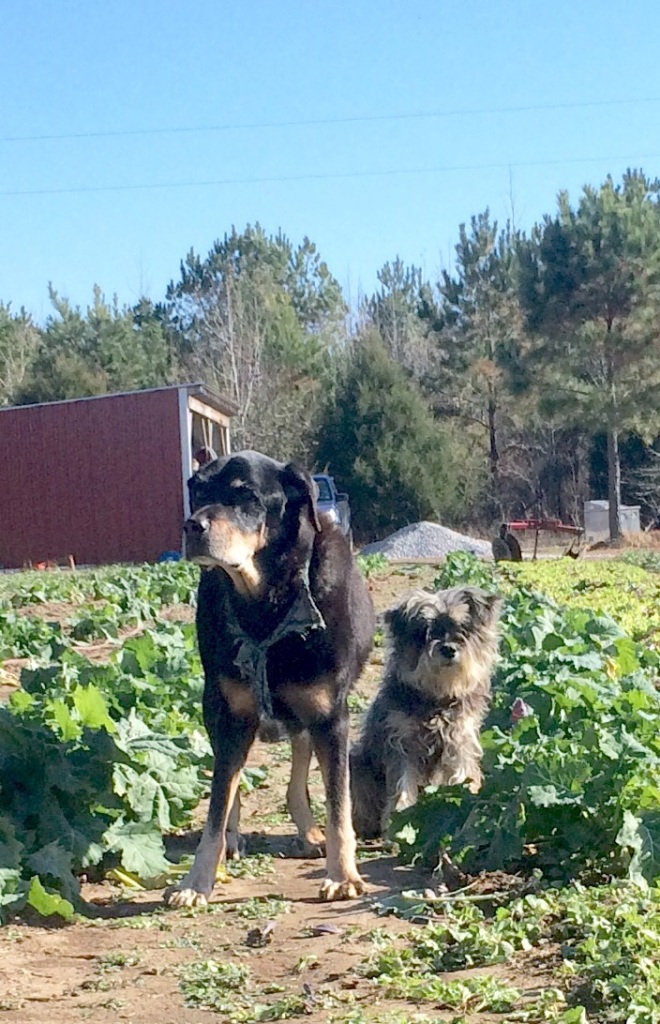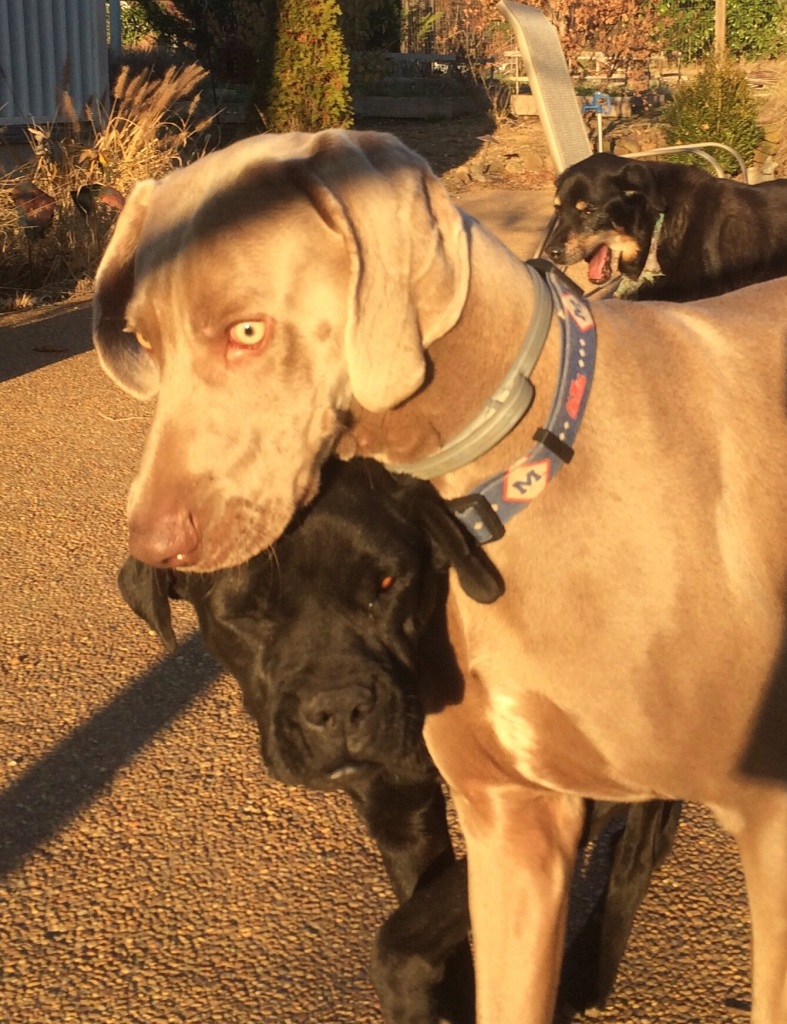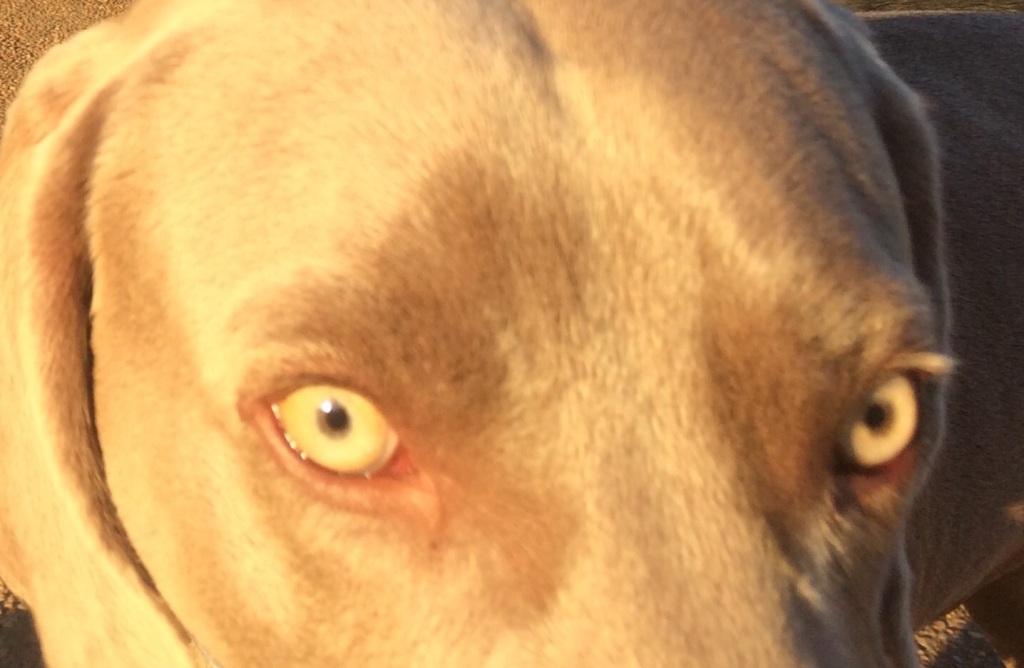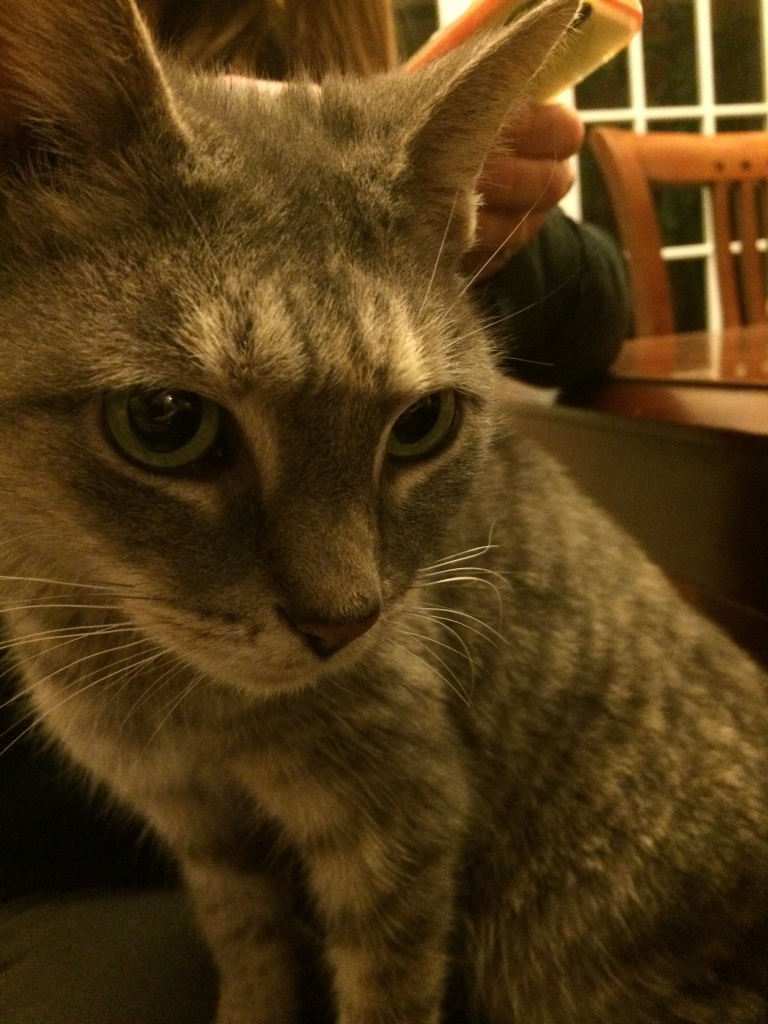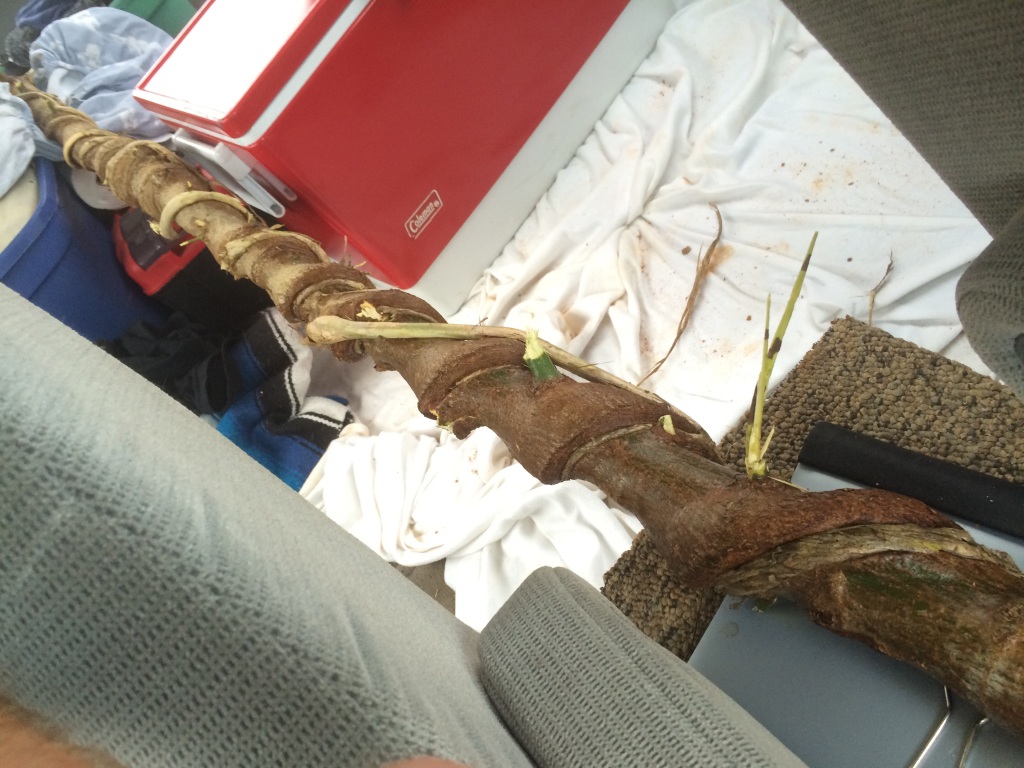Happy CSA Day everyone!
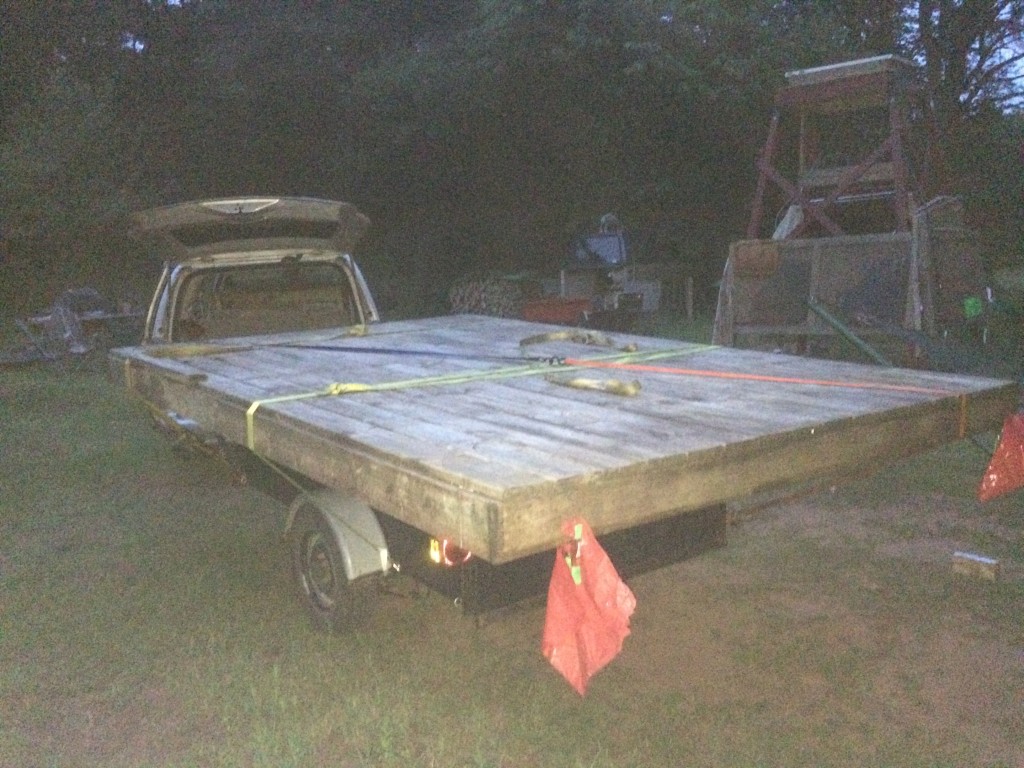
We started off the week with some Craigslist freebies – 80 some gallons of potting soil in nice lidded 5 gallon buckets, some sturdy pallets, a hose reel (for winding up and storing drip tape lines), and a nice wooden 8×12′ deck – which temporarily serves as a little raised area off our bedroom door, and which will eventually serve as ~half of the platform supporting the free 12×17′ screen porch we scored a few weeks back – making a bug-free hangout area to eat meals and sit around outside in.
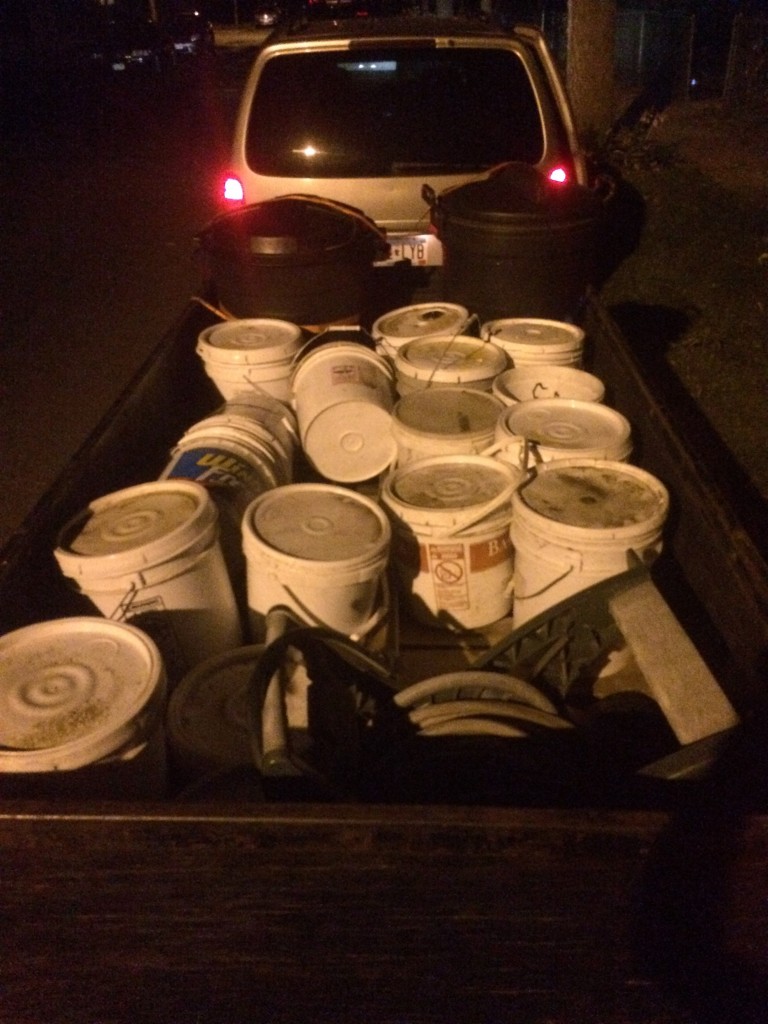
WWOOFer Ariel left to continue her journey Westward on Saturday after the Farmers’ Market harvest was done, and then on Sunday three new WWOOFers and a dog joined us – Alabama Spencer, and “the Brazilians,” Lucas, Cristiane, and Neo the Dog – who are actually from Montreal, although the originally came up from Brazil. They have wonderful accents.
Amusingly, now all 6 people at the farm (the 3 new folks plus Reynaldo and us) ALL last WWOOFed at the same farm down in Texas – Habitable Spaces, where we stayed for two months this winter and built the earth oven.
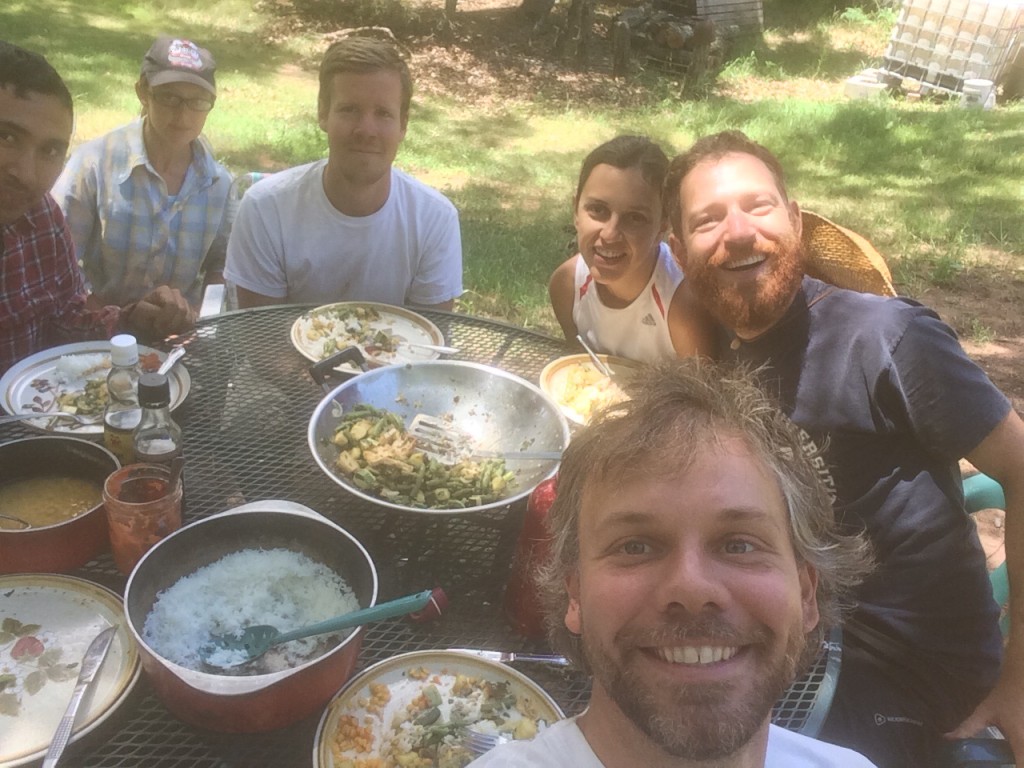
Reynaldo went down there shortly after we left, and then The Brazilians and Spencer came and went, before continuing on their respective roadtrips across the USA, before all converged on our farm. We enjoyed catching up on the goings-ons down at Habitable Spaces – all the dogs and cats and animals, and the good people we’d met there, as well as the progress on the garden we’d helped build, the pizza oven, the bottle-brick shower-house, and everything else.
We haven’t seen the bear lately, but we’ve had a new furry visitor hanging around, scoping out the compost, and hiding out up in our oak trees.
Reynaldo spotted it first, skulking up the driveway – but the next morning when he asked us about a white cat, we half-suspected he’d seen a possum. Or a ghost. But then the neighbor reported a sighting too, and then Kristin and I got a good long look in our headlights – bedraggled white critter with a black blotch face … Kristin got out of the car and tried to talk nice to it – and of course it fled. But that thing ran in a way I’ve never seen a cat move, launching into the woods in a burst of flat, arcless springs, wasting zero energy on unnecessary vertical lift. It was the way it moved, not its wild fur or stunted frame, that made it perfectly clear how fully feral it was.
The next sighting was as it ascended a tree with the same uncanny speed, after Widget had spotted it. I tried talking nicely to it to demonstrate we were friendly, and Kristin left an offering of dog food down at the tree’s base.
We haven’t seen it since.
In the field, things are moving along nicely – it seems amazing how quickly things have blown up and outward – the squash are all monsters, taking over neighboring rows like the Blob, burying the paltry little okra plants, weaving through the pea trellises, climbing up the fence and shorting out the electric deer defenses … it’s pretty wild, I’ve never seen them so vigorous.
I think the regular rainfall we’ve been getting is a large part of it, in addition to the additional organic matter (hay & compost) that we’ve been working into the soil where they’re planted. We ate our first potatoes, beets, rutabaga, and eggplant of the season – early harvests ahead of the main crops.
The beans are doing much better than last year – the Mexican Bean Beetles did much less damage (possibly thanks to the bug juice we sprayed), and we stayed on the weeds better this year. The cucumbers surprised us today with a bountiful crop ready to harvest unexpectedly, putting out far more than we expected, with many more on deck.
The tomatoes seem vigorous and happy, with many green tomatoes on the plants – we spotted the first red ripening one yesterday, so more should be on the row soon, if we can get a couple of hot nights (this week the nights have been cool, down in the 50’s, which stalls ripening). The rows of pepper plants look healthy but many aren’t flowering much yet, which we’re going to address with some Epsom sale foliar spray, in hopes that a dose of Magnesium will kick start them.
We weeded several rows and weed-whipped the raspberry patch (that we started from free Craigslist plants last year) into shape, mulched a bunch, transplanted out some fall broccoli & Chinese cabbage, watered the baby plants that needed extra, and bug hunted for cabbage worms, potato beetles – and vine borers.
We’re now past hunting for the vine borers’ eggs, because the ones that slipped past our duct-tape patrols have hatched and burrowed into the stems to feed and grow. Instead, we hunt for their “frass” – the sawdust-like excrement that the extrude from the stalks of their squash victims. Kristin spent an hour or two last night stalking through the rows with killer intensity and a razor-sharp fillet knife. Where frass was spotted, she would slit the plant open and scrape out the disgusting oozing excuse for a worm out, preventing it from killing the entire plant later in the season, once it was fat enough to block all nutrients from the roots. She got almost a dozen of the little jerks.
It was a good week.
Week Seven Box
*
- Purslane – The tastiest and most nutritious weed on earth. If you have a garden, you may know and hate this stuff – but give it another chance! We’re not just trying to fob our weeds off on ya’ll, I swear – this stuff is amazing, and we eat it regularly.The taste is similar to spinach a little, but a touch lemony. Purslane aficionados prefer eating fresh young plants, especially young leaves and tender stem tips. Use it in salads or on sandwiches instead of lettuce or pickles. Purslane can also be cooked as a potherb, steamed, stir-fried or pureed (but it tends to get a bit slimy if overcooked.) It can be substituted for spinach in many recipes. We like it as a fresh side salad, and WWOOFer Reynaldo likes to chop up the whole thing stems and all and make it in eggs, and WWOOFer Ariel added at the very end of a veggie sautee to good effect. Let us know how it works for you!
*
Read more about this globally-popular plant here and here – and recipes here.
* - Garlic – We are sad and sorry that this is the only head of garlic we have for you this year. We were SO excited for what we thought was going to be a great garlic year – we used a local bio-dynamic seed crop, carefully created a rich soil bed with lots of compost, and mulched it thickly last fall … but then the voles moved into the patch and overwintered there, transforming our expensive, and much-anticipated crop of garlic into baby voles and grandbaby voles. (This lineage beneath our feet in the field is why the wild White Cat needs to be our friend and hang out.) We have a defense plan for next year – we’ll be planting the entire garlic bed within a trench of buried hardware cloth, and cover the top with still more of the same …
* - Early Jersey Wakefield Cabbage – great for cole slaw or homemade sauerkraut. We like sauteeing it in butter, since we aren’t big fans of traditional boiled cabbage, but your tastes may vary. It’s the easiest veggie to ferment, just add salt!
* - Pickling Cucumbers – Not just for pickling – they are great for eating fresh, but they’re also the ideal kind for making pickles. (The slicing cukes – which are no good for pickling – will be coming soon.)
* - Summer Squash Zucchini – A couple green types, a couple yellow, and the big boxes got Pattypan ones as well – the things that look like Pac Man ghosts.
* - Onions – you know how these work.
- Green Bean Medley (even though some are purple, they’re still “green beans” … )
*
- Herbs – Mint & Oregano – you can tell them apart by the smell! Mint’s great for tea or as flavoring in a dish. Oregano would be great sauteed with your zucchini. It dries well, so you can hang it somewhere dark and dry and then use it later.
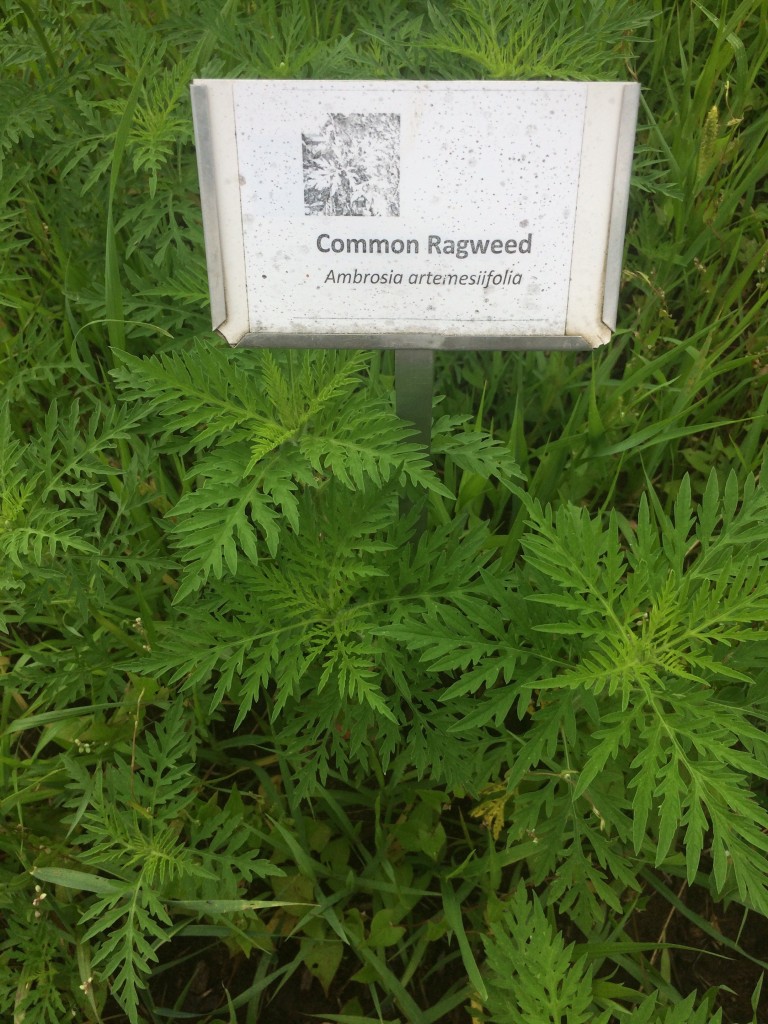
*

